

ACKNOWLEDGED BY THE INDUSTRY AS THE LEADING MAGAZINE



ACKNOWLEDGED BY THE INDUSTRY AS THE LEADING MAGAZINE
How quality and service have helped in four decades of growth
Repairers vital to EV transition
The ADAS code explained
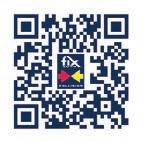
THINK GLOBALLY, ACT LOCALLY

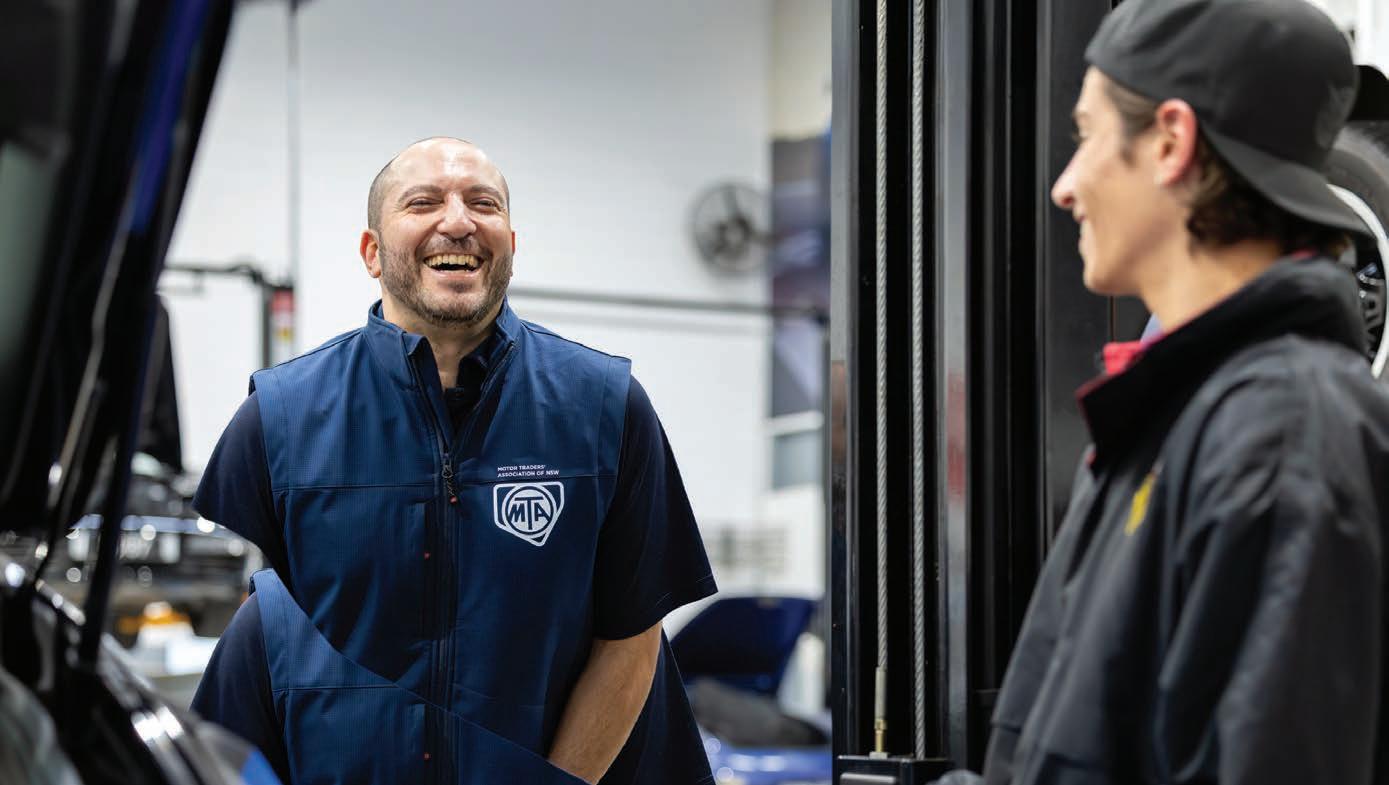
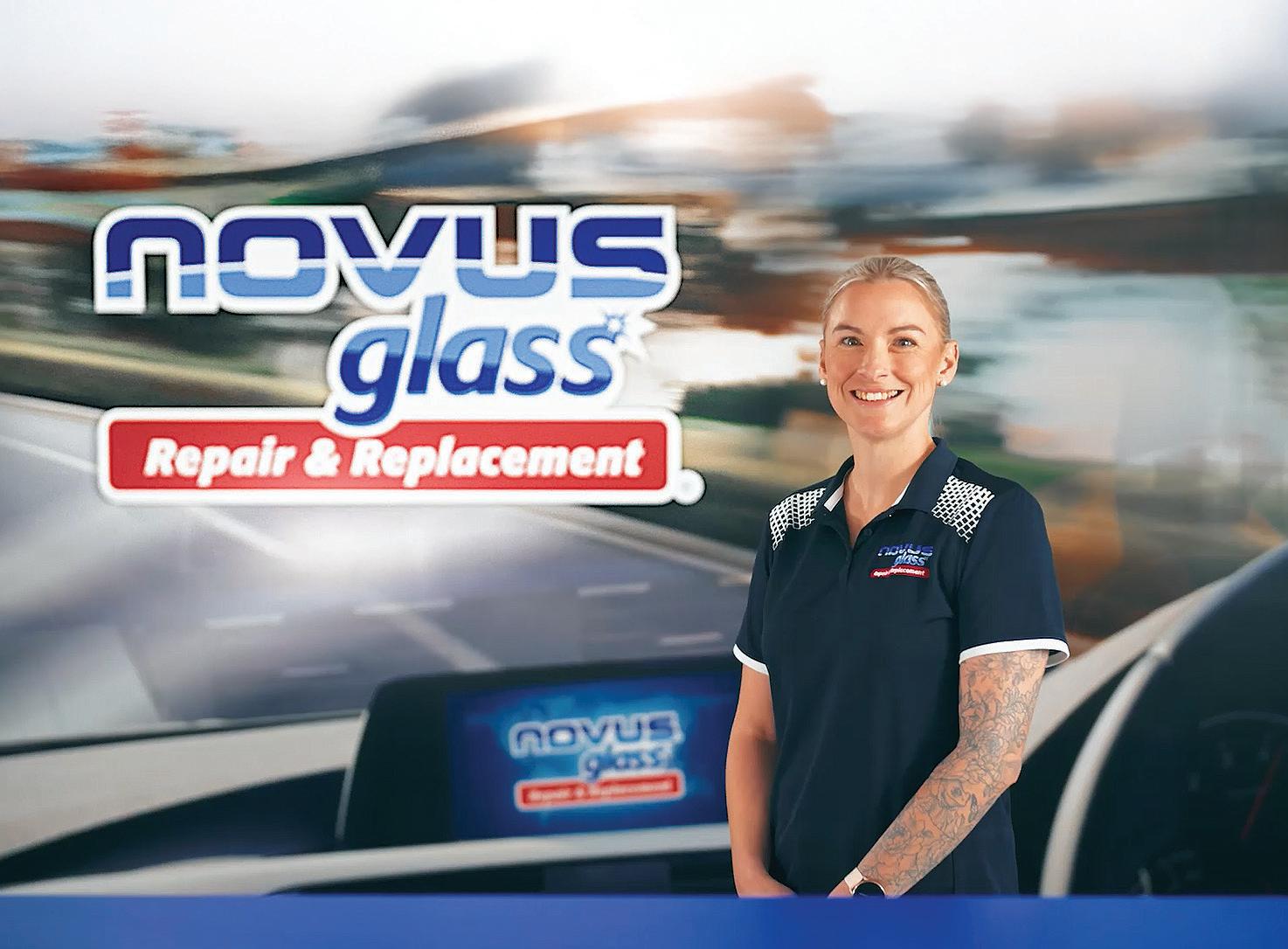
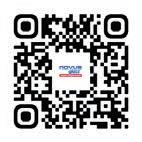
Fix Auto and NOVUS Glass are proud members of the Fix Network family of brands and are expanding rapidly across Australia. With a growing footprint in both the collision and auto glass sectors, Fix Network is helping local repairers tap into the power of a global network.
When you join, you’re not just aligning with two industry-leading brands — you’re becoming part of a trusted, collaborative network powered by scale, defined by quality, and united by shared success.
At Fix Network, every workshop remains independently owned and operated — but you’re never on your own. Our global infrastructure is built to help local businesses succeed. Whether you’re looking to open new revenue streams, strengthen relationships with key insurance partners, or gain access to the same infrastructure your corporate competitors do — we’re here to support your growth without compromising your independence.
Franchisee partners benefit from:
• E stablished insurance and supplier relationships at both national and global levels
• G lobal infrastructure supporting over 2,000 businesses
• Industry-leading operational and training support
• A collaborative network of likeminded operators
• Strategic marketing campaigns that drive business locally and nationally
• Strong brand recognition and customer trust
• Innovative technology and tools
Thinking beyond panel? Glass could be your next move. In today’s rapidly evolving automotive industry, diversification isn’t just a smart strategy — it’s a necessity. If you’re a body shop owner focused
“Having our own glass and calibration technicians saves us time and brings more profit into the business. I would definitely recommend operating both franchises side by side.”
James Robertson, owner of Fix Auto and NOVUS Glass Gladstone
solely on collision repair, now is the time to consider expanding your services and future-proofing your business.
NOVUS Glass is a globally recognised leader in auto glass repair and replacement, offering independent panel shops a clear avenue for diversification.
Why add glass repair and replacement to your panel shop? As a shop owner, you already understand the importance of fast turnaround times, quality workmanship, and customer satisfaction. Now imagine extending those strengths into the auto glass space with a brand that understands both the business opportunity and what you need to succeed.
NOVUS Glass is not just another service provider — it’s a trusted brand built on the philosophy: “Repair first, replace when necessary.”
Adding NOVUS Glass to your panel shop allows you to tap into a growing market segment without starting from scratch. You’ll retain control as a locally owned business while gaining the competitive edge of a globally recognised brand with the infrastructure to support your growth.
Thinking about the next step for your business?
Whether you’re looking to grow your existing panel shop or explore new
revenue opportunities, becoming a franchisee partner with Fix Auto and/ or NOVUS Glass offers a proven path forward. With the strength of a global network behind you and the freedom to remain locally owned and operated, you’ll be well-positioned to diversify, grow, and future-proof your business in an evolving automotive industry.
Franchisee insight:
James Robertson, owner of Fix Auto and NOVUS Glass Gladstone, said:
“We were initially looking for a windscreen franchise to supplement our paint and panel shop. We were having difficulty getting glass technicians when we needed them. We contacted Novus Glass and inquired about whether they were looking for a franchisee in Gladstone and luckily, they were.
The Novus manager Jack Parkinson introduced us to the Fix Auto manager, and we immediately saw value in their support with negotiating with paint suppliers and obtaining contracts with insurers. Novus helped us purchase and train on ADAS equipment which also enabled us to bring calibration in house. Having our own glass and calibration technicians saves us time and brings more profit into the business. I would definitely recommend operating both franchises side by side.”
Future-proof your business with Fix Network’s family of brands. Let’s shape the future of repair — together.

The often-quoted statement that automotive technology is going through the biggest change in a century can seem daunting. But this transition from traditional ICE vehicles to alternative power sources is less intimidating when it is thought of as an evolution rather than a revolution. In Australia, this change is happening, albeit incrementally.
To see the change, you need to go back fifteen years to the early days of EVs, when only a handful of models existed and they still had the air of novelty if not fantasy about them.
But in the last three years this change has gathered momentum. Thanks partly to the NVES and an aggressive import market, there are now more than 100 models to choose from. In a few short years, partial or full electric powertrains are becoming increasingly mainstream and like most of the constant change in a century of motoring, it is driven by consumer demand.
The EV Motor Show held in Melbourne highlighted that while there are Lamborghinis and Ferraris that can show off their astonishing power and style, it is the middle of the road family market where the real industry push is happening. This is because for many people, shifting away from polluting ICE vehicles to cheaper and cleaner electric ones is a step they will take if the price and experience is right.
And while range and charging infrastructure remain some of the biggest impediments for Australians in their slow uptake of electric vehicles, technology seems to be doing some remarkable catching up.
In June, a Mercedes broke the milestone of a 1000 km trip on a single charge. While CATL have tested batteries
with longer range, this is one of the few times such distances could be achieved in a real world scenario. While these achievements take time to convert into accessible technology and models, it is worth recalling that one of the first trials done in Australia by the University of Western Australia and EV Works, completed in 2013, found its adapted Ford Focuses averaged only 131km per charge. Commercial models at the time could only manage 112km. So, in a little more than decade, range has practically increased five-fold and potentially as much as tenfold.
It is fascinating to contemplate what the next decade will hold, not only with EVs but in every other facet of technology that makes transport cleaner and safer.
For the moment however, battery EVs make up only two per cent of the total car parc. Hybrids are adding significantly to that number and with every day another barrier falls which was a significant impediment to new owners contemplating this alternative motoring experience.
Repairers are a vital part of this experience.
What all these vehicles have in common is high-voltage systems that require a degree of expertise and care to ensure they are repaired correctly but also worked on safely. In a world of change, in this regard, there is no change for leading repair businesses where quality and safety are constant standards.
Innovation and consumer demand has rarely allowed the repair industry to sit still. Adopting the necessary skills and equipment for EVs is taking place alongside a raft of changes which have occurred in automotive materials, techniques and other technology-driven upgrades. So, the latest 21st century challenges are really part of a continuum where an agile industry can and will meet the demand, as well as take up the business opportunities as they arise. That history should give the industry confidence it has the power of adaptation.
Eugene Duffy Editor
The National Collision Repairer
CHAIRMAN
John Murphy
john.murphy@primecreative.com.au
CEO
Christine Clancy christine.clancy@primecreative.com.au
HEAD OF SALES
Andrew Morrison andrew.morrison@primecreative.com.au
EDITOR
Eugene Duffy
eugene.duffy@primecreative.com.au 0412 821 706
BUSINESS DEVELOPMENT
MANAGER
Michael Ingram
michael.ingram@primecreative.com.au 0423 266 991
PUBLISHED BY
Prime Creative Media
379 Docklands Drive, Docklands, VIC 3008
03 9690 8766 www.primecreative.com.au
Automotive
Keep

DISCLAIMER
The National Collision Repairer magazine is owned by Prime Creative Media and published by John Murphy. All material in National Collision Repairer magazine is copyright and no part may be reproduced or copied in any form or by any means (graphic, electronic or mechanical, including information and retrieval systems without written permission of the publisher. The editor welcomes contributions but reserves the right to accept or reject any material. While every effort has been made to ensure the accuracy of information, Prime Creative Media will not accept responsibility for errors or omissions, or for any consequences arising from reliance on information published. The opinions expressed in National Collision Repairer magazine are not necessarily the opinions of, or endorsed by, the publisher unless otherwise stated. © Copyright Prime Creative Media, 2024
articles submitted for publication become the property of the publisher. The editor reserves the right to adjust any article to conform with the magazine format.

The
When
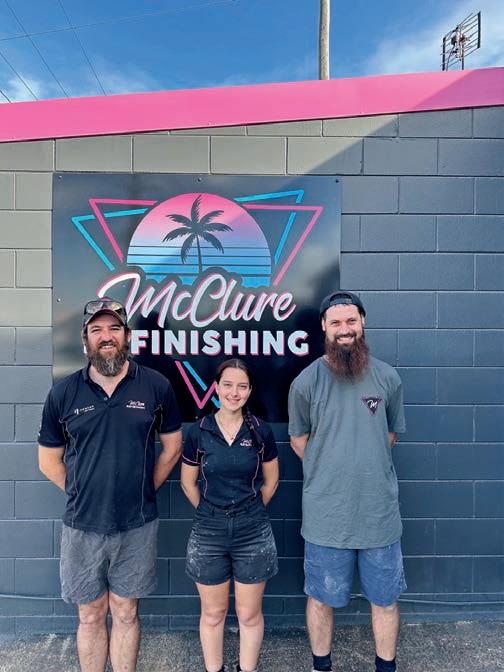
Australia’s love affair with big vehicles shows no sign of abating and workshops need to be equipped to cater for them to maximise their opportunities.
Australian new vehicle data shows large utes make up four of the top ten most popular models with light commercial vehicles making up almost a quarter of all sales, including 108,279 new vehicles hitting Australian roads in 2025 alone.
The upsurge in sales of new plug-in hybrid utes and hybrids indicate this trend will continue as the market adapts to lower emissions.
All this means collision repairers can expect to see more of the large vehicles in the years to come and part of this is ensuring a workshop is equipped with the bench systems to handle them efficiently and safely.
For more than fifty years Car-O-Liner has been internationally renowned as a leading alignment bench supplier to the industry and benches for large vehicles is one of their specialties.
Car-O-Liners BenchRack 6.3 Master System is designed to add to a workshop’s flexibility extending the usable length to a massive 6.3 metres.
The BenchRack 6.3 thus allows for a range of longer vehicles, such as
light trucks, vans and SUVs to use the equipment securely.
The BenchRack 6300 provides the high levels of drive-on convenience with its hydraulic lift and removable ramps. The tilt feature makes loading easier when approach space is limited, making this the most versatile repair bench on the market.
The equipment has strengthened its extra wide drive on ramps and clamping accessories to be used on vehicles.
The 10-tonne draw aligner pulls from almost any angle, 360º around the vehicle with the capacity to double the pulling power with an optional second draw aligner.
Adding to workshop efficiency is another of Car-O-Liner’s hallmarks and the BenchRack 6300 aims to increase the productivity of a workshop processes and its technicians.
The integrated lift allows technicians to work at the most comfortable height, while a generous amount of space between the vehicle and bench offers greater accessibility to underbody work.
It is also designed to avoid the unnecessary interruptions that arise when moving the car between different workstations for steps such as disassembly, alignment, welding, sanding and filling.
The BenchRack 6.3 metre Master Kit encompasses a range of vehicle applications within the EVO System and clamping accessories.
The BenchRack 6.3 Master System also adds flexibility with a range of features in a new, improved system.
• The flexible installation meets the needs of workshop sizes through either a pit or fixed mounting.
• The exclusive pillar jacks allow for a vehicles efficient and secure mounting with a threshold (rocker) support.
• The accurate real-time measuring is used best when integrated with CarO-Tronic Vision2 X3 and Car-O-Data vehicle measurement database.
• Effective anchoring and holding, combining with the EVO universal system means that no specific vehicle fixtures required.
• The clamping accessories provide a range of vehicles with strong, no-slip and safe holdings.
• The BenchRack 6.3m Master System meets OEM approved manufactures’ standards for equipment.
For more information on BenchRack 6300 go to: www.car-o-liner.com.au or call Car-O-Liner Australia on: (02) 4271 6287.
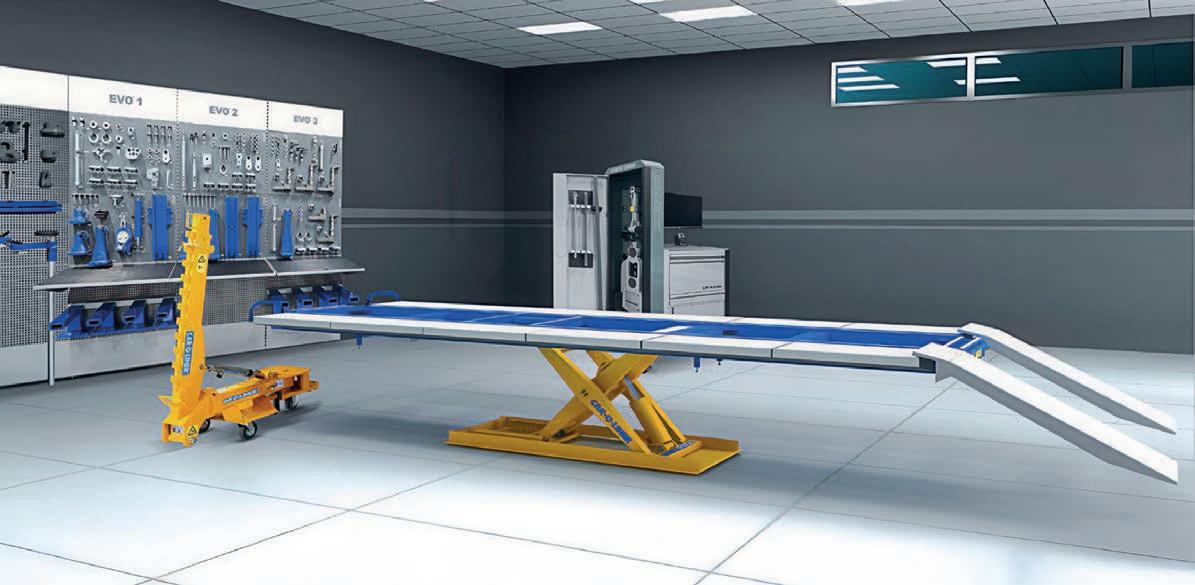

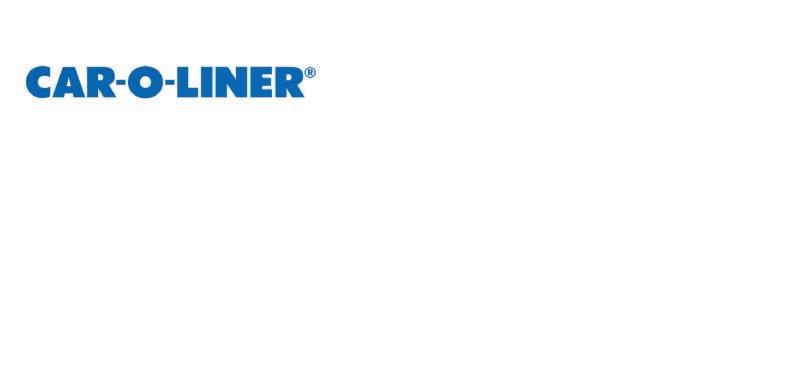

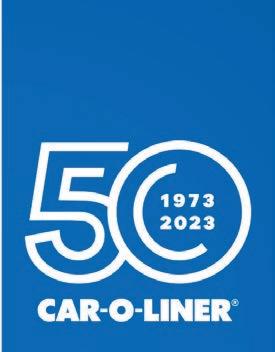


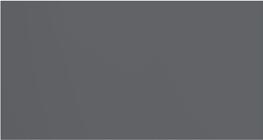



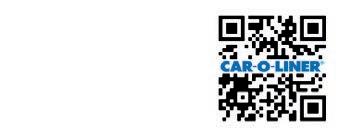

New to the U-Pol range: MicroFill
Pinhole Eliminator & Sealer
Micro pinholes are every spray painter’s nightmare: tiny voids that lurk, only to blossom into little holes when the primer goes on.
U-Pol’s new MicroFill Pinhole
Eliminator & Sealer is a singlecomponent, wipe-on paste designed to seal those micro pinholes—and sanding scratches—across virtually any substrate, cutting out costly callbacks and boosting paint shop productivity. Quite simply this is your best form of insurance!
Why MicroFill belongs in your paint shop
Rework is the hidden throttle on throughput. Every time you have to sand back primer, apply more filler and reprime, you lose time, materials and money. MicroFill prevents that cycle by:
• Sealing micro pinholes & scratches in one pass—no sink-back, no re-fills.
• Reducing primer soak-in by up to 30 %, so you use less product and spend less time topping up.
• Speeding cycle times: flash-off in just 15–20 minutes at 20 °C, then prime— no extra sanding required.
Armed with a single 200 ml bag, spray painters can lock down micro defects on steel, aluminium, composites and flexible plastics—bringing a new level of consistency and efficiency to every repair.
Real-world results
Industry veteran Scott Longmuir from Little Knocks Smash Repairs in Brendale, Brisbane can attest to the quality of the product and how it has helped his workshop.
“It’s a fantastic product – we’d been using a competitor’s before we got our hands on U-Pol MicroFill,” he says.
“Immediately we noticed the packaging is superior: the resealable bag means you use 100 % of the product, not half before it dries out.
“And the results are brilliant. We do about 25 cars per week and have used MicroFill on around 100 cars now—two or three bags—with outstanding results. It fills all micro pinholes and scratches with no sink-back. It works a treat. Once you get it out there, everybody will be using it.”
Scott’s experience mirrors the 30 per cent cycle-time savings reported in European trials, where shops consistently
cut key-to-key times by sealing micro pinholes early eliminating extra primer coats and repeat preparation passes.
Universal adhesion across substrates
Most pinhole sealers on the market stop at plastics or composites. MicroFill goes further, bonding reliably to:
• Polyester filler on steel & aluminium (including galvanised and E-coat)
• SMC and fibreglass panels and bumpers
• Thermoplastic bumpers (TPO, PP, PP+EPDM) without secondary adhesion promoters
That means you carry one sealer for all your most common repair substrates— no more juggling multiple primers or adhesion aids.
• Simple, Fast, Single-Component Application
• Sand the filler to P180–P240, opening up any tiny scratches.
• Clean with a degreaser (U-Pol System 20 or equivalent).
• W ipe-on MicroFill with a lint-free cloth or squeegee, filling every micro void.
• Flash-off for 15–20 minutes at 20 °C.
• Prime directly—no sanding, no waiting, no hassle.
Because it’s a 1K paste with built-in adhesion promoters, there’s no mixing, no pot life worries and no wasted material.
The resealable pouch keeps every gram fresh—even after weeks on the shelf.
Key Features & Benefits
• 200 ml resealable pouch: no wasted product, long shelf life.
• No additional sanding: prime over MicroFill after flash-off.
• Built-in adhesion promoters: ideal for composites and flexible plastics.
• Free from microplastics: meets modern environmental standards.
• One tool for multiple substrates: simplifies your consumables lineup. By preventing micro pinholes, MicroFill not only saves time and paint—it safeguards your reputation by virtually eliminating pinholerelated callbacks.
Integrating MicroFill into your workflow
1. Stock only MicroFill for micro pinhole sealing, ditching redundant specialty primers.
2. Train quickly: a five-minute demo shows new technicians how to wipe, flash and prime.
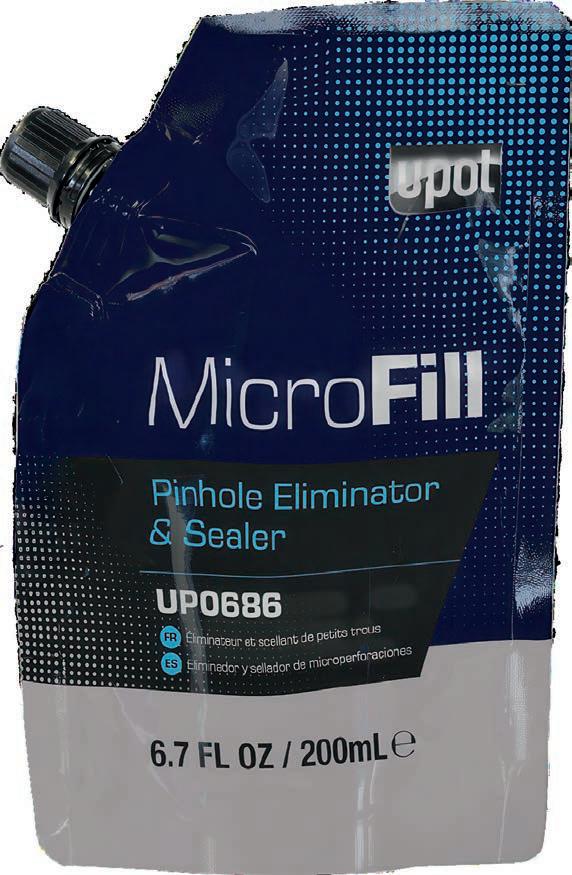
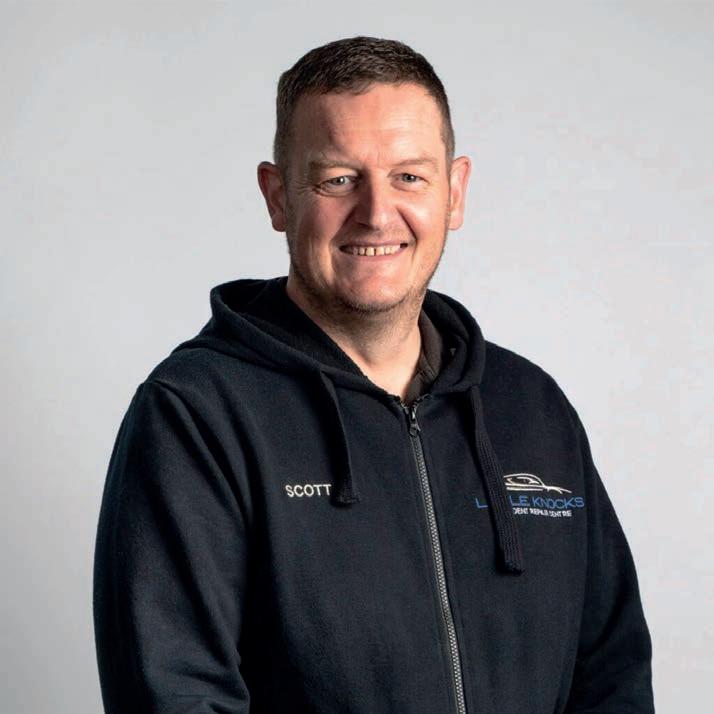
a small investment in MicroFill pays for itself in reduced primer consumption, lower labour costs and less rework, resulting in happier customers and increased productivity.
For Australian paint shops aiming to boost throughput and cut rework, MicroFill Pinhole Eliminator & Sealer is a strategic upgrade and a great insurance policy.
Its broad substrate compatibility—from steel, galvanised steel, aluminium to composites and flexible plastics—sets it apart, while its fast-dry, one-step paste application aligns perfectly with highvolume workflows.
As Scott from Little Knocks Smash Repairs confirms, it does exactly what it says: sealing micro pinholes with zero sink-back and zero waste.
To experience the productivity boost in your own spray shop, contact your nearest U-Pol distributor or visit: u-pol.com.au.




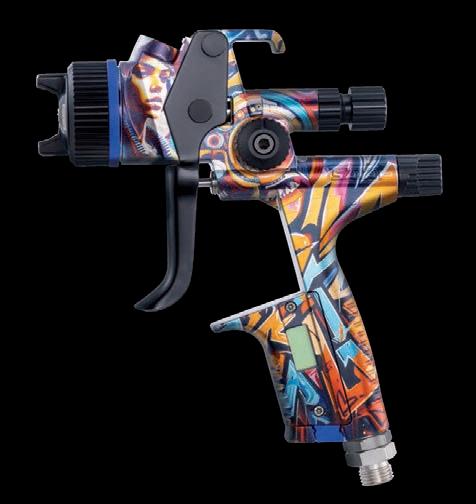

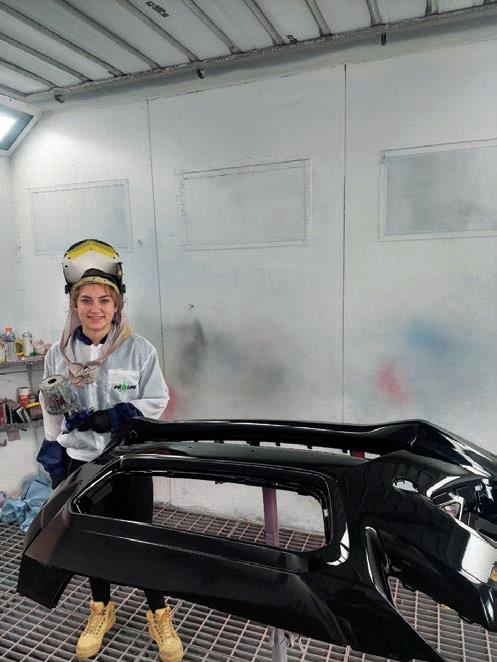
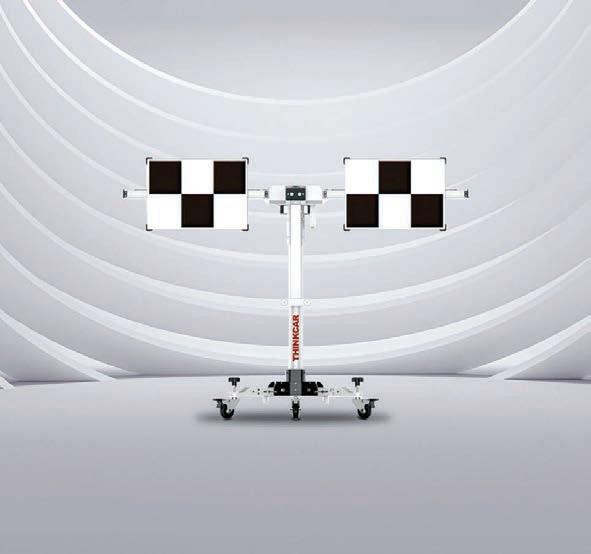
Norton has partnered with an Australian manufacturer to launch a hand sanding kit for the collision repair industry.
The five-piece Norton Starter Kit is designed to equip technicians with a versatile range of blocks for manual stages of the sanding process, from initial shaping to final surface finishing.
The core kit consists of four blocks crafted from Ethylene-vinyl acetate (EVA). This material choice ensures the blocks for small, standard, big, and long hand-sanding applications retain their softness and flexibility, allowing them to conform to panel contours with minimal effort.
The small, standard, and big blocks feature a speed grid to aid rapid material
removal, with each size suited to specific tasks—from accessing tight areas to efficiently sanding large panels. The EVA long block is included for smoothing and shaping across longer, curved surfaces.
The kit also includes the Chromablock which is made from a highly pliable Nitrile Butadiene Rubber (NBR), this block is engineered to handle complex convex and concave shapes. Its
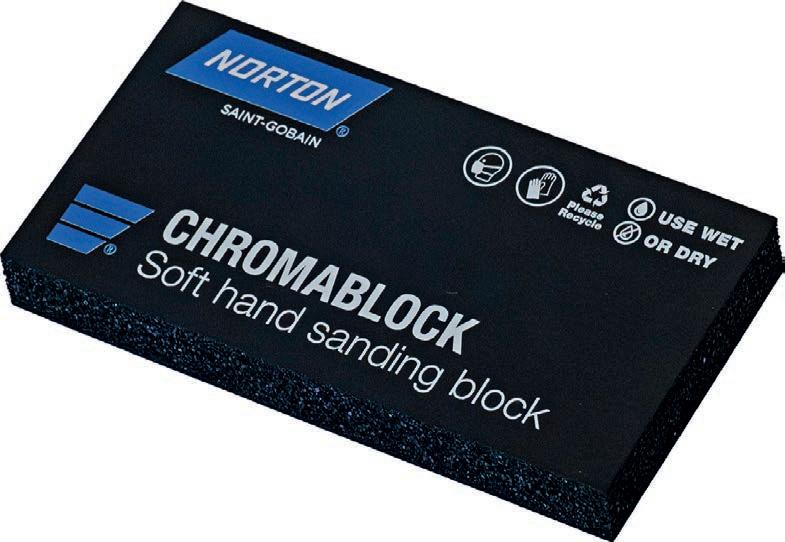



of topcoats and clearcoats prior to buffing, assisting technicians in achieving a high-quality final finish.
Norton Block Starter Kit offers a practical hand-sanding solution for workshops. It provides flexible sanding for final touches and hardto-reach areas, promoting greater consistency and efficiency through the final paint rectification.
But it is available for a limited time only.
For more information go to: saintgobain.com.au
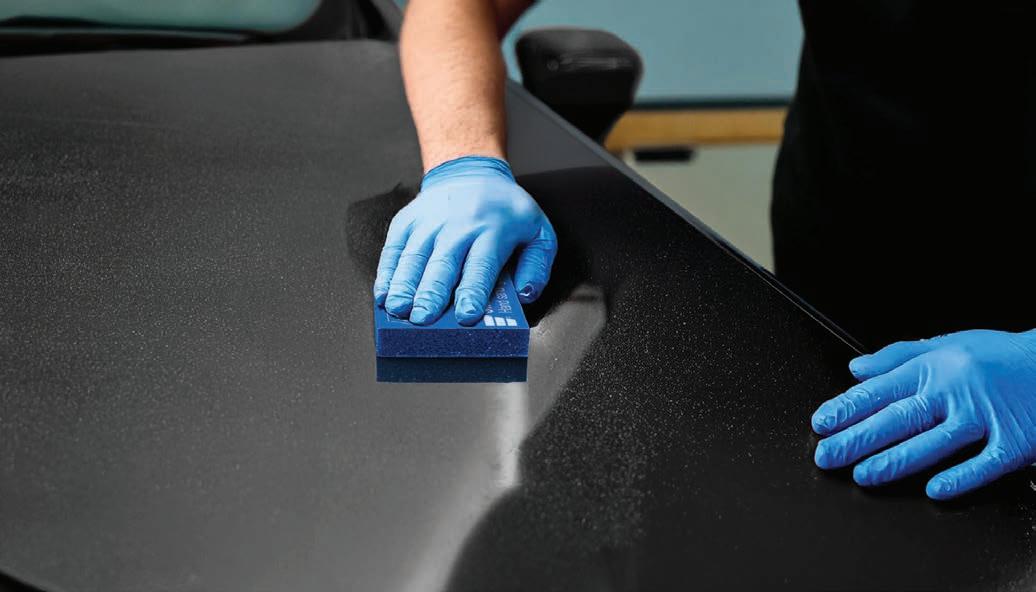


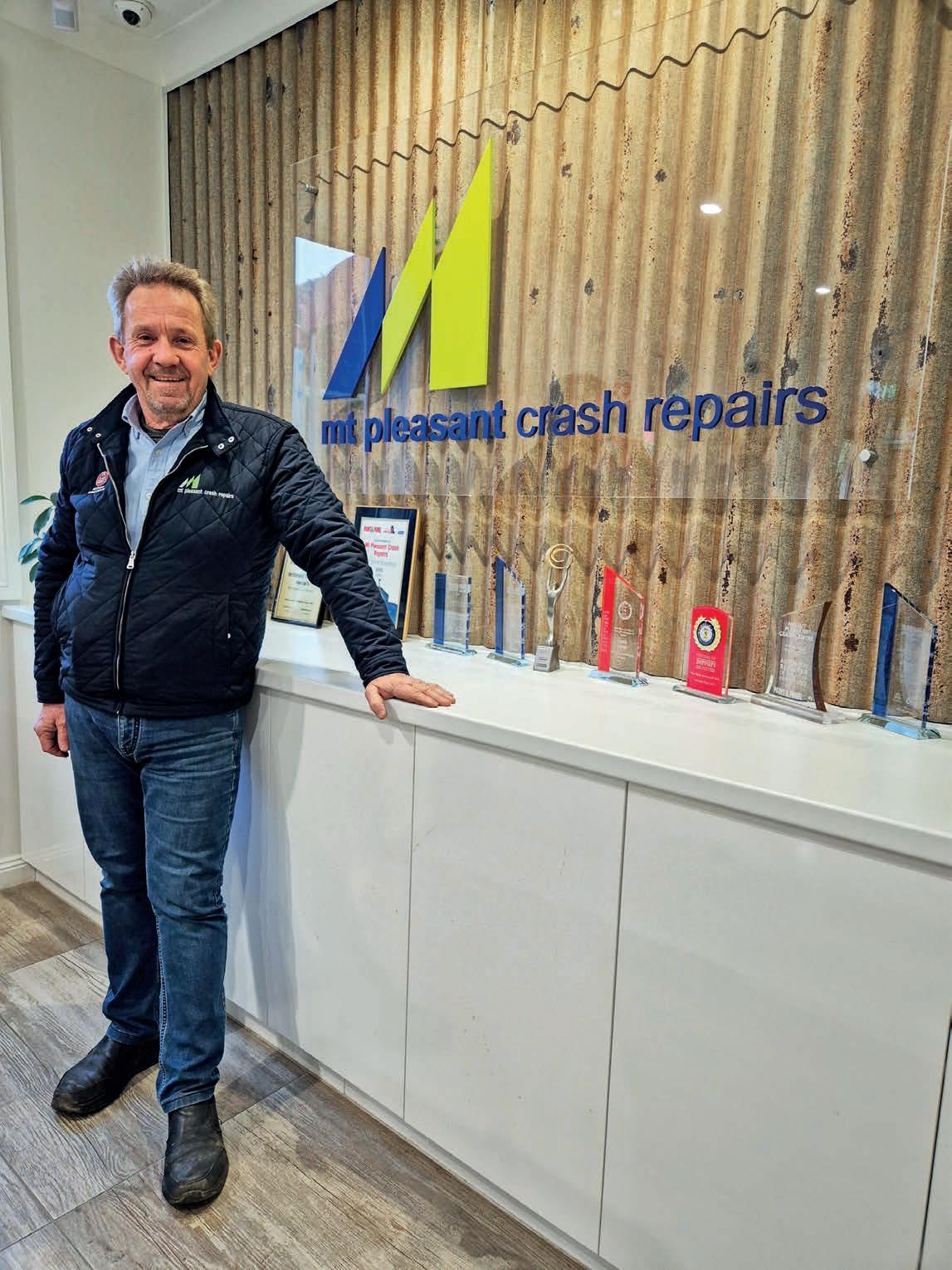
Four decades of satisfied customers have spread the word of his business and helped it grow to the dedicated team of today but in some ways, this success belies its humble beginnings.
“I had just got married, and my wife Lucia and I were as poor as church mice,” Tom recalls. “But I was really keen to doing something for myself.
“So, I moved out of the city and in those days, Mount Pleasant was like the outback, even though it was only 48 kms northeast of Adelaide. We found this little place out here. It was only a 25 X 45-foot shed, and away we went from there.
“We had two children at the time and my wife was pregnant with our third, and she would go into Adelaide picking up parts in the Holden station wagon. Heavily pregnant, no air conditioning, no power steering and there she was running around town picking up bits, because we had nobody up here to deliver any parts.
“I would stay behind and continue working. I worked 12-hour days, seven days a week trying to pay for this place,” he says.
“There was a house here, and slowly we did that up. But the beauty of living on site, Lucia would come down when the kids were asleep, and even when they were at school, she’d be down here helping me pull the cars apart and put them back together again.
“We did that for about the first two years together, and eventually we started employing.”

This difficult start enabled the couple to employ a quality panel beater, leaving Tom to focus on the spray painting. Then as more and more work came into the business, Tom could expand his team and focus on other aspects of development.
Apart from the commitment to quality and service, Tom has also had a progressive and proactive approach to automotive techniques and technology, ensuring his workshop was equipped with the best gear available.
“When customers used to first come down here to get a quote, it was just a tiny tin shed on a block and they would turn around and get out of there. I thought, ‘We can’t have this’. So, I had to change the area and the way it was seen. You see, back then in country South Australia there were no spray booths. No one had ever heard of two
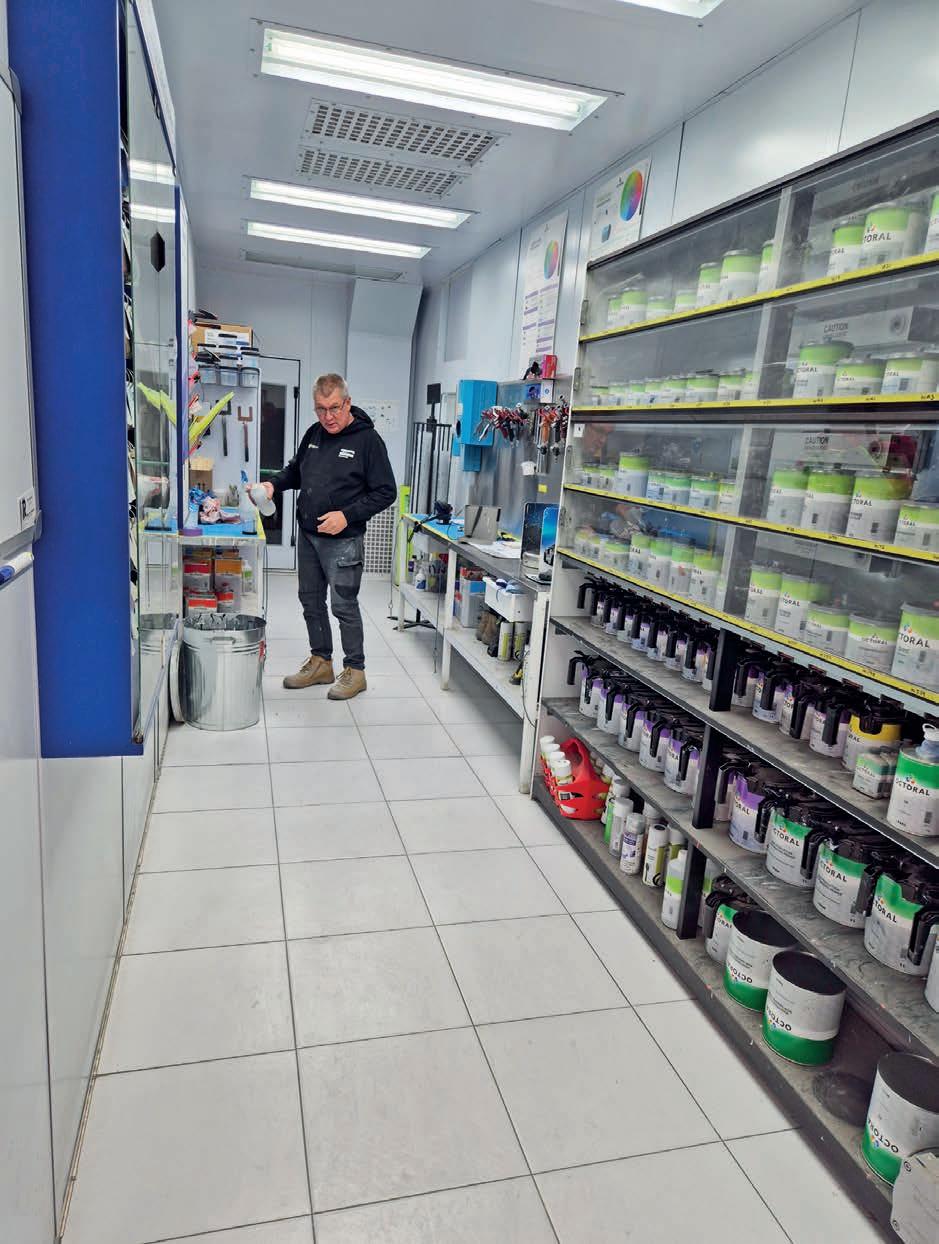
forward for everybody else’s sake.”
While he understands people embrace change at different speeds, he believes you can recognise the passion in people and you need to both utilise and be inspired by it.
“Going forward, you need to keep embracing what is going on in your business, you’ve got to constantly monitor, look and tweak any issues that you may come across in the business.”
But Tom is also quick to point out that it is the value of his staff that have made the business a success, many of whom are long-standing loyal employees.
“The longest serving staff member we have here is a chap called Brett Stagg and he’s been here about 35 years,” Tom says. “I’ve had guys who have been in the team for 20-plus years as well, but they have since retired. It’s sad to see to somebody like that go, because it was a journey we were all on. These guys got me where I am today. Because it was a journey not just for me but for the whole team of us.”
This team approach extends to his apprentices, of whom the business currently employs three, and giving them the best support and opportunities possible.
But Tom reserves his special praise for his manager Ross Papalia, who has

combination right, get those three guys in place and look after them, you’ll find that the rest falls into place, because they actually look after the back end perfectly and the front end even better. “
If there has been a hard part for Tom, it has been allowing Ross a free hand to manage Mount Pleasant more independently. But it’s a step that he has adapted to and reaped the rewards from.
“He and his foreman once bailed me up, about three years ago,” Tom recalls. “And they said to me; ‘Tom, Could you do
“But we reconvened and I said, ‘I’m going to give you three months, to see if you can do as good or better.’
“And they have. They just knocked it for six and it’s been fantastic.”
This step back has enabled Tom to address one of the few regrets of his career.
“I can do things that I should have done when I was younger, and embrace the family more,” he says.
“I can see my grandchildren more now. I do whatever I can to be at their
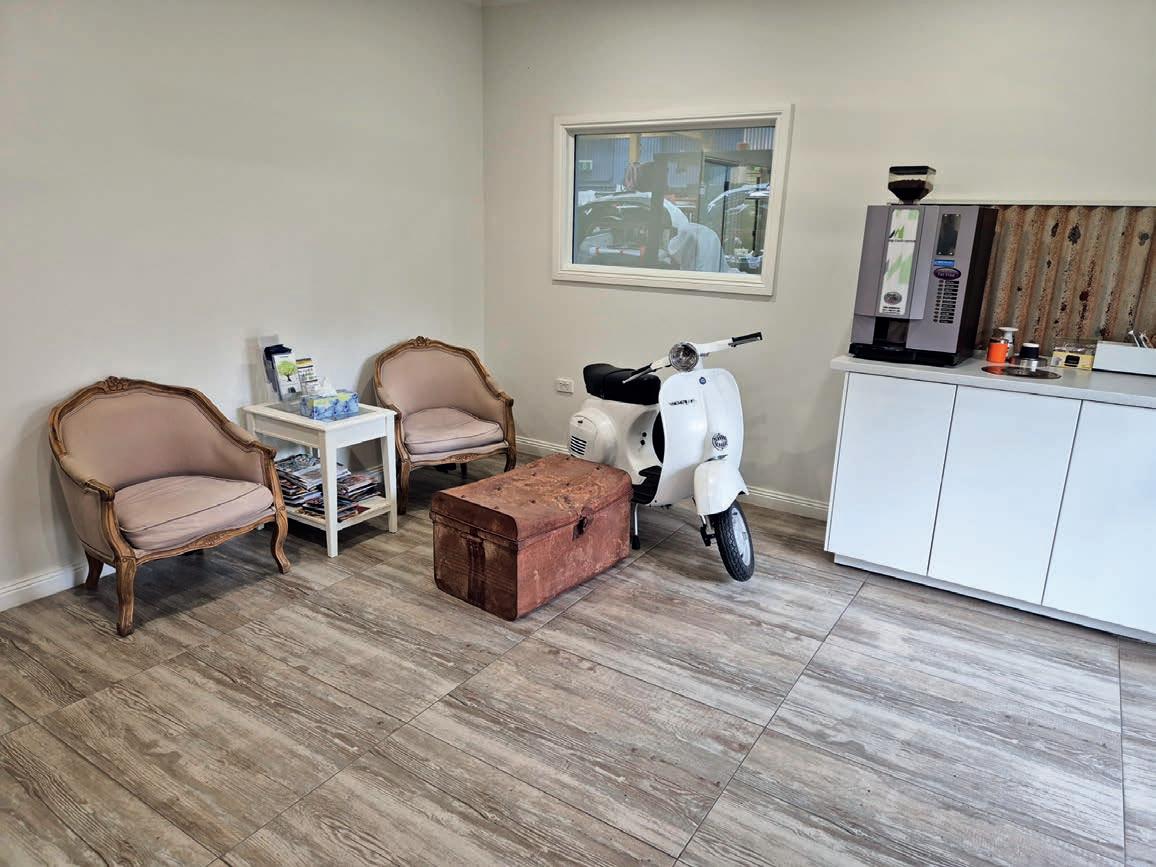
But this hasn’t meant he doesn’t keep a close eye on things, including a fascination with new equipment and tools and taking an active role in promoting the business with an idea of taking it to the next level.
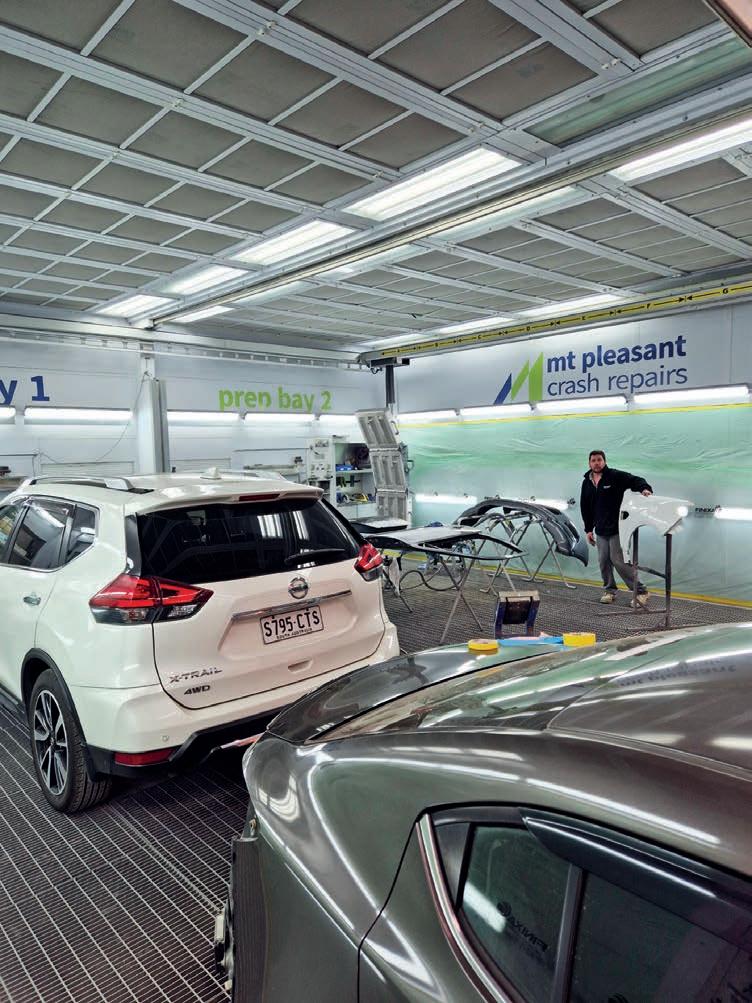
On his long journey, Tom has known the difficult periods of a growing business.
“I think some of the low points are sometimes when work providers change the goal posts and you’ve had to adapt to their way of thinking and it goes against your grain. I find I have come to terms with that and we do.
“A lot of people know that I’ll tell you how it is, but sometimes you’ve got to hold back,” he says.
“But it’s a beautiful industry, it’s a
rewarding industry and there’s a lot of heartache that goes with it. Again, without my wife Lucia and Ross and my guys, my son Carmen that helps out the workshop as well, I don’t think I’d still be here. I would have moved on a long time ago.”
Among the many highlights of his long career in collision repair, he says he has a special place for the recognition of his peers and the wider industry.
“I was nominated as large repair shop for South Australia in 2021. And I went to the awards and then I was honoured with the National Repairer Award and that just blew me away.
“I wasn’t expecting that. I was up against some serious contenders, some serious, beautiful shops and great people and all of a sudden, this tiny little
shop in the Adelaide Hills cops this great accolade. That was a highpoint.”
But he also believes a business that is supported by the community should reciprocate with support and quietly help when it is needed.
“I think you genuinely need to show your enthusiasm to the community and district by working with them, whether it is Lions, or Rotary or Apex or some sort of fundraising club.
“We still support sports communities and Blaze Aid or men’s sheds. You work together with these people, for whatever they are trying to build or purchase. But you don’t need to have your name up in lights, you just help them out.”
If his familial approach to his team and the business has helped him build over these forty years, it is also guided by the same philosophy of service to his community and the customer.
“Somebody comes in here, even with something minor, you make sure it’s safe and it’s drivable until they can get their things together and get their policy through,” he says.
This includes wheel alignments, they have often not charged for to ensure the car is safe.
“Primarily, you make sure they’re okay. Make sure they’re not too inconvenienced and try and make the repair process as seamless as possible.
“That’s what I’ve always done from day one, and I’ve embossed that into everyone here. If the customer comes in and needs something done; check it out and make sure it’s 100 per cent.”




























To calibrate or not to calibrate? It is the question collision repairers are being made to ask more often as vehicle technology advances. AASRA’s Joe McFadries takes a look at the new code aimed at helping workshops make more informed and safer decisions.
The Australian Automotive Aftermarket Association brought the industry together at the recent Autocare Convention in Brisbane, and the AASRA team was thrilled to be one of the many exhibitors at this pre-eminent biennial event. Thousands of technicians and workshop owners attended the world-class technical training and business education sessions, the highly interactive trade show, and the extensive opportunities to network.
Of particular interest to AASRA was the discussion about the all-makes repair model, and how best to leverage Australia’s Motor Vehicle Information Sharing scheme to enhance diagnostic and repair capabilities.
Dovetailing into this was the launch of the national ADAS - Industry Code of Conduct, (the Code) a practical, sectorspecific guide on how to manage one of the most critical safety issues in modern vehicle repair: calibration of Advanced Driver Assistance Systems.
AAAA Director of Government Relations and Advocacy Lesley Yates, has been a vocal advocate for the ADAS Code.
“The Code is a vital step in ensuring vehicle safety systems continue to
function as intended throughout a vehicle’s life,” she says.
“ADAS isn’t just a feature or an optional extra, it’s the foundation of future automotive technology. It’s the beginning of the next technological revolution.”
So, what does the new Code cover?
The ADAS Service and Repair Technical Working Group, consisted of specialists from collision and mechanical workshops, tyre and suspension specialists, and automotive glass and equipment suppliers. It developed the appropriate ADAS validation protocols, identified existing gaps in skills, tools and processes, ensured regulatory alignment, and now supports the implementation by providing guidelines training and resources.
With ever-increasing vehicle complexity and the need for calibration, ADAS equipped vehicles require more precision that ever before to ensure the vehicle is returned to the owner with all the inter-connected systems operating as they should.
By now we are all aware of the diverse array of sensor technologies
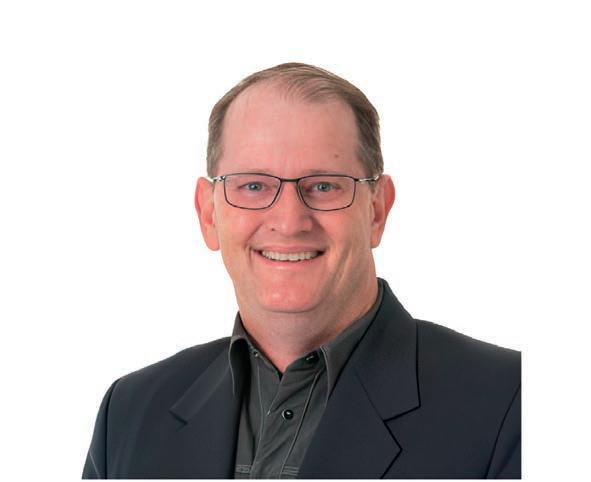
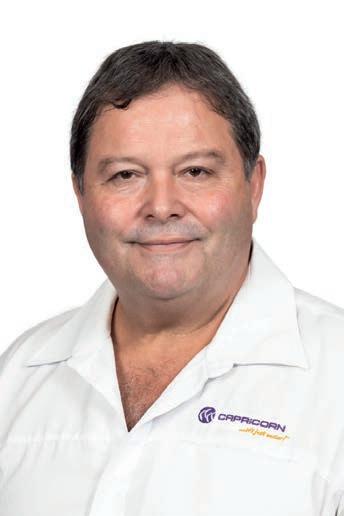
- such as cameras, radar, ultrasonic sensors, LiDAR and infrared sensors - that underpin ADAS, although understanding how they all “hang together” and the importance of getting it right is still a work in progress.
The Code identifies several scenarios when ADAS calibration should be conducted, and it highlights that ADAS functionality requires a combination of visual inspections, professional licenced diagnostic tools and equipment, and in some cases, road testing.
The Code defines 10 key areas of focus for successful ADAS calibration:
1. Workshop preparation
2. Testing and diagnosis of ADAS
3. Pre- and post-scanning
4. Repairing ADAS
5. Collision repairs
6. Best practice for windscreen replacement
7. M obile paint/touch-up/bumper repairs
8. M obile ADAS service providers
9. Tyre and wheel alignment service and repair
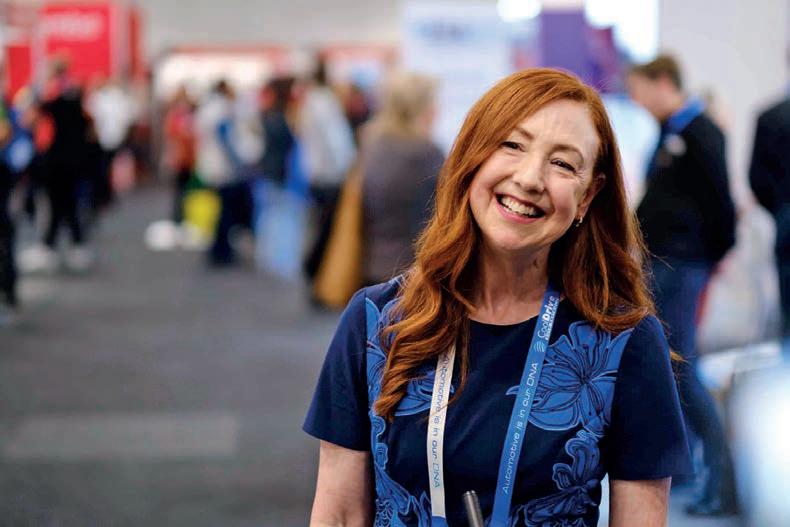
Craig Baills says the code was a timely collaboration bringing together experts to achieve some clarity for the industry:
“ADAS is not going away, in fact it’s becoming even more prevalent in newer vehicles with close to 50 percent of vehicles expected to have ADAS by 2030,” Baills says.
“ADAS is evolving at a significant rate which the industry must embrace, and the ADAS Code is designed to help workshops and repairers fully understand best practices when carrying out ADAS calibrations and repair work. It is a living Code that will most likely be adapted as the industry evolves and will continue to ensure that all repairers can correctly repair and calibrate ADAS systems to correct operation as the vehicle manufacturer intended.”
The ADAS protocol dedicates a separate section related to collision repair, highlighting the importance of the technology to this sector of the industry. Here is a summary:
This is required whenever a sensor, radar or ADAS components’ alignment is disrupted due to vehicle collisions or damage, including cosmetic and minor collisions.
Modern collision repairs frequently involve sensor replacements and calibrations. To ensure accuracy, automotive manufacturers recommend that service providers conduct a prerepair diagnostic scan before any repairs begin and a post-repair scan after completing the job. This ensures that all system issues have been resolved, calibration has been successfully completed, and vehicle control systems are functioning correctly.
This is a precision process that is often complex and time-consuming. Some sensors require static calibration in a workshop, while others necessitate dynamic calibration during a road test. Many require a combination of both.
With many modern vehicles being equipped with 360-degree cameras
it is important to ensure the correct operation and calibration of these components post repair. This is necessary after replacing a camera, grille, door mirror, bumper cover, or other mounting components that impact the location and mounting of these cameras. Typically performed indoors using large, patterned mats positioned around the vehicle, noting that some systems require an additional dynamic road test after static calibration.
Required after airbag deployment, structural repairs, or wheel alignments. The calibration process involves centring the steering wheel and using diagnostic equipment to initiate and reset the steering angle sensor to zero degrees.
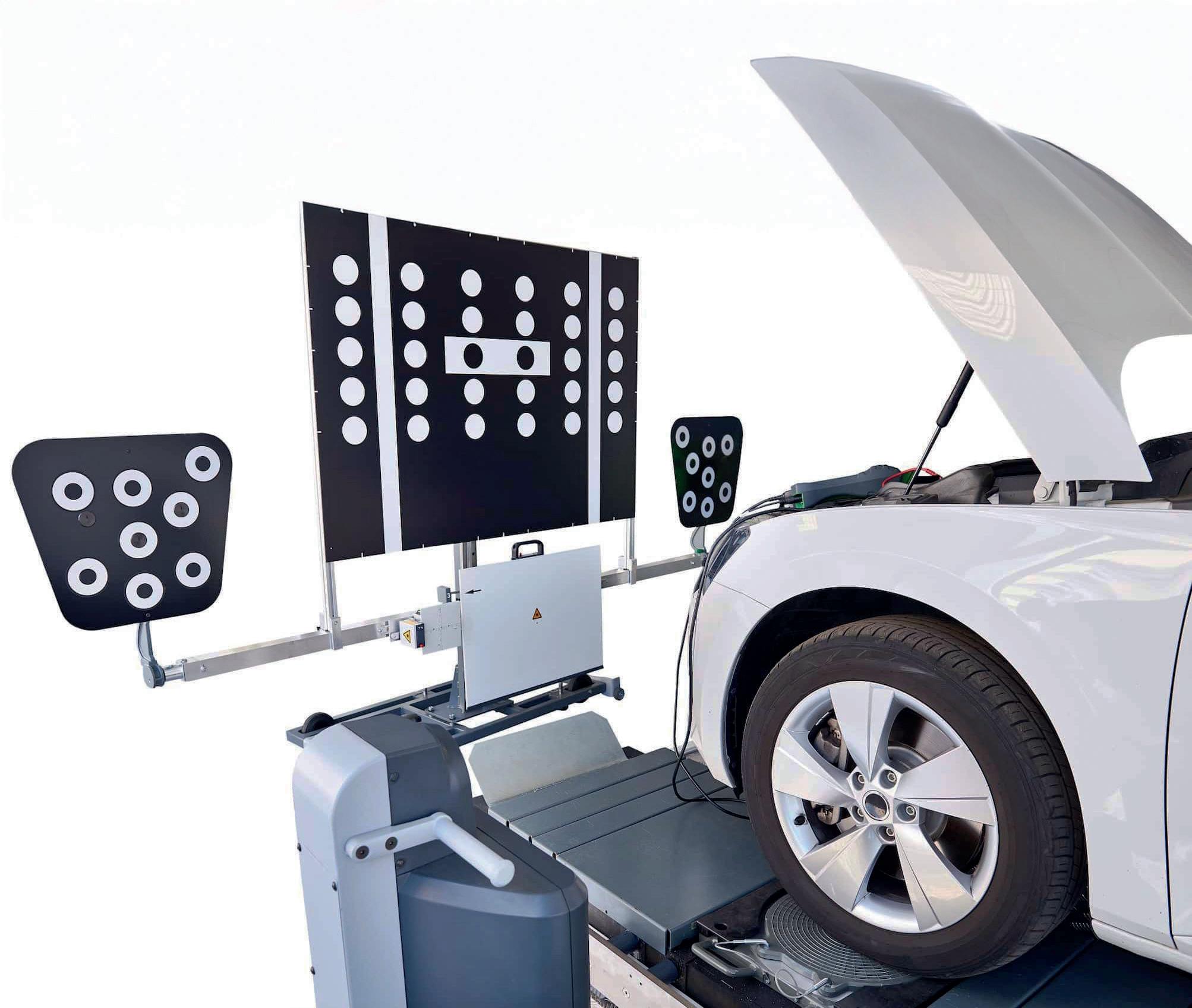
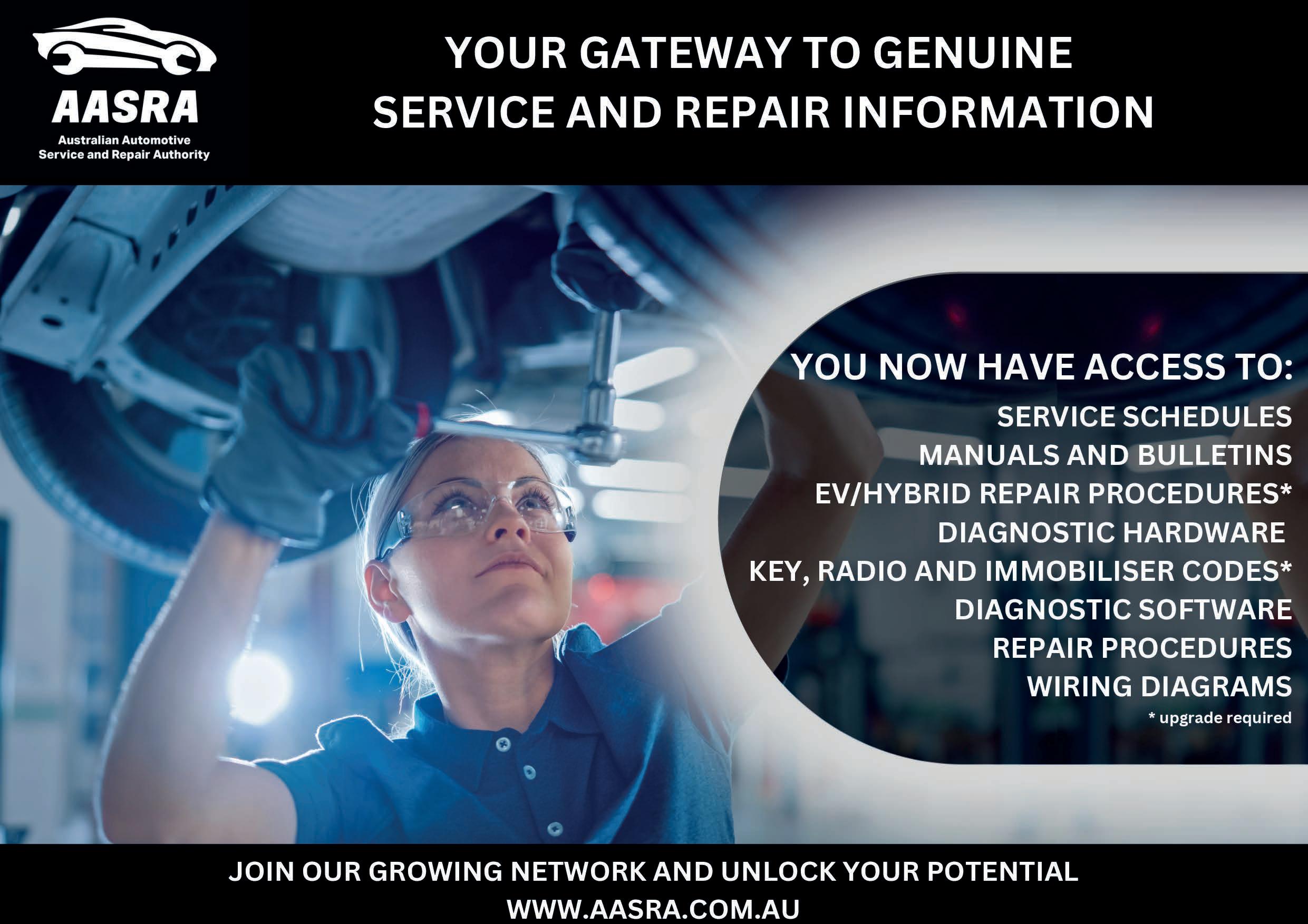
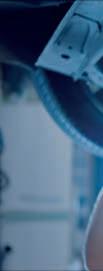


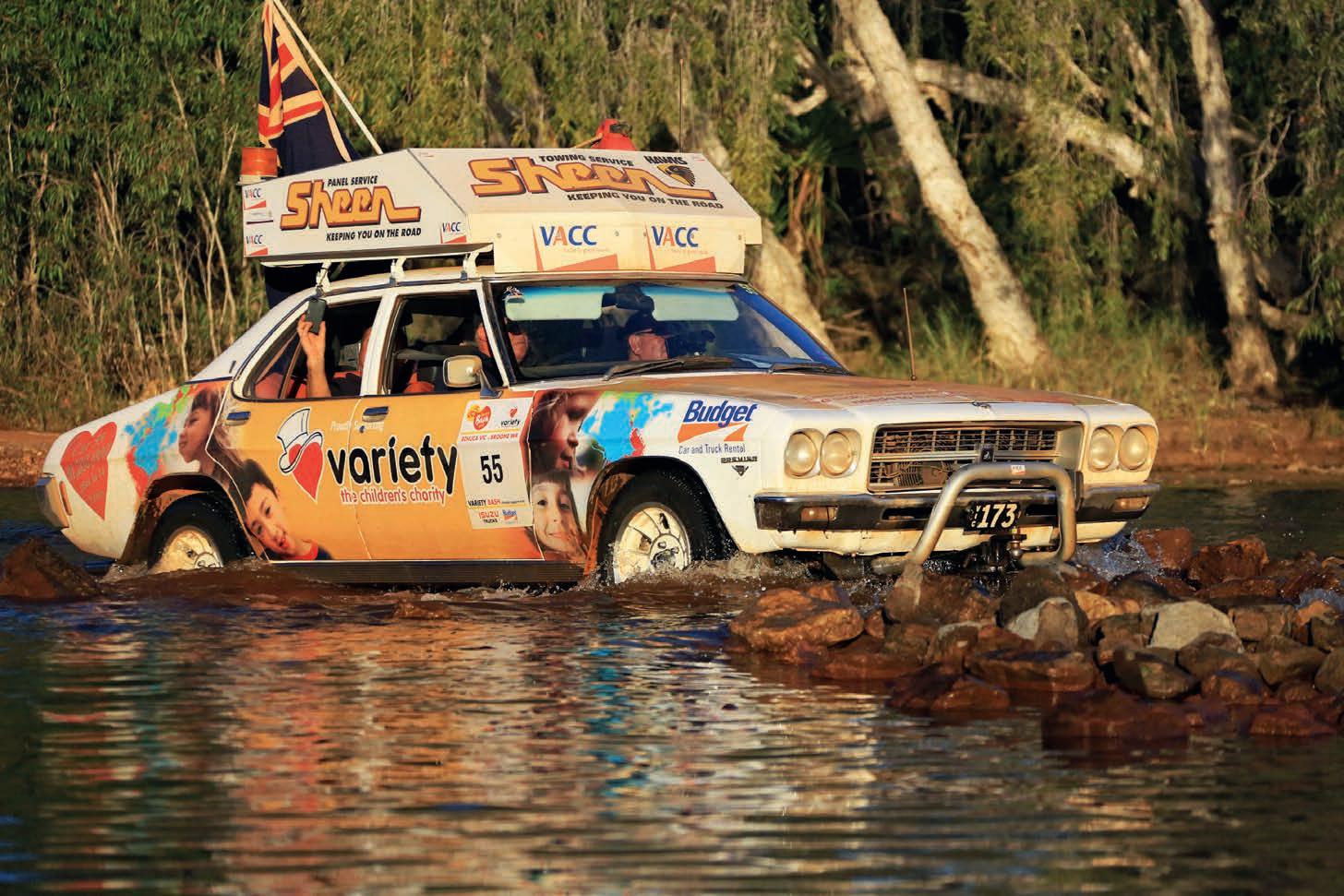
The renowned Sheen Community Fund is a model in how a major Victorian repair industry player can keep giving back to the community. In 2025 they have set themselves a new ambitious goal of $500,000. But big or small, the diverse range of projects are about making tangible differences to people’s lives.
Sheen Group founder and industry veteran Martin Stone has a special fondness for the children’s charity Variety, not only because of its long history with the repair group but because it is a charity he sees making a demonstrable difference to children’s lives.
Variety is dedicated to helping sick and disadvantaged children through grants to families, schools, and communities, helping them gain mobility, communicate, participate in education, and build self-esteem.
The Sheen Community Fund, which has notched up more than $4 million for the charity, engages in numerous activities throughout the year to keep this vital work going, including the large-scale Grand Final Lunch, the Kids Christmas Party, the Bikes for Kids program and the Variety Bash.
2025 will mark the 50th anniversary of Variety’s Bash, a well-known charity drive across remote Australia and this August it will take place as a National Bash with 650 cars and more than 1600 participants. The example Martin Stone sets for the 27 shops in the Sheen Panel Service is that giving is as much about involvement as cash donations. Since 1997 he has participated in 21 Victoria Bashes, raising millions for Variety.
While the spectacular event is fun, its high profile is also about delivering a maximum return to those in need.
Manager of the Sheen Community Fund David Whitehead says this is another of Martin’s driving principles with the fund, to ensure every dollar makes a difference and maximises the impact of the generosity of their network of suppliers and supporters.
“Of all the charities in the marketplace Variety has a high percentage of cut-through. They manage their cost base well,” David says.
“For Martin that has been a key driver. He knows where his money is going. That’s because as I’ve said before, Martin would rather give a kid the whole iPad than 90 per cent of it.”

Final fun
Contributing to Variety and the community fund target in 2025, the Sheen Group will again be the naming right sponsor of the massive Grand Final Lunch, where Sheen has built exceptional momentum.
“It’s a powerful event that then tells the story for the next 12 months,” David says. “People remember it. They have a great day and we leverage that and that’s why it sells out.”
The lunch is also an opportunity to spread the spirit of generosity and the great cause among the wider repair community.
“We’re trying to engage our suppliers in what we’re doing as well,” David says.
“Rather than it just being Sheen, it’s got to be collective fundraising. We’re slowly trying to get them involved, to see the value in what they’re doing.
And the next year, they want to keep contributing. So, they bring their customers, their friends or suppliers, and they get to share in it. And I see that organic tribe growing.”
This momentum means those who were once Sheen’s invitees now return with their own booked tables to join in on the fun and giving to Variety. They now add up to more than 30 tables of the 100 in the expansive banquet hall at Crown.
One of the most tangible of the Varietyled charity programs is Bikes for Kids where Sheen Panel Service can hold workshops for their workshop staff to assemble the bikes for needy kids. This brings individual workshops and their staff into the giving circle through participation, right down to seeing the smiles on the faces of the young recipients when they receive the gifted bikes.
One of the new charities the Sheen Community Fund has partnered with is Our Village, that incorporates St Kilda, Geelong and Eureka Mums, helping collect and rehome essential items for
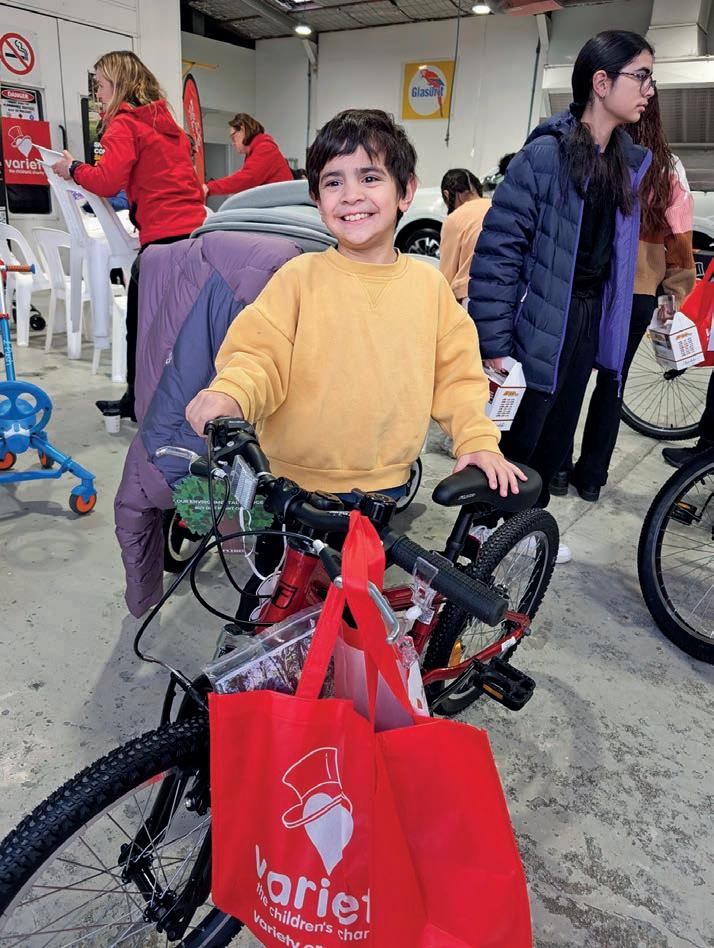
maximum benefit for each dollar given.
“It’s a small charity that’s not getting
“While with our direct financial resources, we can buy some product and
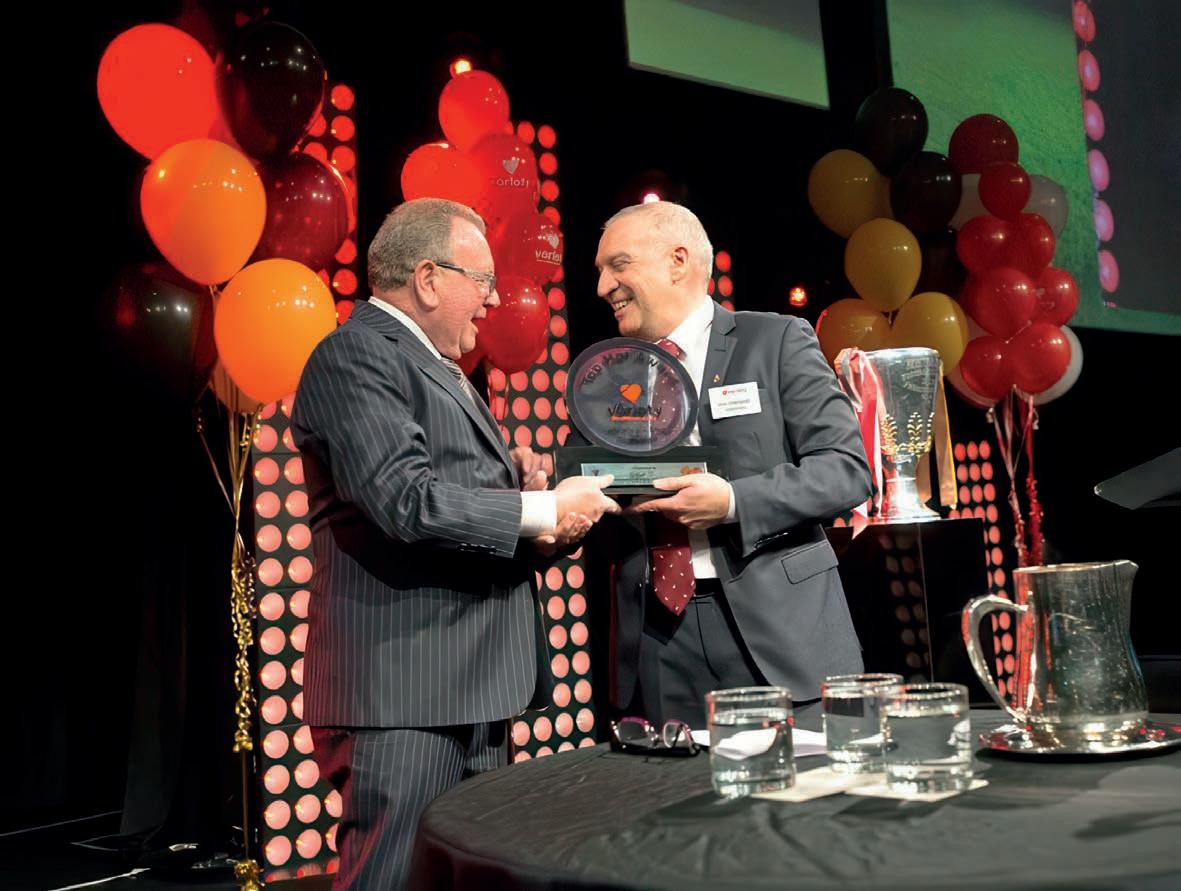

The Sheen Community Fund has continued its standout support for the Good Friday Appeal for the Royal Children’s Hospital in Melbourne – to which it has pledged $25,000 in 2025. Again, the giving is specifically targeted to make a difference, with the money going directly towards a Terumo Spectra Optia Apheresis System. The system performs a wide range of procedures, including stem cell collection, red cell exchange and plasma exchange that can be used in the treatment of sickle cell disease, leukaemia, cancers and brain tumours, kidney and neurological diseases for children.
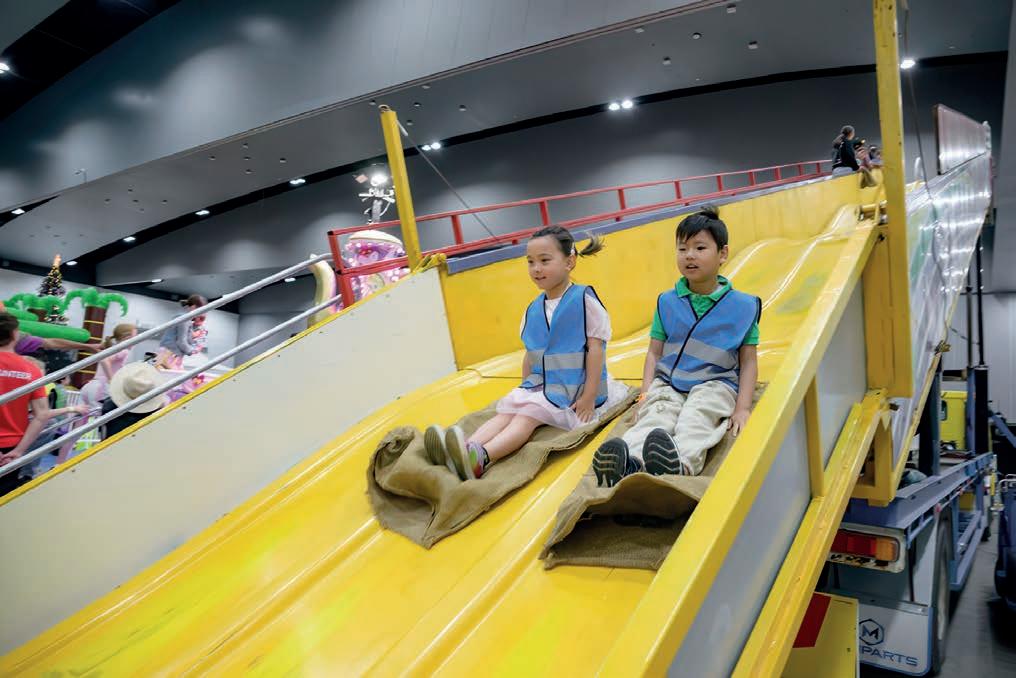
Another success for the Sheen Community Fund has been its 2025 Golf Day, that followed an inaugural event in 2024. It combined the fun of a social day for staff and supporters but critically helped raise funds for a Specialised Assistance Dog for a 9-yearold boy. This companion will significantly
enhance the boy’s quality of life, allowing him the opportunity to engage more intentionally with the world beyond his bedroom.
The range of causes is diverse for the Sheen Community Fund and the giving goals are high but, in these ways,
it illustrates how the collision repair industry can go beyond and above to help change lives.
For information on how to donate go to: www.lmcf.org.au/ways-to-give/sheencommunity-fund

IAA makes it easy to access quality salvage and low-value vehicles through a powerful, tech-driven platform - now live in Australia.
From car enthusiasts and first-time buyers to established businesses, we’ve got the vehicles you need.
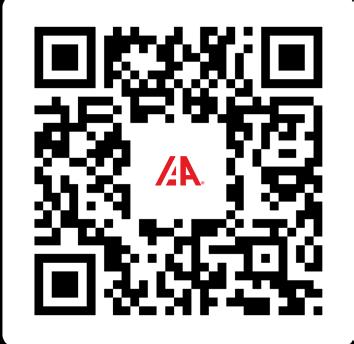
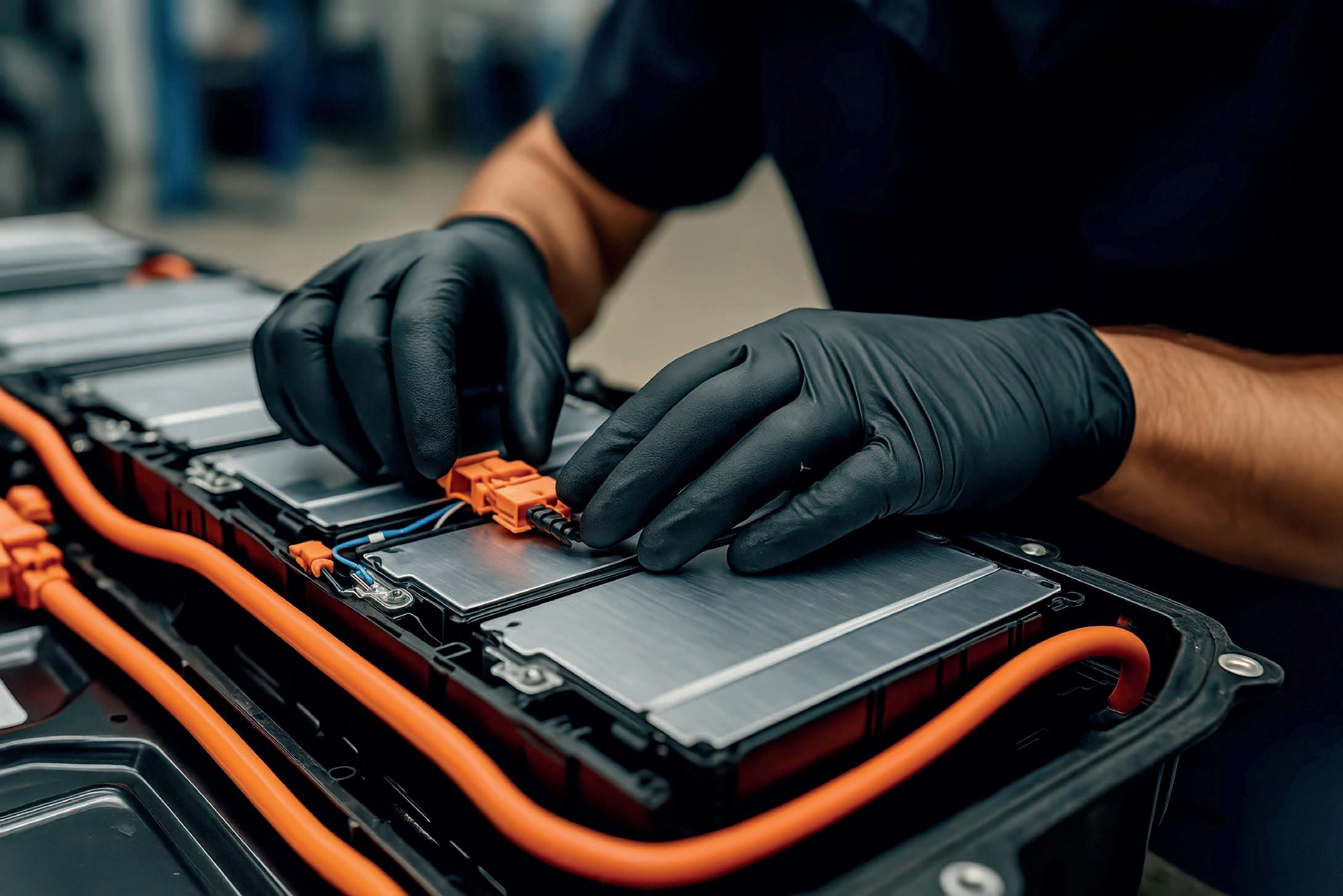
Another significant report has highlighted the importance of the ‘whole of life’ experience for potential EV owners, including service and repair. The NRMA insight shows the importance of consumer confidence and the urgent need for upskilling in the repair sector.
The shortage of skilled repairers, parts and the safety of EVs remain major barriers to their uptake in Australia according to a new insurance report Changing Gear from the NRMA.
The report shows almost two thirds (62 per cent) of EV owners are concerned about the lack of qualified repairers. 90 per cent of those who currently own or intend to buy an EV say the insurer being able to access qualified EV repairers was important.
It is the second in a series of reports and highlights obstacles in perception that have inhibited the growth of alternative powertrains since the adoption of the New Vehicle Efficiency Scheme aimed at raising the proportion of low emissions vehicles.
The learnings from the report also reflect a repeated call by aftermarket groups including the MTAs and the AAAA, for governments to step up support for the transition by ensuring adequate skills in the repair sector. This will ensure a good EV experience is not only about purchasing but about repair and maintenance, they say.
The NRMA report has also highlighted
68 per cent of Australians were worried about EV battery recycling and disposal, with only 30 per cent expressing confidence in the feasibility of battery reuse and recycling.
This lack of trust is reflected in attitudes toward second-hand components, with fewer than a third (31 per cent) willing to use a recycled battery.
Fears that there is an insufficiently trained workforce are also acting as a barrier to uptake as people consider the longer-term implications of EV ownership.
“These concerns are well-founded: while EVs typically need less servicing over their lifetime, their maintenance and repair require specific skills that traditional mechanics often lack,” the report noted. “According to 2023 data, roughly one in ten repairers in Australia were certified to handle EV repairs, leaving a significant portion of the market under-served. This can lead to increased wait times for repairs, vehicles needing to be transported long distances to appropriate repair
facilities, and vehicles being written off more readily.”
Unlike service and maintenance, which are often handled by dealers under warranty, collision repair could make these impacts more acute, as collisions can occur in any part of the vehicle’s life and independent repairers may be the ones called on for the work.
“To address these concerns and help bridge the skills gap, it will be important to see investment in training programs that provide technicians with the necessary skills and equipment to safely service and repair EVs,” the report recommends.
“There are high levels of support among consumers for a national training package to upskill mechanics in service and repair of EV repair (66 per cent).”
“Industry collaboration and partnerships with educational institutions can play a key role in ensuring a pipeline of skilled technicians are ready to meet the demands of the evolving market.”
While the push has been strong for more government support to assist

small workshops become EV-safety compliant, the report also highlighted one solution to upskilling of the industry lies in specialised service providers and trainers.
Bosch Automotive Service Solutions
General Manager John Bright says the gaps in EV skills uptake is exacerbating the existing recruitment issues in automotive.
“The shift to electric vehicles is driving a significant transformation in the skills needed across the automotive service industry,” Bright says in the report.
“The sector is already facing a shortage, with over 38,000 unfilled automotive positions, and the transition to EVs is presenting new challenges. EVs are software-driven machines, and while hybrid technology has provided some exposure to highvoltage systems, there is an urgent need for more training to keep up with evolving technology.
“As an industry, we must collaborate to attract more talent. We need to highlight the sector’s focus on new technologies and demonstrate how
repair work now revolves around diagnostics, software updates, and battery management. Without a commitment to modernisation, we risk falling behind in the EV era.”
willing to pay
Like the 2024 report to consumer attitudes, the new report also identified
cost as one of the barriers to a more rapid uptake.
It established that while consumers care about lowering their greenhouse footprint, they may be hesitant to pay extra for it. This is exacerbated by the relative ignorance about how EVs can offer lower running costs.
Australians are increasingly ecoconscious, with 60 per cent valuing sustainability personally.
But many consumers remain hesitant to pay a premium for environmentally friendly options with less than half (47 per cent) expecting to pay more for sustainable products and services, and only 38 per cent willing to do so.
Where uncertainty of consumers around the cost of running and repairing EVs presents a hurdle with less than a third (30 per cent) believe EVs offer the cheapest running costs, while 42 per cent of those not considering an EV cite higher overall ownership costs as a deterrent. This perception persists despite almost half of the recipients being simply unaware of the comparative servicing and maintenance costs of EVs versus petrol/diesel vehicles. 46 per cent say they don’t know.
The solution the report says is better education about these benefits beyond sustainability. NSW department of transport research showing EVs are 40 per cent cheaper to maintain and run.
Misinformation a major barrier
This report comes at the same time as research from the University of Queensland showing more than a third of Australians wrongly believed EVs were more likely to catch fire than ICE vehicles.
The UQ survey deliberately posed
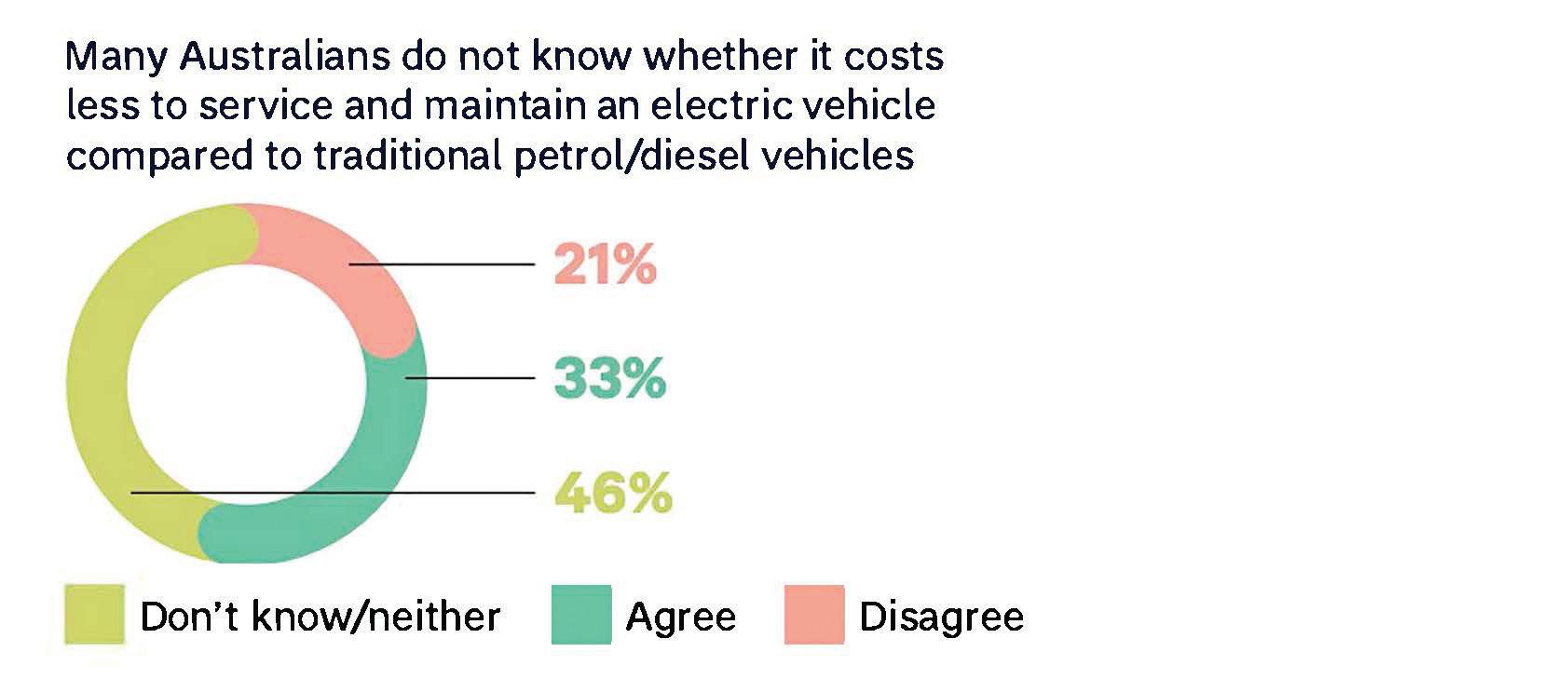
untrue questions to gauge public responses and opinions and the impact of misinformation.
It investigated the prevalence of misinformation in four countries –Australia, the United States, Germany and Austria and found substantial agreement with misinformation across all countries.
The most widely believed myth was that electric vehicles were more likely to catch fire than petrol cars, 43–56 per cent depending on the country, with Germany the highest.
The NRMA report noted that EV battery fires are extremely rare, with only 712 fires reported worldwide since 2010, even though there are more than 58 million EVs on the road.
But despite this, over two-thirds of Australians (69 per cent) remain concerned about EVs catching fire, or their safety when charging.
NRMA Insurance CEO Julie Batch
says it showed the work that needed to be done to overcome confusion and misinformation and build confidence in an electric future.
“Reports of battery fires often don’t distinguish between the high-quality batteries used in road-registered EVs and the lower-grade batteries found in some e-bikes and e-scooters,” she says. “Unfortunately, it’s the latter that have caused most of the recent fires and property damage.”
“In the future, auto repairs will increasingly be about diagnostics, software updates, and battery management. We need to rethink how we attract and train talent, so there’s a steady pipeline of skilled professionals ready to keep EVs on the road.”
The NRMA report recommends introducing regular battery health checks to build trust and strengthen
the second-hand market, developing a battery supply chain that supports recycling and repurposing, and providing specialised training for technicians and first responders.
The report uses Norway as the model where EVs now make up 89 per cent of new car sales – and is driven by strong government support, tax breaks, and a reliable charging network whereas in Germany EV sales dropped after subsidies were removed.
The NRMA report shows potential EV owners could be persuaded with support, lower electricity costs (45 per cent) and more affordable EVs (40 per cent).
Most current EV owners (81 per cent) support government incentives, and over half (53 per cent) want more local charging stations.
Most Australians turn to motoring groups (58 per cent) and mechanics (56 per cent) for reliable EV advice.
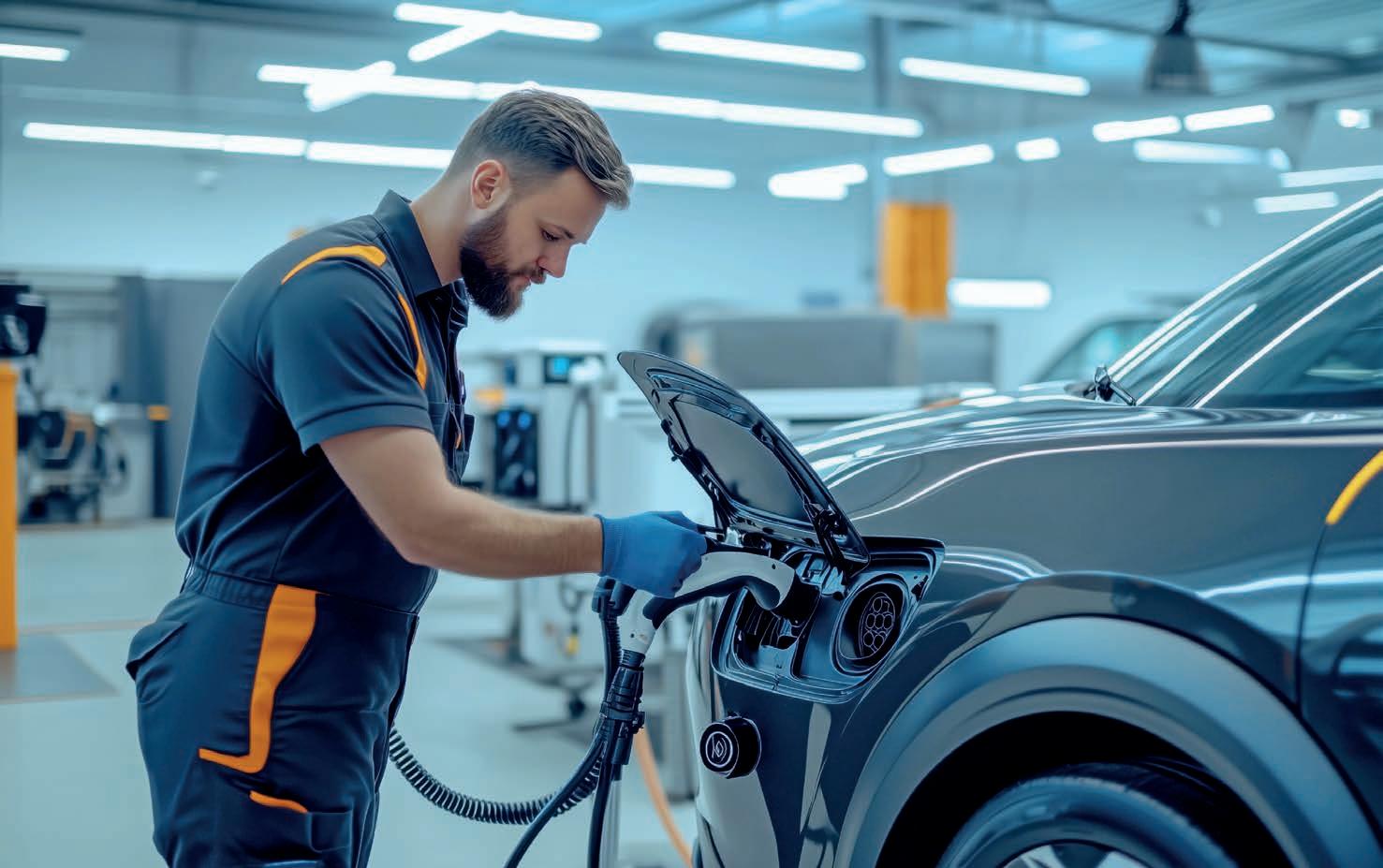
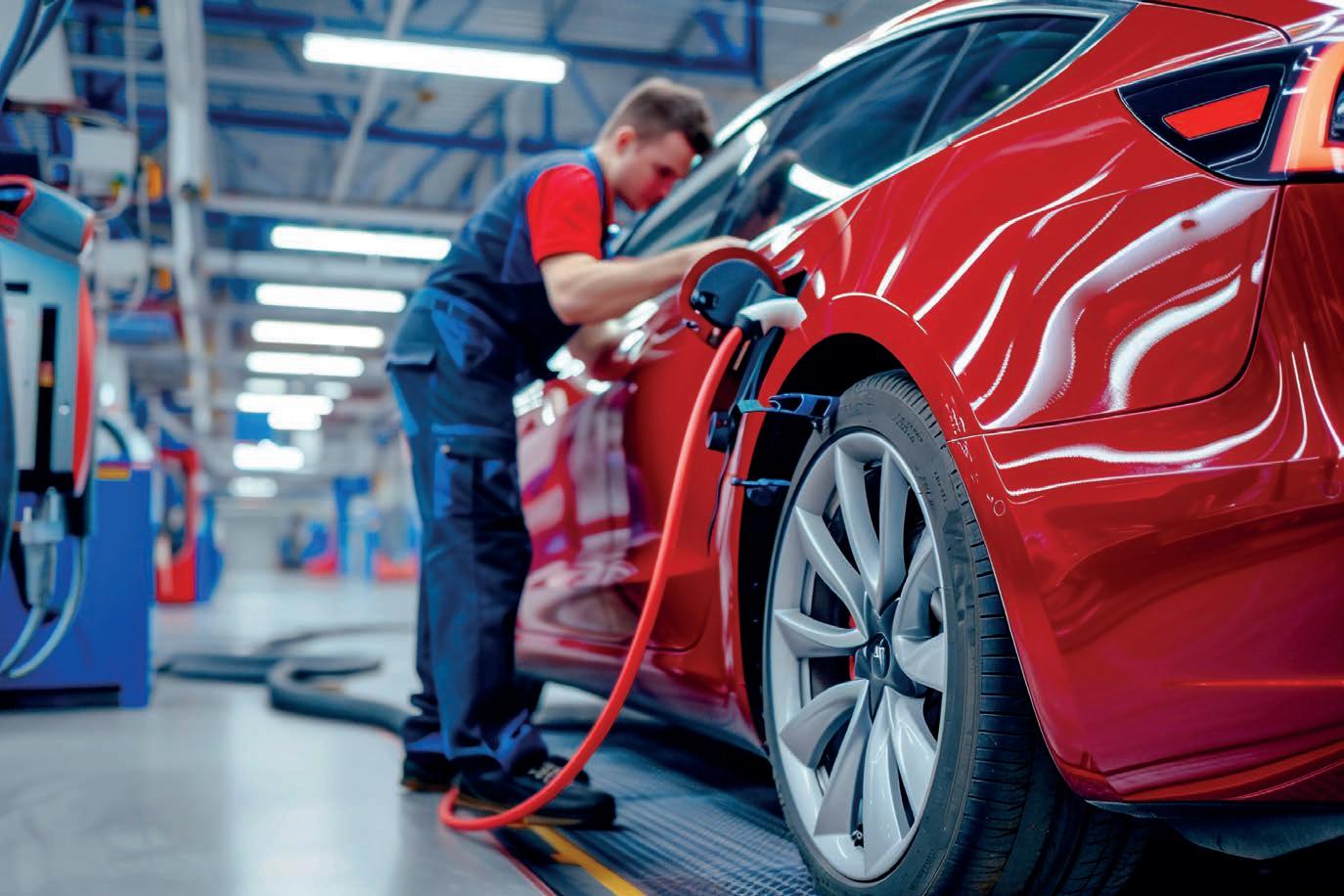
training
The life of an automotive technician today is worlds apart from what it was just a few years ago.
Diagnosing faults via computer, reprogramming ECUs, and updating vehicle software are now everyday tasks in the workshop. The days of purely mechanical repairs are giving way to highly technical, digital processes, and the pace of change isn’t slowing down.
Australia’s automotive landscape is uniquely complex. Our geographic vastness and diverse regional needs mean that internal combustion, hybrid, and electric powertrains will likely coexist in workshops for many years to come. While ambitions to make Australia ‘the next Norway’ in EV adoption have quietened, the transition is well underway, albeit in a form that’s uniquely our own.
This variety makes training particularly challenging. But despite ongoing skills shortages across the sector, MTA NSW is doubling down on its mission to support members, apprentices, and auto businesses in keeping pace with technology, while reshaping public perception of the industry along the way.
“The perception is still that of a dirty environment for the duration of an apprentice’s working life. That’s simply not the case,” says Jason Steporowski, General Manager – Memberships, MTA NSW. “We’ve seen members start out as a car washer, technician or parts interpreter and go on to become a
business owner or dealer principal.”
“It’s a large industry, and it’s evolving rapidly. You’re not stagnant, there are opportunities everywhere.”
One of the most surprising developments in recent years is the uptake of EVs in regions where it was once assumed they’d never gain traction.
In Moree, regional NSW, MTA trainers were struck by the number of EVs parked on the main street, alongside the usual lineup of farm trucks. This isn’t an anomaly. Farmers, often early adopters of solar energy, are seeing clear financial and environmental benefits from electrification. With diesel among the highest operating costs on a farm, pairing renewable energy with electric vehicles and machinery just makes sense.
MTA NSW’s specialist trainers, some of whom have studied in US automotive classrooms, have also observed growing alignment between the auto and tech industries. In the US, education providers are integrating automotive and IT training, recognising how closely the two are now linked.
“The automotive department and IT department are now often the same thing,” Steporowski explains. “Gone are the days when workshop systems ran on clunky, outdated software. These days, they’re cloud-based, modern platforms with increasing complexity and capability.”
The shift seen in US training environments could provide a valuable
roadmap for Australian institutions. As emerging technologies reshape what it means to work in the industry, training must evolve too, and with it, the appeal of automotive careers is broadening to attract a new generation of talent.
As Stavros Yallouridis, CEO at MTA NSW, recently noted in a release discussing some of the reforms that are currently underway in preparedness:
“As the largest private automotive Registered Training Organisation (RTO) in NSW, with over 2,200 apprentices in training, we’ve already helped more than 800 individuals complete EV training. This demonstrates not only the industry’s readiness to adapt but also the strong demand for these skills as the market evolves.”
“This modest but growing segment underscores why the timing of these regulatory reforms is appropriate. It’s important to undergo due diligence and preparation without undue urgency, as the market naturally evolves.”
As we move through the second half of 2025, there’s much to look forward to, particularly in how we train and prepare the next wave of automotive professionals. Whether you’re entering the trade or already deep into your career, opportunity abounds.
“This is the biggest advancement in our industry in over a hundred years,” says Steporowski.
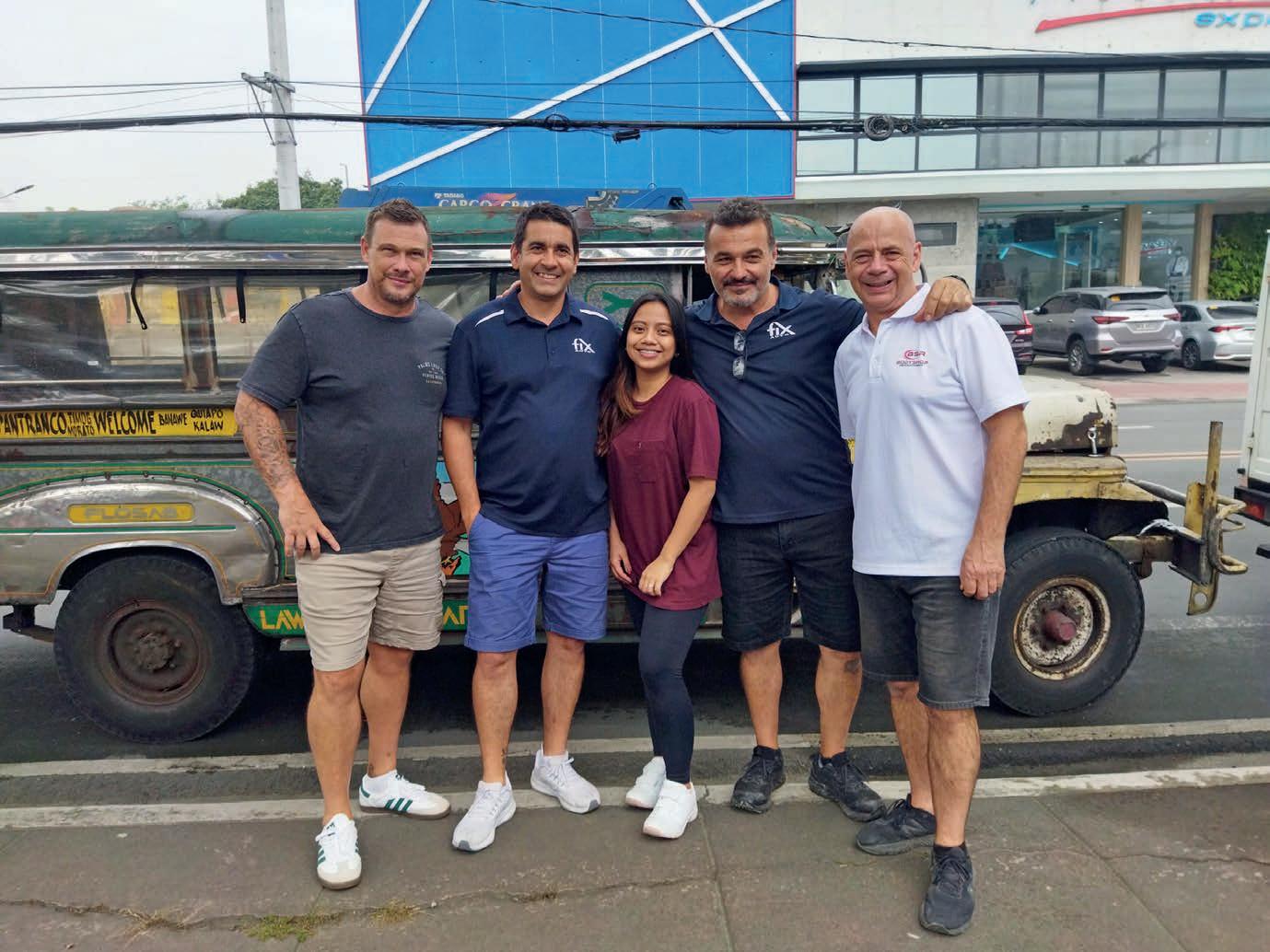
Living in the Philippines and loving her career working with the Bodyshop Recruit team, Alecks Genota is the behind-the-scenes guru for all things recruitment.
More than just a job, Alecks has discovered her niche, and many lessons along the way.
As the administrative assistant, Alecks helps to manage the day-today operations of the recruitment and outsourcing sides of the business.
Her role is a mix between team coordination, client relations, process improvement, and making sure everything runs according to the plan. Working remotely, Aleck’s often
travels to Manila to meet Bodyshop Recruit director, Ash Jardine, and other team members to trade test panel beaters and spray painters.
Alecks is originally from Santa Rosa in Laguna, south of Manila. Now she lives eight hours north of Manila.
“I love being away from the metro and all the traffic,” Alecks says.
“Working remotely in the Philippines has been great; I get to enjoy the best of both worlds, living in my home country while collaborating with amazing people in Australia.”
With a diverse career background, Alecks has found all her skills to be transferrable into the repair industry.
“I studied dentistry and loved it,” Alecks says.
“I was doing well in dental school, but then I took an 18-month break to serve full-time in our church. When I returned, I realized that I no longer saw myself working in a dental clinic.”
Wanting more freedom in her work, Aleck’s looked around for other opportunities.
“I wanted more flexibility in my schedule, the freedom to work remotely, and the ability to travel when I wanted,” Alecks says.
“The pandemic became a turning point, pushing me to explore remote work, which
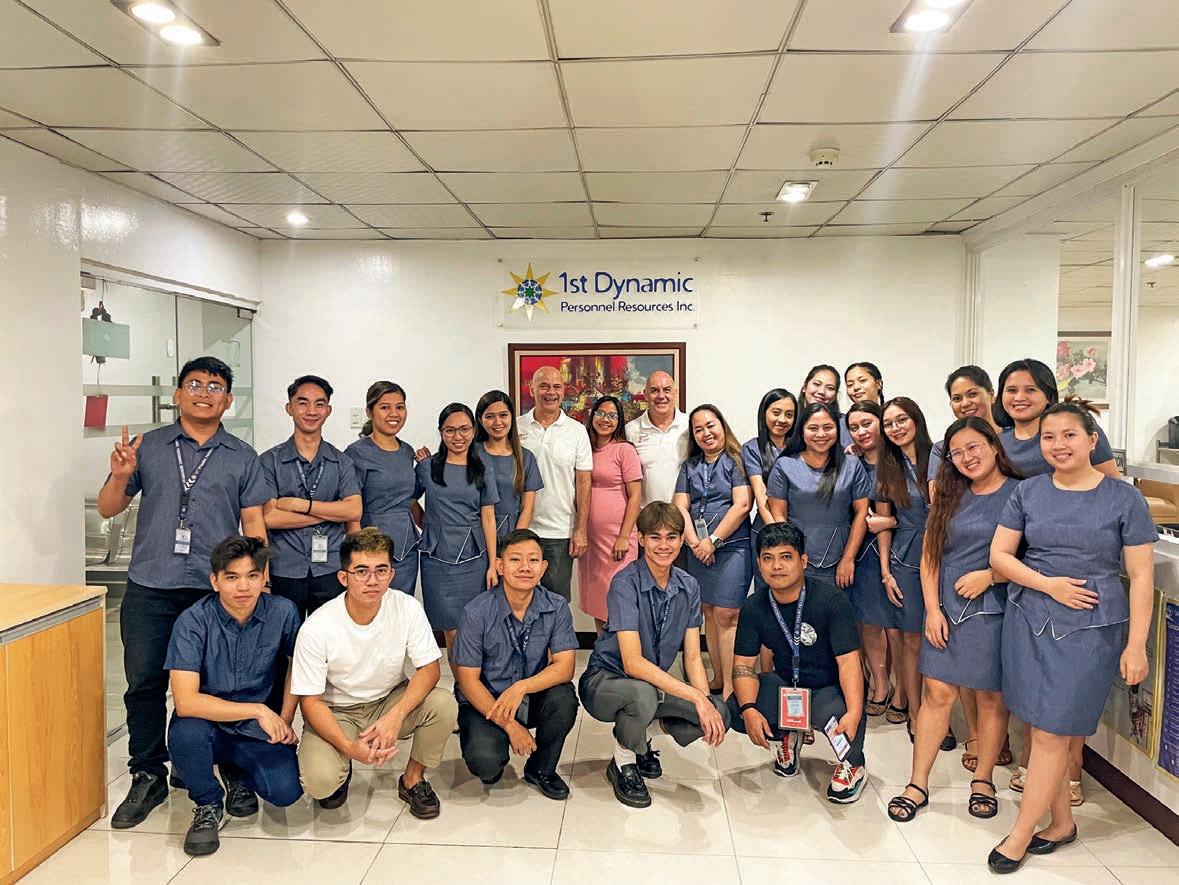
eventually led me to where I am today.”
With no prior experience or relation to the industry, Aleck’s found herself in the middle of fresh business that was only just getting started.
“I didn’t exactly plan to work in the automotive industry—it kind of found me,” Alecks says.
“My background was in the medical field, but during the pandemic, I discovered a passion for operations and recruitment.”
“I spent a couple of years freelancing for clients in the US, Canada, and Singapore, helping them streamline processes and hire the right people.”
A cousin of Aleck’s knew her passion for operations and recruitment and forwarded her a job post she had found online.
“The post mentioned occasional travel, and I thought, working from home with the chance to travel? Sounds like a win,” Alecks says.
“At the time, Bodyshop Recruit was just a startup—just me and Ash. We built the business from the ground up, and now, we’ve expanded into virtual teams that support the repair industry.”
Alecks finds her job fulfilling and inspiring, as her job is more than finding
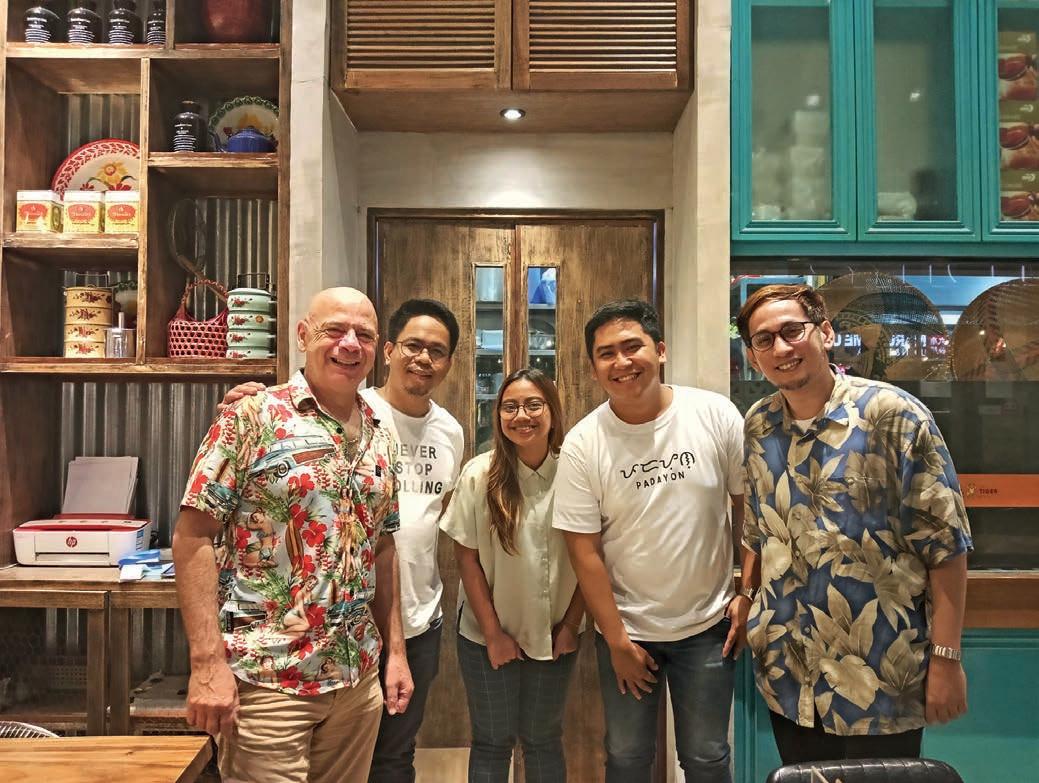
the right workers for repair shops.
“What makes this job truly fulfilling is seeing how we’re changing lives,” Alecks says.
“Whether it’s helping Filipino workers land opportunities in Australia or giving virtual estimators the chance to earn five
times more than the average salary here. It’s rewarding in ways I never expected.”
Managing people
Managing a team of 30 staff members, Alecks has learned a lot of skills to navigate
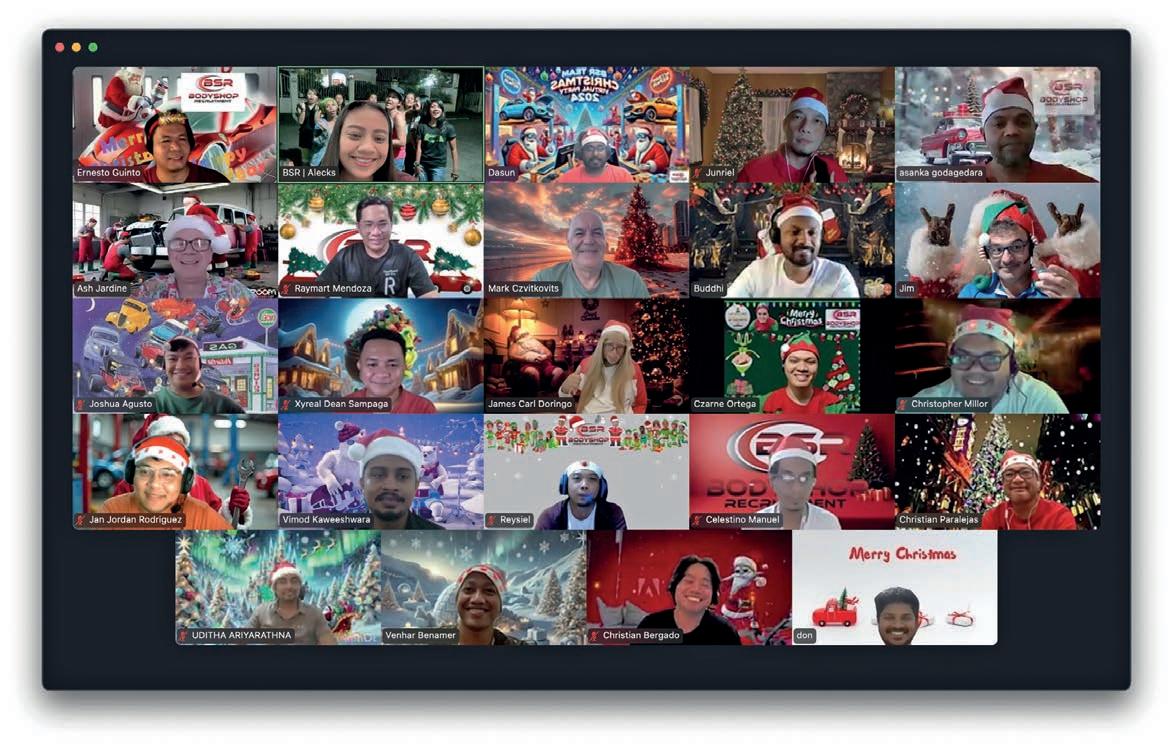
the challenging and positive times.
“It’s definitely a challenge, but one I genuinely enjoy,” Alecks says.
“No two days are ever the same, and if there’s one thing I’ve learned, it’s that people management isn’t a one-size-fitsall job.”
“On some days, it’s about structure and efficiency, making sure processes run smoothly. Other days, it’s about adapting on the fly, handling unexpected issues, and keeping everyone engaged.”
Alecks highlighted how her approach to managing a team is a balancing act.
“I’ve had to master the art of balance, knowing when to be firm, and when to be flexible,” Alecks says.
Her role has helped to develop her skills in leadership, conflict resolution and process improvement.
“If I’m being honest, the biggest skill I’ve gained is patience,” Alecks says.
When you’re managing different personalities and work styles, you quickly learn that patience and a good sense of humour is just as important as strategy.”
Alecks credits her boss, Ash on teaching her how to manage people.
“I’ve learned a lot of my skills through working closely with Ash,” Alecks says.
“He’s been a great example of leading with both confidence and understanding, knowing when to push people to be
better and when to step back and give them space to grow.”
“Watching how he handles different situations has definitely shaped the way I approach leadership.”
Earning respect
Not one to dwell on being among a male dominated industry, Alecks believes in earning trust and respect, regardless of gender.
“Honestly, I don’t think much about the fact that there aren’t many females in the repair industry,” Alecks says.
“Mainly because at Bodyshop Recruit, I have a voice. My thoughts and opinions are valued, and I’ve always been encouraged to speak up and contribute. That kind of environment makes all the difference.”
Alecks outlined that she approaches challenging clients with a strong work ethic.
“Of course, there have been moments where I felt I had to prove myself more, especially with clients,” Alecks says.
“I’ve learned that respect is earned by the work you do. I let my results speak for themselves, and over time, that’s what matters most.”
Working at Bodyshop Recruit, Alecks has leaned into their values and has embodied them into her work style and attitude.
“Within Bodyshop Recruit, I’ve been lucky to work with a team that values performance over anything else,” Aleck says.
“It’s never about gender. It’s about getting the job done and doing it well.”
Overcoming personal challenges that coincide with work is something that Alecks had to navigate early on in her career in repair.
“Having my first baby while balancing a demanding role was definitely a challenge,” Alecks says.
“During my third trimester, I struggled with pregnancy brain, which made it frustrating to not be as sharp as I used to be.”
“Simple tasks that once felt effortless suddenly required extra focus, and I found myself second-guessing things I normally handled with ease.”
After having her daughter, Alecks found a new challenge in balancing motherhood and her career.
“When I returned to work, the real challenge began,” Alecks says.
“Juggling motherhood, work responsibilities, and my own well-being. There were days I felt like I wasn’t doing enough in either role and finding that balance took time.”
“To get through it, I had to completely
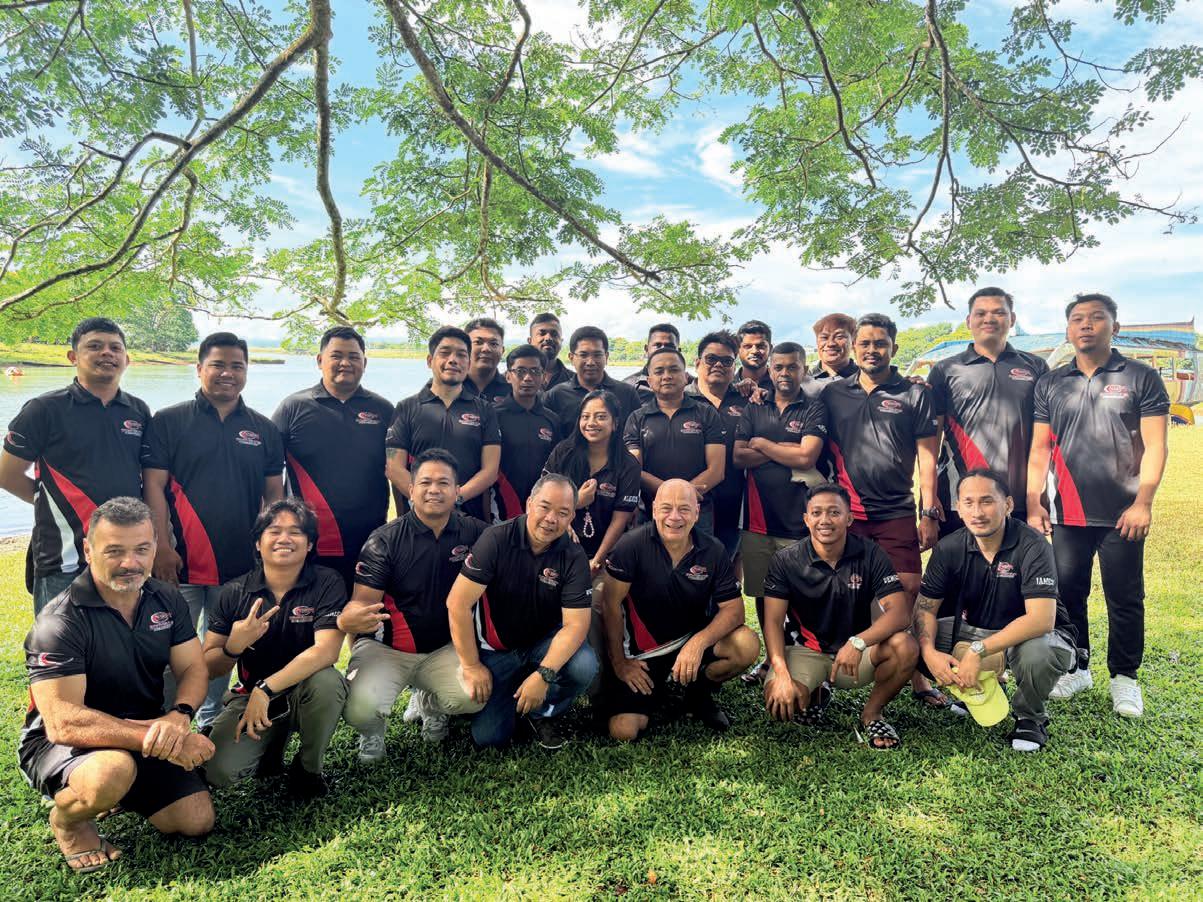
rethink the way I worked—prioritizing better, leaning on my team more, and setting clear boundaries.
“I also had to cut myself some slack and realize that I didn’t have to do everything perfectly—I just had to keep showing up and giving my best.”
Alecks leaned on her colleagues for support in the early days of becoming a mother, but has now found her new groove.
“Honestly, I don’t think I would’ve managed without Ash and Jim being incredibly supportive,” Alecks says.
“They never made me feel like I had to choose between being a good mum and being great at my job. Their flexibility and trust allowed me to find my rhythm.”
Alecks is focussing on her strengths and the passion she has for problem solving and developing and implementing efficiencies.
“Nothing is more satisfying than fixing
a broken process, seeing the impact, and knowing you’ve made someone’s job easier,” Alecks says.
“As for the industry, I love that there’s so much room for innovation. Virtual estimating has already revolutionized the way shops operate, and with the rise of AI and technology, I can’t wait to see what’s next.”
Alecks is looking forward to where the industry will go with the rapidly evolving technological advancements that allow people to work and complete jobs virtually.
“Virtual teams are widely used in many industries, but the automotive repair sector has been slower to adopt them,” Alecks says.
“When we introduced virtual estimators to the industry, it came with challenges.
“But once repairers saw the benefits firsthand—faster turnaround times, improved accuracy, and cost savings, they realized it was a game-changer.”
“Our pilot shops who took a chance on us in 2023. Their willingness to innovate paved the way for broader industry adoption.”
Finding the joy in little things, Alecks enjoys spending time with her daughter and with her family.
“Aside from family time, it’s me and my Kindle against the world,” Alecks says.
“I love reading, especially about business, self-help, psychological thrillers. You name it.”
“I’m also a sucker for spontaneous road trips. If there’s a chance to get in the car and go somewhere new, I’m in.”
For years to come, Alecks is looking forward to continuing growing in her career.
“I want to help BSR expand as much as I can,” Alecks says.
“We’re building something amazing, and I want to see just how far we can take it.”

Estimators play a vital part in the workflow of every collision repair workshop, so keeping their skills up to date is as vital as other technicians in ensuring safe, complete and quality repairs. I-CAR Australia unveils a new focus in its ProLevel training program.
As the collision repair industry navigates rapid changes in vehicle design, safety technology, and repair expectations, the need for accurate, timely, and rolespecific training has never been greater.
I-CAR Australia continues to play a critical role as the connector—linking industry stakeholders with training solutions that are relevant, responsive, and ready for the future. Its success for many businesses is its agility in staying up to date and aligning skills, technology and repair capability across the sector.
Whether it’s responding to the rise of electric vehicles, ADAS calibration, advanced materials, or insurer-led repair standards, I-CAR ensures the right training reaches the right people, at the right time.
Introducing the updated ProLevel Training Program
To further strengthen its support of a skilled, modern workforce, I-CAR Australia has commenced a full refresh of its ProLevel training program, beginning with the Estimator role.
This updated training framework is designed to reflect the complexity of today’s vehicle repair environment and the increasing importance of each team member’s role in delivering complete, safe and quality repairs.
The estimator: cornerstone of a successful collision repair process
I-CAR Australia COO Jason Trewin explains that in today’s fast-evolving automotive repair industry, the estimator plays a mission-critical role—one that directly impacts repair accuracy, customer satisfaction, profitability, and compliance.
“In many ways, the Estimator is the heartbeat of a collision repair facility. Their skill and knowledge determine how the repair begins—and often how it ends,” Trewin says.
Gone are the days when estimating simply meant writing up damage.
Today’s Estimator must be part technician, part customer service professional, part compliance officer, and part production planner.
Why the estimator role is so vital:
1. First point of technical accuracy
The Estimator is the first line of defence in ensuring repairs follow OEM procedures. Their ability to assess damage accurately—including hidden or structural impact—can determine whether a vehicle is repaired safely or falls short of manufacturer expectations.
2. Blueprint for the entire job
Every successful repair starts with a precise and complete estimate. This
document becomes the roadmap for the technician, refinisher, and parts team—guiding decisions that affect cycle time, material usage, and quality outcomes.
3. Compliance and liability control
Insurers, OEMs, and regulatory bodies are placing greater pressure on repair accuracy and documentation. Estimators must understand how to integrate repair standards, ADAS considerations, EV safety, and OEM positions into every assessment.
4. Communication hub
Estimators are the critical link between the workshop and the customer, insurer, and supply chain. Their ability to clearly explain repair timelines, manage expectations, and document progress affects the overall customer experience and brand trust.
5. Business performance driver
A well-trained Estimator can minimise supplements, reduce rework, streamline production, and protect margins. They are integral to the financial and operational success of every modern repair business.
Industry connection
Industry connection has been at the heart of I-CARS drive to develop and deliver smarter, more relevant training.
“Our goal is to stay connected to every

corner of the industry—so we can ensure the workforce is equipped for what’s on the road now, and what’s coming next.”
Trewin says.
It achieves this with by maintaining active relationships with key industry groups, including:
• OEMs: aligning training with current repair procedures and structural technologies
• Insurers: to meet compliance, liability, and repair quality requirements
• Individual Workshops and Collision Groups: to deliver training that fits real-world needs
• Refinish companies and equipment suppliers: Ensuring that the entire industry has a voice
• RTOs and Trainers: to support national access and delivery
• Government Skills Councils: including AUSMASA (Mining and Automotive skills Alliance) and as a representative on its SWAP (Strategic Workforce Advisory Panel) to influence future workforce policy
With this evolving training framework, I-CAR Australia continues to serve as the link between:
• Vehicle innovation and technician knowledge
• Industry expectations and training delivery
• Policy development and workshop capability
By keeping one hand on the pulse of the repair floor and the other in national planning discussions, I-CAR training is fit-for-purpose, future-proofed, and aligned to real-world needs.
Following the Estimator update, I-CAR will continue to modernise the ProLevel training pathways for:
Stage One: New estimator pathway released
The first phase of the ProLevel update focuses on the estimator, a role that has evolved into a technical and strategic linchpin within repair facilities. I-CAR Australia’s updated Estimator training pathway includes 19 new or refreshed courses tailored to today’s repair realities— supporting accuracy, compliance, and professionalism from start to finish. Deep focus on:
• Structural Technicians
• Non-Structural Technicians
• Refinish Technicians
• Production Managers
Each pathway will reflect modern role expectations, new vehicle technologies, and real-world repair practices. These updates will be finalised over the next coming months.
For more on I-CAR Australia’s updated ProLevel training and industry partnerships, follow us on LinkedIn or visit: i-car.com.au
• Repair planning & documentation
• Damage analysis
• A DAS & EV considerations
• OEM procedure sourcing & usage
• Blueprinting best practices
• Training aligned to industry, insurer and OEM expectations
• Available through online, virtual, and face to face platforms.
• Counts toward Gold Class™ and Platinum Individual credentials
• This refresh ensures estimators are fully equipped to support repair outcomes, reduce cycle times, improve customer experience, and protect business liability
Sometimes it is a bit of luck that lands an apprentice with the right opening into a business. But once there, it is an attitude to learning and an atmosphere of encouragement that can make all the difference and turn an opportunity into a career.
For McClure Refinishing apprentice Shané Meyer, the unfolding differences between idea and reality can make for surprising results. When Shané was at school she had the idea that her pathway would lead into a university degree in forensic science. Now several years later, as a spray painter and loving it, it’s her passion for detail that is perhaps one of the few carryovers of that early plan.
ended up at a truck shop, and now I work
about his journey with spray painting and how much he enjoyed it compared to the One of the standouts of her journey so
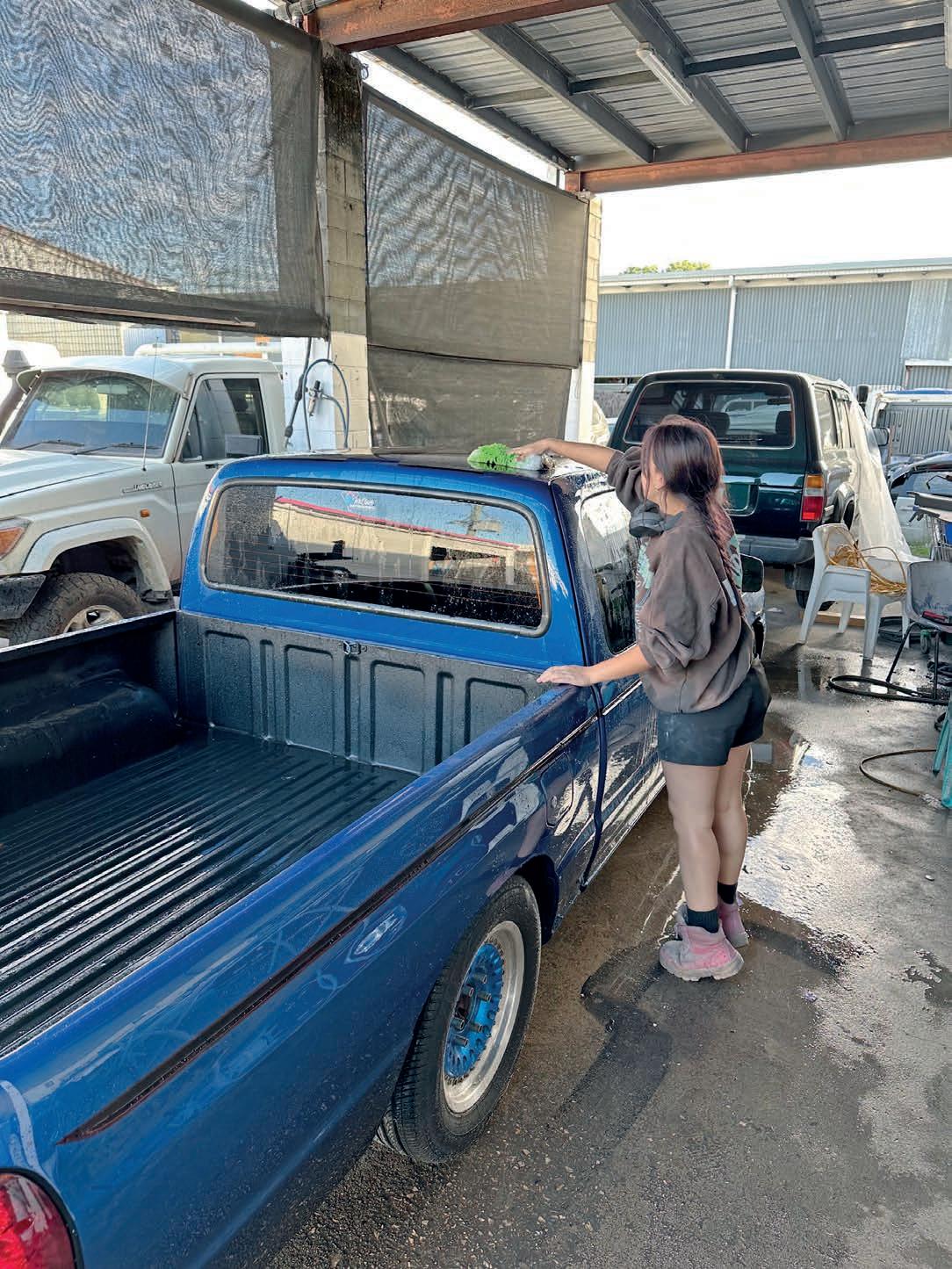
“I feel like I was very, very lucky that Anne and Ben had the space to take me on at the time that they did, “ she says. “I don’t feel that any other big shop that pushes jobs through would have given me the time to learn the stuff that I have learned and in such a short time.”
Shané says key to her development has been a supportive atmosphere that was evident from the beginning at McClure Refinishing.
“It was really easy to start at McClure’s,” she says. “They were all really welcoming. I didn’t feel scared or anything and just got straight into it. They give me a lot of allowance to do things that I haven’t tried before, such as
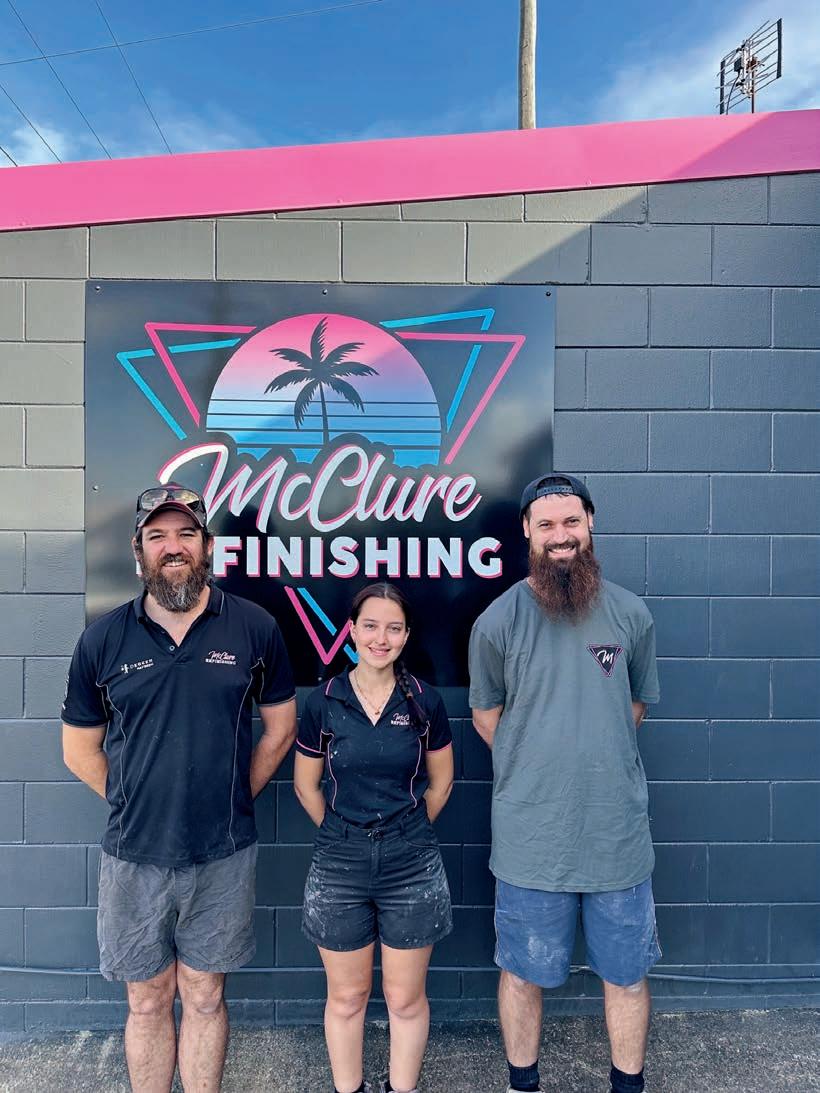
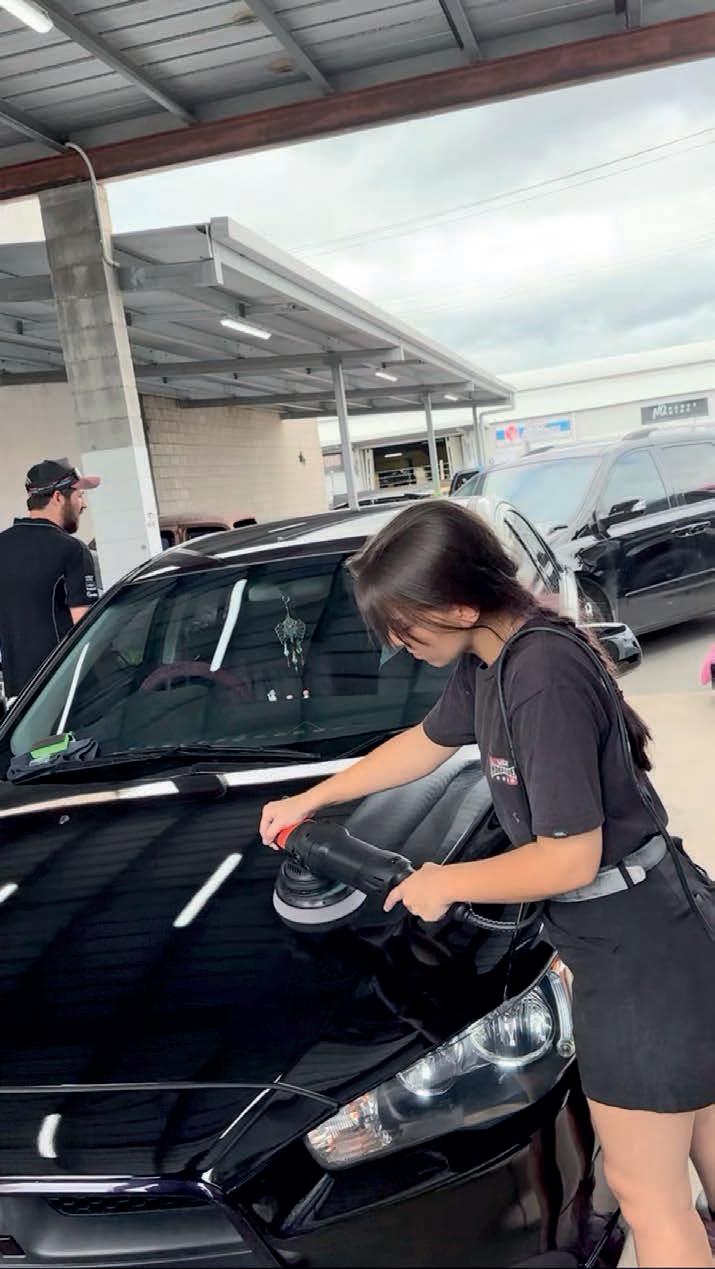
good atmosphere for that.”
Learning incrementally with the right support has added up to a point in her career where, as a third year, she can look back with a sense of achievement.
“I could not have imagined it, “ she says. “All the stuff that I didn’t know back then (at Autobarn) to everything I’ve learned now. it feels like a big accomplishment for me.”
Custom paint and linework remain among her favourites. Developing the skills has enabled her to do some work on motorbike tanks, where she loves the finer detail. The work in general gives her the satisfaction of a job well done.
“Just looking at the finished product!,” she says. “Especially when we’ve got resprays and they come in and you see what it started out as. Compared to the finished product that you have helped produce, that is pretty rewarding.”
Shané says she has found working with new technology like a UV prime light and new sprayguns exciting and even some of the difficult technical elements of the job like colour matching.
“I’m starting to get the hang of it. It is pretty hard, especially looking at the whites in the sun when you can barely see the panel but I’m getting there. And
I’ve always got my tradesmen there to help me and decipher what to do.” and hopefully learn even more by just doing the job from start to finish. I’ve
Loyalty Shané has her ambitions firmly set

When it comes to a repeatable, consistent paint application process, a precise spray gun setup is key. Unfortunately, some painters haven’t got the message. Using the correct product mix, combined with the same spray gun setup, the same application environment and the same technique for each job, should make it straightforward to produce a consistent end result which is the mark of a skilled painter.
I still meet the odd painter who reckons they can judge the correct spray gun inlet air pressure by simply pulling the trigger and listening. How can that possibly be accurate when there are so many variables? For example, every gun makes a different sound, the fan adjustment changes the sound, the spray booth and workshop are often noisy and you might even suffer from a touch of industrial deafness. I have had people set their pressure using that method and when I have checked it with a gauge it was found to be way out. Getting the pressure right is important because it affects so many things. For example, higher pressure makes basecoat metallic particles stand up, leaving a darker appearance on the angle which creates a halo around
the blend edge. It can also cause mottle issues and ‘basecoat profiling’ where the paint dries before it hits the panel and leaves a sandytype finish. Low pressure is also an issue – particularly with clearcoats. The result is solvent boil, a soft film and poor bake cycles, as well as a final appearance that is not up to scratch. Pressure also impacts product coverage. The higher the pressure the more you lose in poor transfer efficiency so more product is used and more coats are required to get coverage, resulting in cycletime and job cost blow outs.
Tips & recommendations
Pressure gauge: priority is a method of accurately measuring inlet air pressure. The most convenient is to buy a SATA DIGITAL model which has a built-in digital gauge. The latest SATA jet X gives you two options – the jet X DIGITAL or the jet X DIGITAL Pro – and both come with a number of handy features. If you don’t have a SATA gun, at least
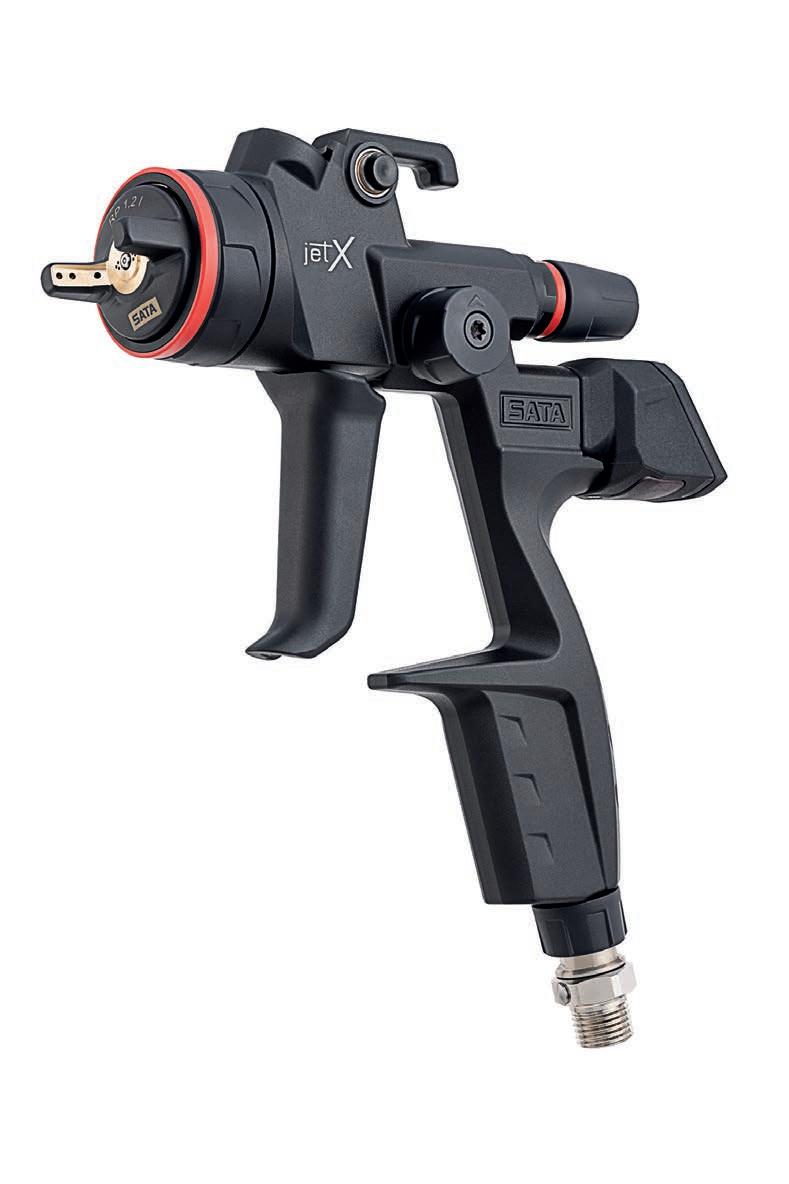
adjust air pressure and material, give it a test and you are ready to go! Check gun performance regularly:
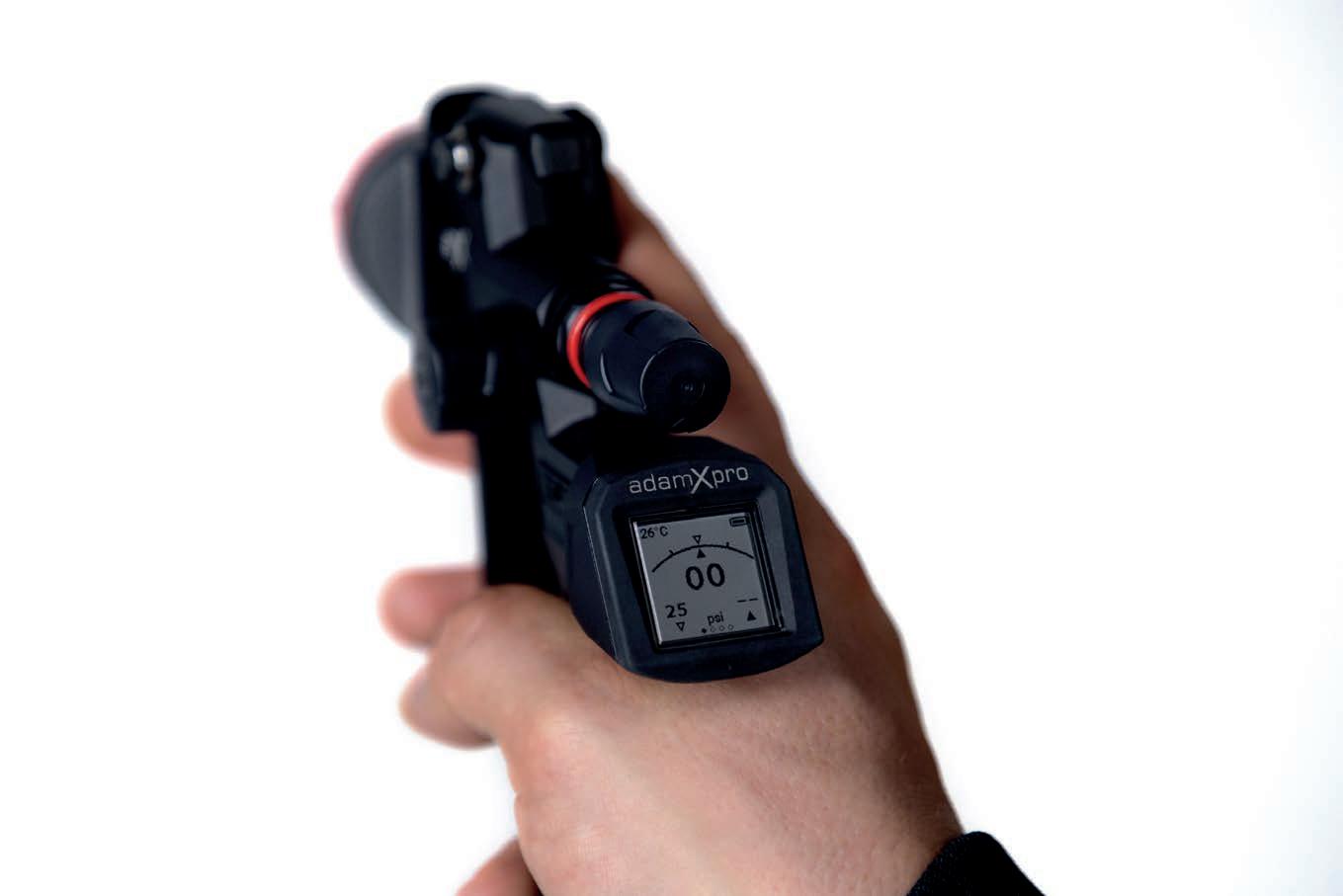
a spray gun setup wall chart which is packed with handy data, check the PPG Product Data Sheet or speak to your PPG Territory Manager.
Tech tip is brought to you by Trevor Duke, PPG National Training Manager ANZ.
with Steven Theron
As windscreen technology advances it is vital repair training keeps pace. Sika has revolutionized automotive aftermarket training for vehicle glass replacement with
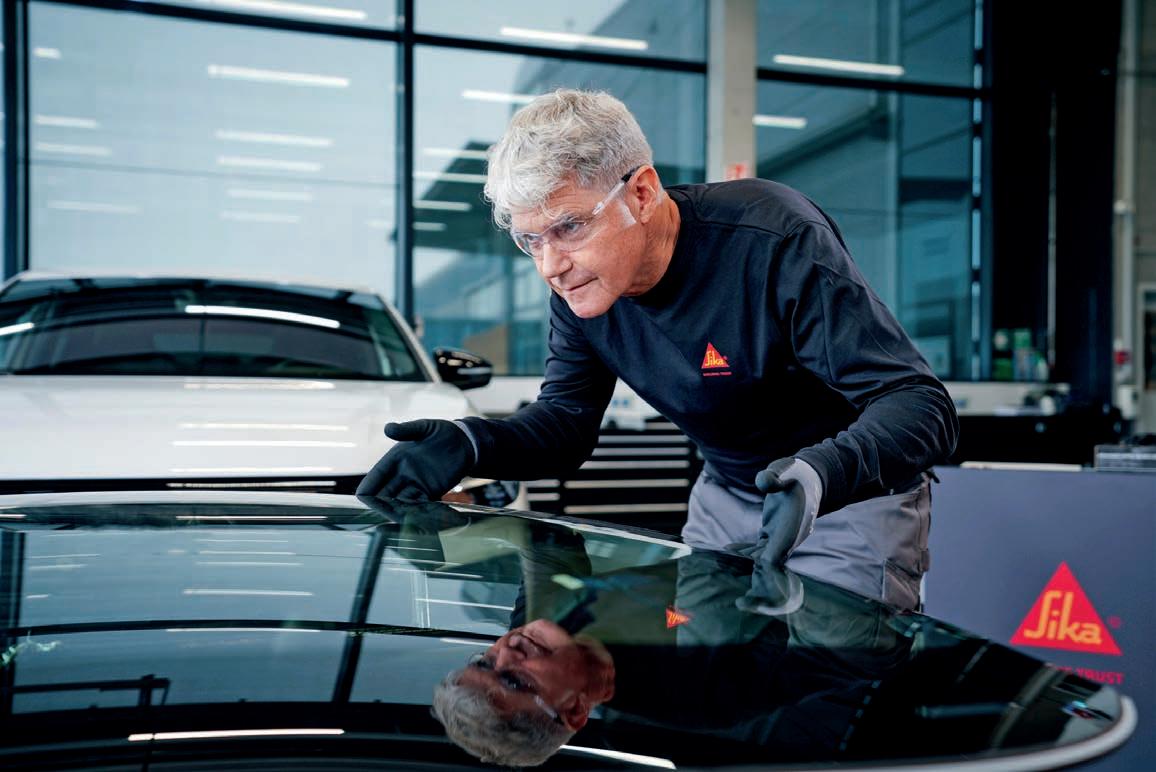
chemicals, has launched its groundbreaking Automotive Aftermarket Academy, a digital training platform set to transform how automotive technicians master vehicle glass replacement.
Following its successful regional debut in Australia in late June, this strategic initiative marks a new era in Sika’s engagement, training, and support for its partners and customers worldwide.
The academy represents a significant strategic investment and the culmination of a two-year, cross-functional effort led by Sika Corporate and the US Team, with support from regional stakeholders. This comprehensive online platform is designed to provide professional, safetyfirst education, acting as a key market differentiator for Sika in the aftermarket.
The “Master the Art of Auto Glass Replacement!” Academy is built on an interactive e-learning experience, providing access to 43 in-depth instruction videos and a comprehensive training library covering the complete vehicle glass replacement process. Unlike traditional methods, the program features interactive videos in realistic settings, allowing participants to observe actual auto glass replacement scenarios rather than just theoretical concepts. This immersive approach ensures that learners gain a true understanding of the techniques, materials, and precision required for a high-quality, leak-free installation every time. It effectively removes the guesswork from the crucial process of vehicle glass replacement.
The online curriculum delves into a wide range of essential topics, ensuring a thorough understanding of the entire vehicle glass replacement process. Key areas of study include:
• Step-by-Step Installation Overview: From initial vehicle inspection and glass preparation to adhesive application and final cleaning, the course provides a detailed, methodical approach.
• Material Science and Application: Participants will gain expertise in selecting and applying the correct Sika materials, including various surface preparation options like Clear Aktivator, All Black, and Primerless to Glass processes, as well as understanding different adhesive
types (e.g., polyurethane) and their characteristics.
• Pinchweld Preparation: The academy emphasizes the critical importance of proper pinchweld preparation, including full-cut methods, corrosion removal, and bare metal treatment, to ensure optimal adhesion.
• Advanced Considerations: course covers specialized scenarios such as bonding to aluminium and FRP bonding flanges, dealing with freshly painted vehicles, and specific procedures for special weather conditions.

real-world challenges. The content is aligned with OEM-compliant methods and reinforces best practices and safety standards, with safety truly at its core.
• ADAS and Recalibration: Given the prevalence of ADAS, the program includes crucial training on recalibration processes, highlighting the impact of windshield replacement on these vital safety systems.
• Safety and Standards: A strong emphasis is placed on health and safety protocols, minimum drive-away times (MDAT) for various vehicle types, and adhering to industry standards. Sika’s commitment to safety is evident in their rigorous testing, which often exceeds federal safety standards like FMVSS 212.
• Problem Solving: The academy also addresses common challenges and offers solutions for issues like poor adhesion, sealing leaks, and dealing with different types of glass (thermal coated, organic glass, gasket sets, used glass).
• Certification: Upon successful completion of the course, participants will receive an official certification, a testament to their expertise in professional vehicle glass replacement. This certification serves as valuable proof of their enhanced skills and commitment to industry best practices. A key emphasis within the academy is the importance of using OEM approved polyurethane adhesives to return the vehicle to its original equipment manufacturer (OEM) standard for safety. Adhering to the correct procedures is paramount for customer safety, as a properly bonded windshield is essential for the structural integrity of the vehicle, acting as a crucial component in maintaining roof crush resistance and serving as a backboard for airbag deployment. This crucial aspect ensures that the vehicle’s structural integrity and occupant safety features are fully restored after glass replacement, aligning with Sika’s commitment to safety.
The online academy offers a flexible learning schedule, accessible anytime, anywhere, accommodating the demands of busy work schedules. End-users can train at no cost and receive certification to enhance their professional qualifications. This includes a downloadable certificate and a LinkedIn-ready badge to showcase newly acquired skills.
Enrolling in the Sika Automotive Aftermarket Academy is straightforward. Users can access the course by scanning the provided QR code or by visiting the Sika Knowledge Centre Online Training Platform directly at: aus.knowledge.sika.com/
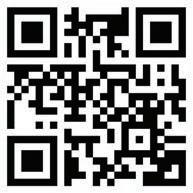
An opportunity for wider reach Sika’s long-standing reputation as a trusted supplier and manufacturing partner to the automotive industry,
resource for auto glass professionals. By mastering the techniques, materials, and precision taught in this program, technicians can confidently deliver highquality, safe, and durable vehicle glass installations, ultimately benefiting both their businesses and customer safety on the road. Sika’s integration of this digital training will enable a wider customer reach through nationwide access to online education, increase efficiency by freeing up resources for targeted business development activities. Furthermore, it will foster stronger customer engagement and loyalty development through ongoing training. This is a first-of-its-kind training concept, simplifying the onboarding and training of new customers.
The platform and content were developed through a region-wide team effort with input from across regions and support from corporate departments. Special acknowledgment goes to the Swiss Aftermarket team and partner Glass Troesch, who generously supported the filming location and onsite collaboration.
With digital platforms available in English, German, Spanish, French, and Italian, Sika is setting a new benchmark in training excellence and commercial impact, shaping the future of Automotive Aftermarket education.
For more details on Sika solutions for the automotive aftermarket, contact Sika or visit the sika website: www.sika.com/aftermarket
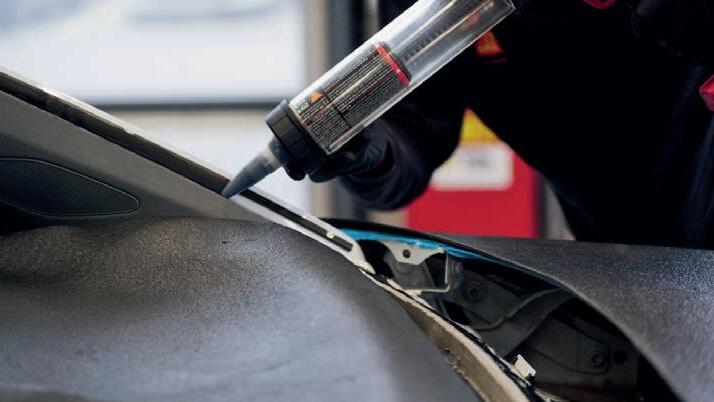
Three years on since the landmark Right to Repair laws came into place, the federal government has ordered a formal review into the information sharing scheme and how it affects repairers and consumers.
The Motor Vehicle Service and Repair Information Sharing Scheme, which came into effect in July 2022 essentially aimed to open the door to access for repairers of the consumers choice to OEM information.
AASRA, which administers access to the repair information, has since generated thousands of members from the repair and collision sectors and covers about 87 per cent of the car parc.
AASRA has also been reappointed as the Scheme Adviser for a further two-year term — a move the Australian Automotive Aftermarket Association says signals confidence in its role and the industry support it provides.
But automotive technology is changing constantly and new car brands are coming onto the market, so the review will look at how these are affecting competition and whether access to information is affordable and sufficiently promotes choice.
The AAAA, who ran a campaign and was instrumental in making the laws happen,has welcomed the review.
“The law was a game-changer for our sector,” AAAA Chief Executive Officer Stuart Charity says. “It gave independent workshops fair access to essential repair information and helped drive down costs for consumers. But the way vehicles are built, serviced and connected has changed rapidly — and the law must evolve with it.”
The review, led by Treasury is part of the Albanese Government’s National Competition Policy reform agenda and will also look at how the scheme protects safety and security information, supports technical training and workforce capability and offers effective dispute resolution.
The AAAA has already outlined in its submission the key areas it says need reform;
• Telematics and real-time vehicle data: “As more diagnostics move online, access to telematics data is essential. The current law excludes telematics, leaving independent repairers at a growing disadvantage.”
• Access to online logbooks and service histories: “The Scheme does not
Brisbane will host the next big show for all things auto glass.
Following the success of the Melbourne event, the Auto Glass Association set the date for the next Auto Glass Trade Show on 19 September 2026, at the Royal International Convention Centre in Brisbane.
“After strong attendance at past events, the next show is expected to be our biggest yet,” it said in a release. “It will bring together repairers, suppliers, and industry professionals from across the country to explore new tools, technology, and industry updates. Mark the date in your calendar — we look forward to seeing you there.”
The AGA has also opened for expressions of interest for exhibitors with full event details to be released soon.
cover electronic logbooks, allowing manufacturers to use service history as a lever to steer customers away from independent workshops.”
• Clarity for data aggregators: “These third-party platforms help translate complex OEM information into practical repair workflows. The current treatment of aggregators under the law creates legal uncertainty and could jeopardise access.”
• Standardised access tools and costs: “Some manufacturers limit access to information via locked-down proprietary tools. AAAA is calling for support for open, standardised protocols like SAE J2534 to reduce costs and barriers.”
• Better training access for safetycritical systems: “Repairers must meet ‘fit and proper person’ tests to access high-voltage and security-related data — but training is not always available or recognised, creating unintended blocks.”
• Transparent pricing and stronger enforcement: “The law requires ‘fair market value’ for data access, but enforcement remains weak. Some brands still charge excessive fees or restrict access in breach of the rules.”

The insurance landscape is changing following the competition watchdog giving the green light to several big takeovers of state-based club motoring insurers.
The ACCC did not oppose Allianz Australia Insurance Limited’s proposed acquisition of the Royal Automobile Association of South Australia’s personal insurance business (RAAI). Earlier the ACCC had also given the nod to IAG’s buyout of RACQ.
Both decisions have drawn the ire of the MTAs who have condemned it as another blow to the industry, saying the takeovers by large corporate insurers could cripple independent repairers.
A third decision on IAG’s proposed acquisition of RAC Insurance from RAC WA had not yet been released.
On its SA decision, the ACCC said
there were sufficient competing insurers in South Australia to make the merger permissible.
“The ACCC found that other suppliers will continue to compete with, and constrain, a merged Allianz and RAAI after the acquisition, making the transaction unlikely to substantially lessen competition,” ACCC Commissioner Dr Philip Williams says.
“As well as being the two largest insurers in Australia, Suncorp and IAG also have a significant presence in South Australia. As such, both are likely to compete effectively against Allianz in South Australia even after it has purchased RAAI.”
The ACCC also found that the proposed acquisition was unlikely to substantially lessen competition in Qld.
IAG Managing Director and CEO Nick
Hawkins says the partnership would help protect Queenslanders.
“RACQ will maintain brand and customer relationships, while leveraging IAG’s scale, financial strength, best-inclass technology for claims, policies and pricing, customer orientated claims experience and underwriting expertise.”
MTAA Interim Executive Director Rod Camm said the concentration of market power among a few major insurers was reducing competition and weakening outcomes for consumers and small businesses.
“Australia is seeing a fast-moving consolidation of its insurance sector, with serious consequences for choice, pricing, and accountability,” Camm says. “Less competition means fewer options for consumers and increasing pressure on local repairers.”
Extreme weather events continue to play a major part in vehicle insurance claims with many policy holders believing things will get worse, a report finds.
The NRMA Wild Weather Tracker report found the autumn storms and flooding hit Queensland and NSW hardest, with almost a quarter of Queenslanders experiencing damage to their house or car during the floods and extreme weather.
While past years have delivered New Year and summer storms, often with severe hailstorms damaging vehicles, autumn is traditionally the mildest season.
But the report details 1,387 severe weather motor claims during autumn.
Although this was only two per cent of all motor claims, it amounted to a larger portion in Qld where there were 352 severe weather motor claims and 980 severe weather motor claims in NSW.
This makes it seasonally the worst since 2022, as Ex-Tropical Cyclone Alfred hit communities in South East Queensland and Northern NSW in the first days of autumn, resulting in widespread flooding.
The Mid North Coast and Hunter regions of NSW experienced an extremely widespread flooding event at the end of the season.
Both events were classified as an

‘insurance catastrophe’ by the Insurance Council of Australia due to the “breadth and severity of damage caused to impacted communities”.
The report also predicts storms with large to giant hail are already becoming more frequent in the south and east of Australia with a predicted southerly shift in the areas at risk of hail in a warmer climate. Cities like Sydney, Adelaide, Perth, Canberra, and Melbourne, as well as inland regions from the Hunter to eastern Victoria, are possibly seeing an increased risk.
Queensland has been particularly hard hit this year with the state equalling the total number of claims due to wild
weather damage received in all of 2024 in just the first 66 days of 2025.
The report finds that while many people took preparatory action, almost three quarters were worried that natural disasters, such as storms, floods and bushfires are becoming more frequent and severe.
Seventy per cent expect wild weather to become more severe and frequent in the future.
But a high number, 79 per cent, feel they have a good understanding of the severe weather risks in their local area and 70 per cent know what steps they need to take to prepare for a severe weather emergency.
Hybrids and plug-in hybrids continue to grow in new car sales but the big ute is still king of the Australian car parc.
The half-yearly FCAI figures up until the end of June also show that China has notched up more than 100,000 vehicle sales in 2025, a record, and is closing in on Thailand as the second largest country of import.
In other trends, the number of new EVs continued to slip with only 31,826 sold in 2025, less than half the number of hybrids and 36 per cent down on 2024. The FCAI figures do not include Tesla or Polestar models.
The Electric Vehicle Council reports 4589 Teslas were sold in June. Drive reports this is a slight rebound but that overall sales of Teslas for 2025 were down 39 per cent on the previous year.
This combined total (with Tesla) shows pure EVs are still down 17.5 per cent on 2024.
Hybrids were up 14.9 per cent on 2024 while plug-ins have more than doubled since 2024 and have now sold 25,613 vehicles in 2025.
The continuing big story in the Australian car parc however, is the dominance of light commercial vehicles, at 25.3 per cent of the total market. The top four utes in June again were strong: Ford Ranger (6,293), Toyota HiLux (6,195), Isuzu Ute D-Max
(3,119) and BYD Shark
The BYD Shark is the conspicuous standout as a PHEV, making up part of the 210 per cent increase in their sales since 2024.
New vehicle sales across Australia totalled 122,509 units in June 2025, marking a 2.4 per cent increase over the same month in 2024.
Industries chief executive Tony Weber says the result highlighted the continued popularity of dual-cab utes
“In a market of more than 400 models, the top four utes made up 15.2 per cent of all sales during June. The rest of the top 10 was made up of SUVs and, when combined, models in the top 10 made up 27.2 per cent

The full application of the NVES has come into place but opinions are divided on its effectiveness.
The New Vehicle Efficiency Scheme was designed to assist the transition to EVs and other low emissions cars, with penalties for OEMS with polluting fleets set to start from July 1.
The FCAI argues that while it has succeeded in increasing the number of EV models available, major obstacles were still undermining the confidence of the public in buying them.
But the Electric Vehicle Council has countered that the scheme is achieving its aims by making more models available to meet low emissions transport targets and was therefore better for the whole community.
FCAI chief executive Tony Weber
agrees the number of models has increased, as OEMs work to meet the transition but says purchase price, charging infrastructure and the rises in electricity costs were deterring buyers.
“There are now more than 100 electric vehicle (EV) models and more than 50 plug-in hybrids available to Australian consumers,” Weber says.
“Despite the broad range of low and zero-emission vehicles on offer, EVs account for just seven per cent of new vehicle sales, well below earlier predictions.
“This is well below the level needed to meet the NVES objective, which is driven by aggressive targets that become vastly more stringent every year until 2029.”
“What is needed now is a serious,
coordinated effort to make the transition viable for all Australians, not just early adopters. To date, the Government has not put in that effort.”
Electric Vehicle Council chief executive Julie Delvecchio says the penalties and credits will encourage manufacturers to bring their best, most fuel-efficient vehicles to Australia.
“For the NVES to succeed, this next step is crucial because it incentivises manufacturers to bring their best cars to Australia, giving consumers even more choice,” she says.
“No matter your lifestyle, there’s an EV to suit every Australian with some costing just over $30,000 drive away.
The NVES is finally bringing Australians the cleaner, fuel-efficient cars they deserve.”
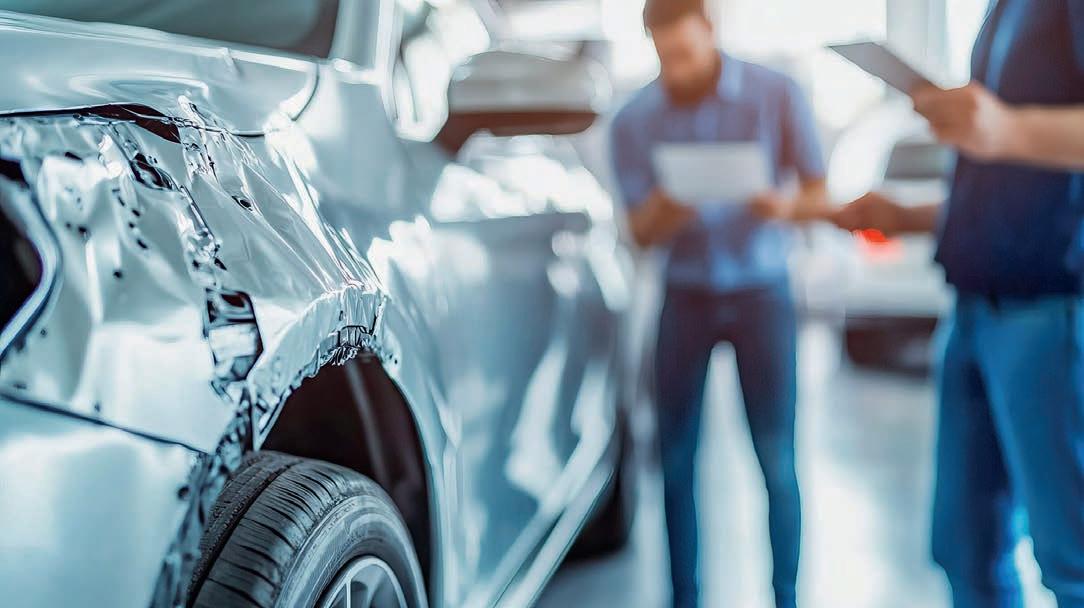
governing relations between repairers and insurers is nearing its next step with a final version now to be compiled.
Industry feedback for the draft MVIRI Code of Conduct was compiled in the first part of this year over four months, concluding in June, and will be now collated in anticipation of a final code being developed by 2026.
The Code Administrative Committee extended the feedback period by two months with an aim of generating as wide a pool of industry voices as possible.
This lengthy process follows the independent review by Dr Michael Schaper in 2022, who found the old code was largely unknown and underutilised by the modern repair industry.
The aim of the redrafted code has been to address the recommendations of Dr Schaper’s review and develop a document that is both amenable and binding to all parties.
The updated code aims to improve clarity, fairness, and effectiveness in several critical areas, including sanctions and penalties, assessment and estimation times, methods of repair, and the dispute resolution processes.
During the feedback period several MTAs held forums for members and reported repairers voiced their opposition to many elements in the draft, that needed further reform before it was fit for purpose.
Both the MTAA and VACC submitted
failed to properly address power imbalances in industry relations and wouldn’t provide a viable code to ensure a self-regulating collision repair industry.
“Rather than addressing the issues that have long undermined fairness in the industry, the draft risks entrenching insurer dominance, marginalising the professional judgement of repairers, and failing to deliver the transparency, enforceability, and governance standards expected of a modern coregulatory framework,” the MTAA argues in its submission on the draft.
“Key provisions either lack clarity or reinforce imbalances, while critical elements such as payment fairness, dispute resolution, and protections against insurer retaliation are inadequately addressed. Without substantive reform, the draft code will fall short of delivering the balanced, forward-looking framework that industry and consumers require.”
The VACC argues the code in its draft form grants insurers excessive control over repair methodologies, parts selection and pricing structures, while marginalising the professional expertise of qualified repairers.
The MTAA and VACC submissions want to amend a range of clauses in the draft code. They argue these changes better address the balance of responsibilities and judgement and create
Estimating: They are pushing to reduce insurer control over estimation methodologies and promote independent professional judgment from the repair industry, giving assessors with professional discretion and introduce an independent technical review mechanism for disputed estimates. They also want mandatory assessor and estimator qualifications with a nationally recognised certification for these roles.
• Dispute resolution: Mandate referral of disputes between signatory parties into the code’s dispute resolution pathway and the redesign of the CAC structure to ensure an independent Chair unaffiliated with any industry participant. Equal representation from insurers, repairers (including independents), and consumer groups.
• Parts: They advocate for informed, written consumer consent before using non-genuine or non-OEM equivalent parts and to limit repairer liability around repairer warranty obligations when where they follow insurer-mandated methods or parts.
• Payment: They want partial payment of undisputed amounts within standard payment periods, with an option to pay by instalment, where agreed within five business days.
• AI: I t wants mandatory human review of all AI-generated estimates and assessments and a right for repairers to challenge automated decisions.
with John Yoswick
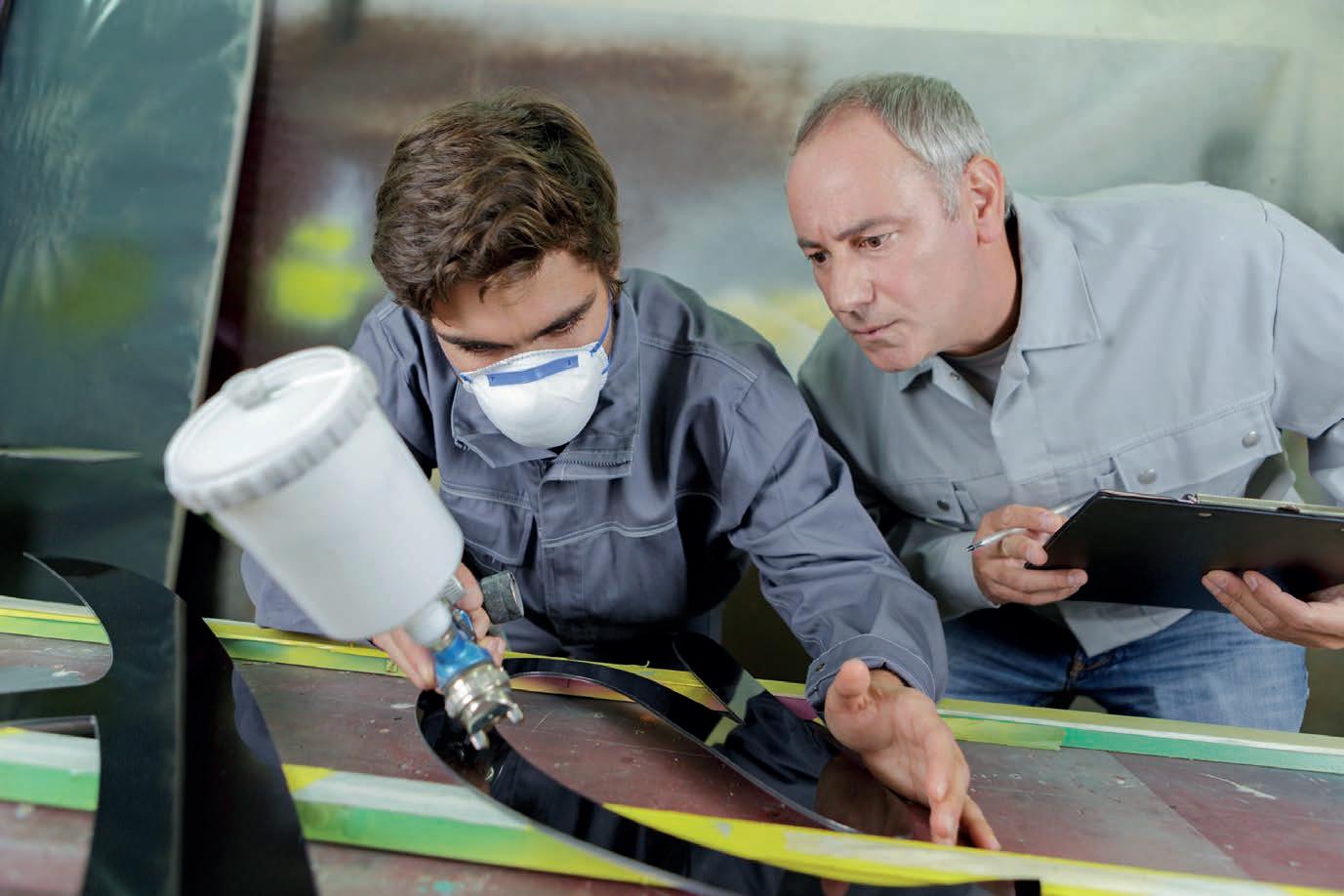
As the skills shortage continues, building a collision business culture that helps attract and retain bodyshop employees is vital. A US panel shares their ideas.
While a slowdown in auto claims count has taken some of the pressure off US shops need to recruit and retain technicians, one industry survey earlier this year found only one-third of shops in the United States (and only 16 per cent in Canada) were fully staffed with no job openings.
Against that backdrop, a panel of collision repairers at the recent Collision Industry Conference (CIC) in Richmond, Virginia, shared how they’ve tried to build a positive culture within their business that fosters employee motivation, career growth and loyalty.
“I think the main thing is to involve your team,” Barry Dorn, who recently sold his Virginia collision repair business, says. “There are so many companies that don’t plan out the employee’s career path or know the destination they want to ultimately get to. We assume that we know where they want to go, and that they should know how to get there. We want them to do what they want to do because that’s where they’re going to be most proficient. But you have to support them every bit of the way, and you have to help guide them. You have to mentor them. So many shops don’t have those
mentors in place. So [employees] end up learning from someone they shouldn’t learn from. Let’s put the right folks in place to help them. They’ve got to know that we care about them and their future. Knowing them as a person makes a really, really big difference.”
Michael Bradshaw of K&M Collision in Hickory, North Carolina, says he similarly takes a team approach within his business, paying technicians hourly, for example, with incentives based on what the entire team produces.
“We have daily meetings as a team, to try to foster communication within the team,” Bradshaw says. “We do things outside of the shop together. We’ll have a retreat where the entire staff spends a couple days, or we’ll do some kind of crazy activity. The last time we went to race go-karts and somebody cracked a rib, so we’ve crossed that one off the list,” he says, laughing.
Like Dorn, he says it’s important to get to know each employee’s goals, what makes them tick.
“And we try to get buy-in from the team by involving them in some of the big decisions,” Bradshaw says. “A big decision for us was going to a 4-day
work week. We didn’t come in and tell everybody, ‘Hey, we’re moving to four days.’ We discussed it with them, we talked about the pros and cons. We took a vote as a team and let them decide if they wanted to do that or not. So I think really our approach is having an open dialogue policy, trying to do things with the team versus to the team.”
Bradshaw says it can be difficult as a single-shop business, no matter how large, to continue to give long-term employees an upward career path.
“While they may love what they do, it can get kind of repetitive sometimes,” Bradshaw says. “You’re doing the same thing every day. Cross-training has been a big thing for us of late. So give a technician the opportunity every so often to do some glasswork or some more mechanical-oriented work or things like that. We’ve found that for our guys, learning things that maybe don’t necessarily apply to their day-in and dayout tasks kind of keeps them engaged. They’re learning something that’s new, and feel like they’re progressing and gaining more knowledge. And it’s also helped when we have somebody who is out, because now we have someone
else who has some experience in that role.”
He also pointed to the importance of consistently enforcing accountability within the shop.
“I care about every individual who works for us, but you also have to understand – and this was a hard one for me – that at the end of the day, you’re their boss and you’re their leader, you’re not their friend,” he says. “So there are going to be times and conversations and meetings that occur where they’re not really going to like you, and you’ve got to be okay with that. Trying to be their friend as their boss has a negative impact on culture because that accountability piece is not there. That for me was something that was really hard and that I struggled with for a long time. Being comfortable in knowing that I have a plan in place, and I know where we’re going, and that if everybody follows the plan, we’re going be where we need to be. And it’s okay if we don’t like each other in that moment, but we still respect each other.”
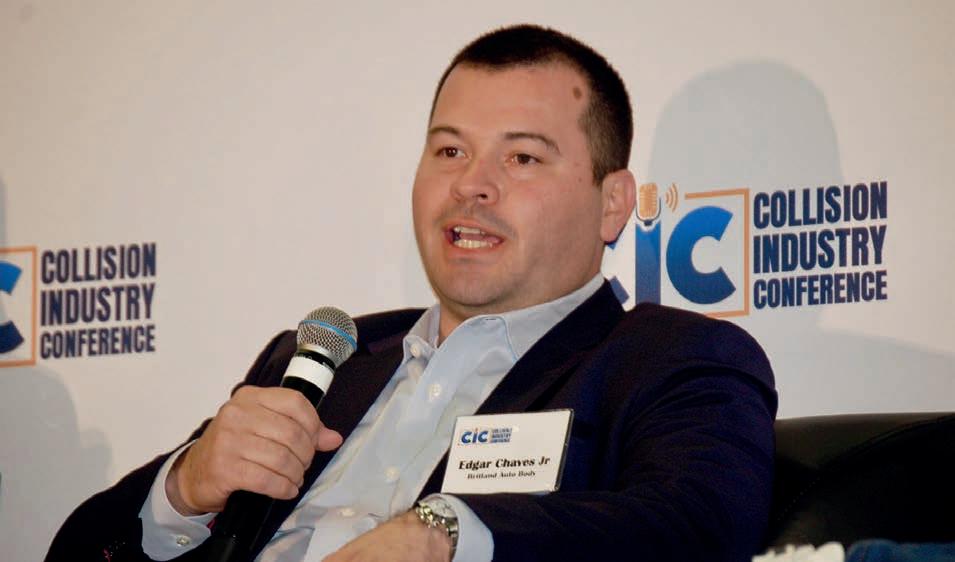
Panelist Edgar Chaves Junior of Britland Auto Body, which operates three shops in New Jersey, says that was something he’s struggled with as well.
“I still take leadership coaching, and offer that to all of our managers as well,” Chaves says. “I always tell everybody, if we can be friends, that’s great, but we don’t need to be best friends. When we have a one-on-one, the first thing I always do is just talk about personal things for five minutes at the start to kind of bring any emotions down. And
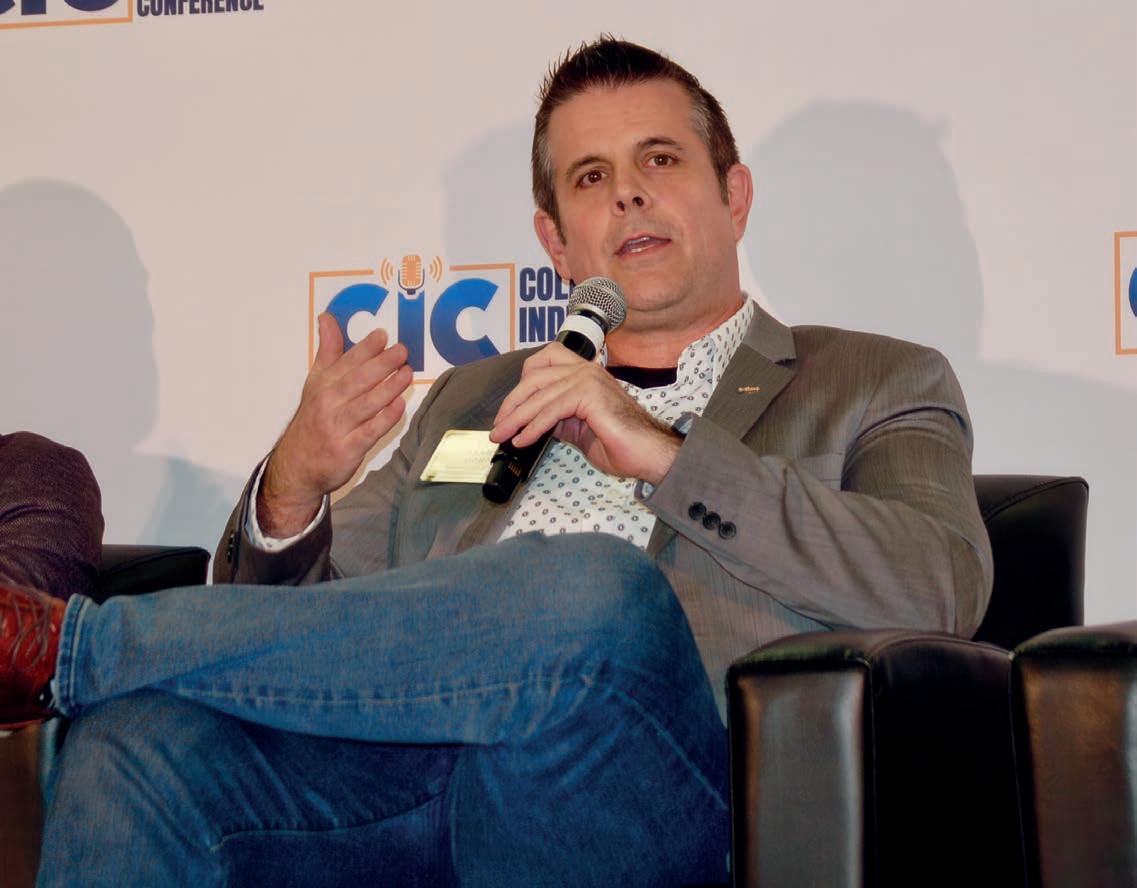
these individuals all trying to achieve this common goal. And you’re going have people that come and go within that team. Sometimes there’s going to be somebody that’s not a good fit that for
facility, if you can’t handle the feedback, this is not the place for you. Because we’re building a team of great people, and to do that, you’ve got to have somebody constantly telling you what you’re doing right, and what you’re doing

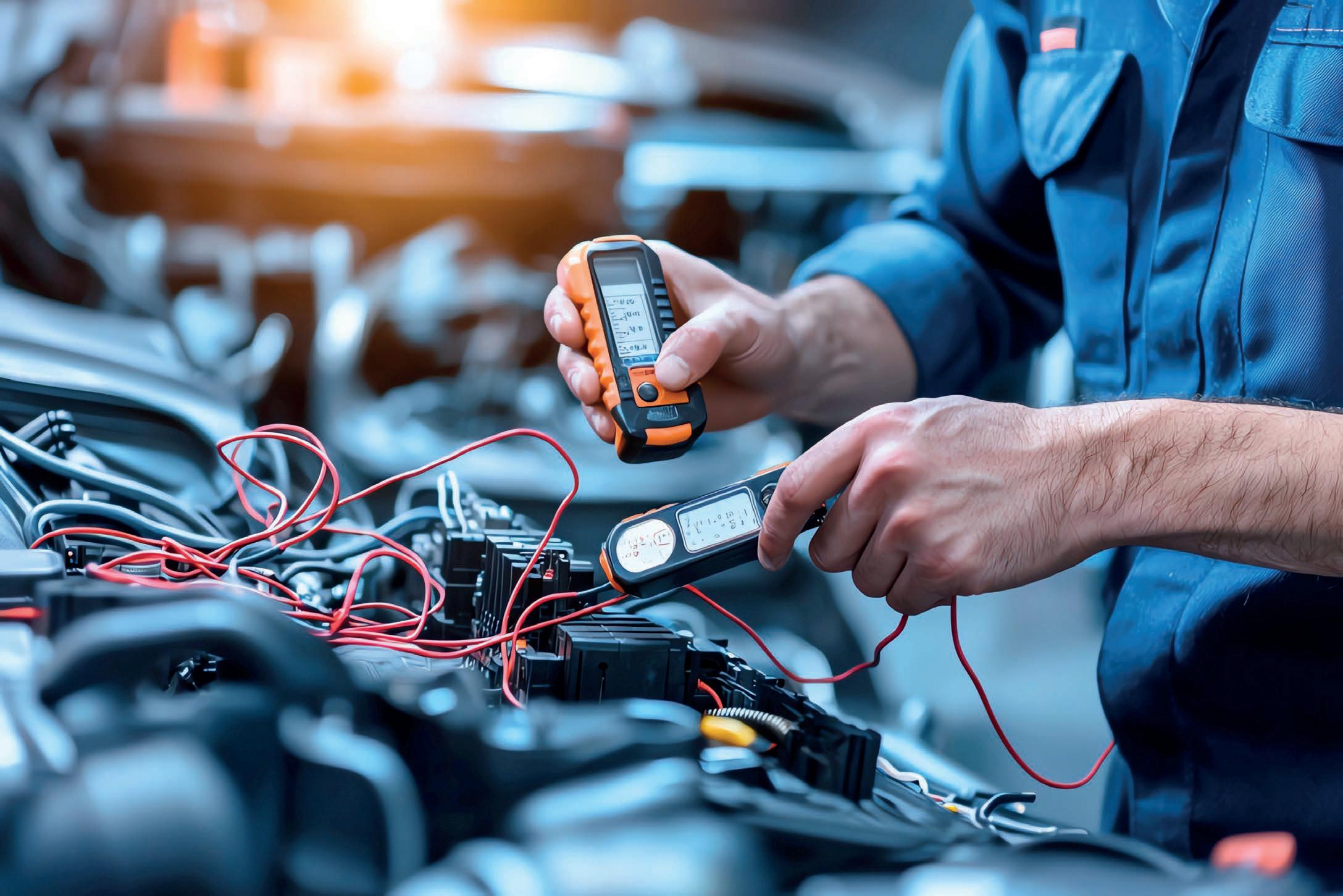
The US collision repair industry offers valuable insights into shifting patterns and emerging trends for Australia. One growing dilemma is that rising repair costs threaten to increase total right-off rates, leaving customers unhappy.
CCC Intelligent Solutions’ Crash Course report for the start of 2025 takes a cross sectional look at the data across the US industry and analyses how this affects both workshop and insurers but also the customers looking to have their vehicles repaired.
It found the share of claims that were flagged total loss reached a record high in 2024, with contributing factors including declining used vehicle values, the ageing US car parc, and a series of catastrophic events including hurricanes.
The report noted the average age of vehicles on the road in 2024 has grown from 11.4 years in 2014 to an estimated 12.7 years in 2024 and is projected to reach 13 years by 2026.
S&P Global reported that the average age of US light vehicles has increased to 12.8 years – 14.5 years for passenger cars and 11.9 years for light trucks.
For those involved in insurance claims, the average age has increased to 7.6 years from 6.9 years in 2020. The average age of repairable vehicles was
6.8 years in 2024 (up from 6.1 years old in 2020) and 10.6 years for total loss vehicles (up from 10.0 years old in 2020).
The share of repairable vehicles seven years or older has increased by nine per cent since 2019. In that year vehicles under three years old represented 38.5 per cent of those repaired but this figure fell to 30.8 per cent in 2024.
The factors driving these trends according to CCC are a mix of positive and negative elements in the automotive industry and the wider economy.
The data found consumers are holding onto their vehicles longer due to improved vehicle durability, increased repair options, and economic uncertainty. Cost of living pressures have exacerbated this impact and delay.
The economic factors of higher prices and financing costs also means buyers are delaying new vehicle purchases or opting for used vehicles. The average new vehicle loan term is almost six years (69 months) contributing to these costs, while the average new vehicle price has increased by $11,000 over the past five years. In the US, the higher Interest rates
also means the average APR for a new vehicle loan is up to 7.2 and 11.3 per cent for used vehicles earlier this year.
Other factors which have contributed to this aging fleet of the last few years are production slowdowns and parts shortages that have limited new vehicle availability and driven new and used car prices.
The CCC report also found, labour rates for EV repairs have been consistently higher than for ICE vehicles over the past five years, with EV labour rates about 30 per cent higher as of 2024.
The average cost of EVs was US$830 more per repair than hybrids and over US$1,030 more than ICE vehicles in 2024. Total parts costs for EVs were US$175 lower than hybrids but still $290 higher than ICE vehicles. Hybrids averaged nearly US$470 more in parts costs compared to ICE vehicles and required more than US$200 extra in labour costs compared to ICE vehicles.
EV repairs also took on average three more hours in labour costs than

hybrid repairs and four more than ICE repairs. Hybrids required 1.1 more labour hours on average than ICE vehicles The report attributed this to the additional complexity of EV components and safety systems.
The number of parts replaced during repairs reflects the differences in complexity.
EVs averaged 22 parts per repair, hybrids averaged 18.5 parts, and ICE vehicles had 15.9 parts replaced on average. CCC found this reflected the intricate nature of EV and hybrid technologies compared to traditional ICE vehicles, which in turn influenced repair time and costs.
The report outline how accessing parts is an ongoing problem.
“The scarcity of parts for certain models may prompt a reconsideration of how they approach insuring these vehicles. Some may opt not to insure hard-to-repair cars, or at the very least, adjust premiums to reflect the additional risk.”
The increasing sophistication of vehicles is having an impact on overall repair costs and premiums.
The complexity of the parts highlighted a wider theme in the report: the more advanced a vehicle, the more intricate its repair needs.
“For instance, modern cars often require breaking clips and other auto components to access a single part, forcing repairers to replace more than what’s visibly damaged.
The CCC Crash Course report found almost one in ten vehicles to be repaired require a diagnostic scan. That has grown almost ten percent since 2023. Similarly in the US , the number of vehicles requiring calibration is almost one in three, 29.9 per cent, a figure that has grown from 21 per cent in 2023.
In Q1 of 2025 this increased again with appraisals that included a scan reaching almost 87 per cent in Q1 2025, while calibrations grew to 32 per cent.
The proliferation of ADAS is continuing and the report quotes the Highway Loss Data Institute estimates to indicate six ADAS systems will be present in half or more registered vehicles by 2028.
“Approximately 76 per cent of registered vehicles will be equipped with rear cameras, 51 per cent with front automatic emergency braking, and over 50 per cent with lane departure and/ or blind spot monitoring capabilities. Even less prevalent ADAS technologies like adaptive cruise control with lane centring and curve-adaptive headlights will come standard in 21 per cent and 14 per cent of registered vehicles, respectively.”
These calibrations are divided by fuel type with the average calibration per claim with diagnostic operation was almost US $550 in Q4 2024. EVs were over $130 less than the industry average and Ice vehicles. Hybrid vehicles averaged almost $80 more than ICE vehicles.
The report identifies that repair costs in the US have doubled in a decade and in many cases minimum liability limits and premiums have also increased.
“As vehicle values rise, so do repair costs, creating a feedback loop where the expense of insuring a vehicle climbs alongside the costs to fix it. For insurers, the cost to repair vehicles is a growing concern. As premium rates increase to cover these and other expenses, insurers and repairers must work together to find ways to mitigate these rising costs.
“Repairing advanced vehicles requires expertise and access to specialised parts and when parts are unavailable or repairs are too expensive, vehicles can become disposable, leaving the industry and consumers in a precarious position.
The increasing write-off rates, where cost of repair exceeds value is exacerbated by parts shortages and delays and can be felt most acutely by the customer. The report notes this is particularly pressing with EVs.
“The dissatisfaction deepens when parts for EVs are scarce or unavailable. In these instances, the repair process gets drawn out, or worse, the vehicle becomes unsalvageable, leaving the consumer without transportation.
“For an industry that’s increasingly customer-focused, the inability to meet consumer needs in this area highlights a major gap that must be addressed. Repairers and insurers need to find ways to manage these costs and avoid situations where their customers are left feeling let down by the process.”
US repairers will be the beneficiary of Australian practical experience with a new partnership in plastic vehicle repairs.
PPG, with its products business SEM, will be the exclusive distributor in the US and Canada of 4Plastic, a leading maker of innovative repair and refinishing products that has been tested and used in Australia, New Zealand and UK.
4Plastic managing director Michael LoPrete says the products have been in development for 18 months, with extensive pilot testing and collaboration conducted with leading MSOs.
“These unique tools and materials were built on the success of the fillerfree plastic repair process already utilised in Australia, New Zealand and the United Kingdom, then brought
to the United States,” LoPete says.
“There have been over one million bumper and headlight repairs completed to date by leading MSOs utilising this filler-free process that the 4Plastic range is built upon.”
LoPrete says the product range allows repaired plastic parts to behave and perform as the OEM originally intended —preserving flexibility, durability and structural integrity without the added weight and fragility that traditional fillers and two-part epoxies add. These are a major cause of rising repair costs for plastics and warranty returns due to repairs failing.
He says 4Plastic’s fillerless innovation is reshaping collision repair standards by delivering smarter, more sustainable
solutions that align with OEM specifications.
PPG business director, allied products, Automotive Refinish Meghan Barrera says it is a timely move as the industry seeks higher standards of training and techniques in plastic repairs.
“It also aligns with the recent launch of Plasnomic and the announcement of the Plastic Repair Alliance Council —a groundbreaking collaboration bringing together some of the most dynamic and respected professionals in the global collision repair industry.”
“This agreement and the development of the plastic repair specialty range represent the latest response to the growing industry demand for safer, higher-standard plastic repair solutions.”
In a new global milestone in overcoming EV charging and range issues, Japan has launched its first large-scale battery swapping network for vehicles.
The project, to be operational later in 2025, is aimed at commercial fleets and can complete battery swaps in five minutes.
The idea is fully charged batteries can be implanted into trucks and vans and minimise downtime for commercial fleets.
The potential of the technology to have applications for passenger vehicles is still evolving but the efficiency of a commercial project such as the one in Japan may point the way.
The Tokyo project is a partnership between Ample, Mitsubishi Fuso, Mitsubishi Motors, and Yamato Transport and will begin with 150 electric trucks and vans at 14 battery swapping stations.
Ample’s technology enables battery swaps in under five minutes.
The EV Report highlighted the barriers to transitioning commercial fleets to electric power including disruption and long charging times but technological, infrastructural, and operational coordination allowed companies to
overcome this and be back on the road with minimum time loss.
Mitsubishi Fuso is using its eCanter trucks, specifically designed for heavy daily use, Mitsubishi Motors supplies the compact Minicab-MiEV, ideal for efficient last-mile deliveries. Yamato Transport, Japan’s largest logistics provider, is pioneering the deployment, testing battery swapping under actual operational conditions.
“Ample’s battery swapping platform
Swapping batteries could be a solution for commercial fleets.
drastically reduces vehicle downtime, offering fleets rapid, flexible charging without changing operational routines. Each station can be rapidly installed, often in less than a week, without extensive infrastructure changes,” it noted.
The project is Supported by the Tokyo government’s Technology Development Support Project for Promoting New Energy The project aligns with Japan’s target of a 46 per cent reduction in greenhouse gas emissions by 2030.
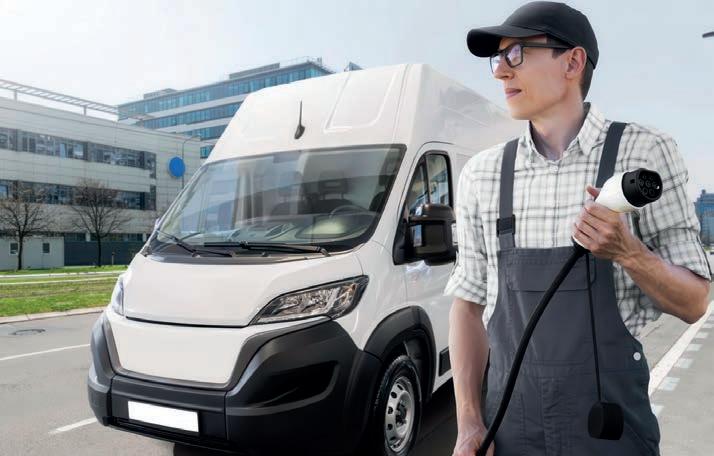
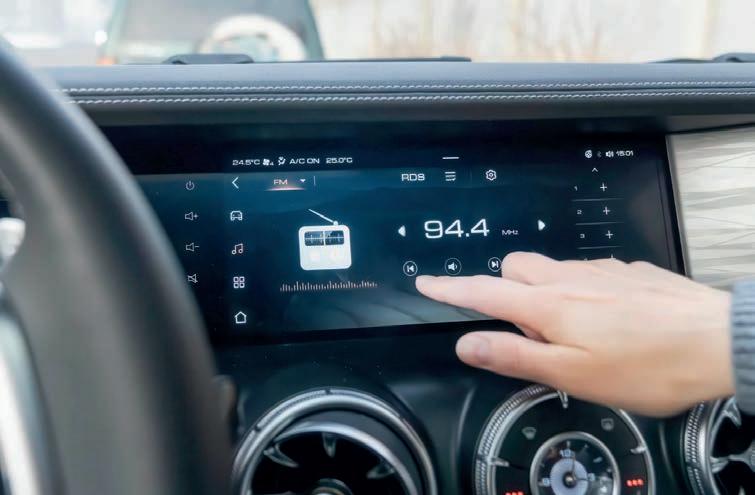
according to a new US study.
The J.D. Power 2025 US Initial Quality Study looks at owner responses after 90 days and found the number of problems had improved slightly but infotainment systems have almost half of new owners complaining about them (42.6 per 100 vehicles).
The annual US Initial Quality Study collects responses from 92,694 purchasers on infotainment; features, controls and displays; exterior; driving assistance; interior; powertrain; seats; driving experience; climate.
It found overall, problems per 100 vehicles had improved to 192 per
counterparts with defect/malfunctionrelated issues more prevalent and their exteriors posing the largest area of discrepancy, with premium vehicles averaging 4.2 more problems than mass market vehicles.
Premium brands have improved to 203 per 100 people from 230 PP100 in 2024, largely driven by Tesla, while problems among mass market brands have increased to 187 PP100 from 181 PP100 in 2024.
The report also found plug-in hybrid electric vehicles (PHEVs) have the most problems, for the first time more
than EVs while hybrids are better still.
New-model launches account for the highest number of problems with 18 new models launched this year, only two have fewer problems than their respective segment average.
It says owners are having more touchscreen-related problems due to the inclusion of non-audio-related features like climate controls, garage door openers and even glove box releases.
“While customers do find the larger touchscreens visually appealing, their functionality within the vehicle is an increasing source of frustration,” says Frank Hanley, senior director of auto benchmarking at J.D. Power.
“Customers are having to tap and swipe through multiple screens to access key vehicle functions like climate settings and built-in garage door openers. Owners find these things to be overly complicated and too distracting to use while driving. By retaining dedicated physical controls for some of these interactions, automakers can alleviate pain points and simplify the overall customer experience.”
It also found suitable cupholder shape and size was a key area of complaint that designers were not successfully keeping up with.
Collision severity has dropped but total losses continue to climb according to a US insurance report.
While the US has a significantly different claims and appeals system than Australia, the trends of the larger industry often prove insightful.
The latest report from LexisNexis Risk Solutions, the U.S. Auto Insurance Trends Report indicates long-term trends reached what they term as “inflection points” in 2024.
It found large increases in older insurance holders shopping around and an increase in legal representation had added to the fluidity of the US auto insurance industry.
Other trends it identified were that claims severity for collision dropped
2.5 per cent in 2024, compared to the year before.
But total losses increased and are now approaching one in three collision claims, climbing two points to 29 per cent of all collision claims.
The rise of EVs is also introducing new risks, it found, as the drivers of the new vehicles experienced a 14 per cent rise in claim frequency.
Almost one in two policy holders were prepared to change insurers, with more than 45 per cent of policies in force shopped at least once by year-end, the report found.
Older and long-tenured policyholders are leading the shopping trend, with consumers aged 66 and older shopping and switching more than any other age
group. Additionally, shopping among long-tenured (10+ years) customers rose 35 per cent year over year, with the rate of high-survivability shoppers hitting 40 per cent by the end of 2024. The report also found a 17 per cent year over year increase in driving violation rates across the US, surpassing 2019 levels.
In the broader insurance market, it found bodily injury severity jumped 9.2 per cent, and property damage severity climbed 2.5 per cent year over year.
Overall Insurer profitability in the US is improving, it found, with direct written premiums growing 13.6 per cent to $359 billion and incurred loss ratios stabilising, enabling some carriers to pursue growth strategies and file for rate decreases.
It may be almost a decade since major car manufacturing left out shores, but Nissan is making new inroads to ensure quality parts are Australian made.
The new Y63 Patrol features a final drive differential housing made at Nissan Casting Australia Plant, in Melbourne.
The expertise and innovation has also opened export opportunities with the Australian made parts featuring in the Y63 Patrol in a host of countries and regions, including the USA, Canada, Egypt, Cambodia, Africa, the Middle East and more. The Nissan Casting Australia Plant has also achieved official Australian Made status, with their towbars, highand low-pressure aluminium castings earning the accreditation.
Roy Morgan research indicates 99 per cent of Australians recognise the Australian Made label and 91 per cent want to see more Australian Made products in the market. To meet the criteria of Australian Made products must undergo their last substantial transformation in Australia.
Nissan Oceania Managing Director Andrew Humberstone says it is a great achievement for the 43-year-old plant “We are proud to announce that the Nissan Casting Australia Plant is producing crucial parts for the brand’s
4WD flagship, the Y63 Nissan Patrol, which is currently sold in left-hand drive global markets and will be available to order in Australia in 2026,” he says.
“It means that the Y63 Nissan Patrol isn’t just made for Australia but partly made in Australia.”
Nissan Casting Australia Plant is home to almost 200 staff working to produce 1.2 million examples of 25 different components for Nissan markets around the world every year.
“Nissan Casting Australia Plant is a success story for the Australian automotive manufacturing space,” says Markus Spindler, the Plant Manager for Nissan Casting Australia Plant.
“But it’s not all about global output. The Nissan Casting Australia Plant team is also responsible for producing some 16,000 Nissan Genuine Accessory tow bars for Australia and New Zealand.”
The plant, working with the development teams in Japan, is also transitioning from producing componentry for internal combustion powered vehicles to advancing its operations to the manufacture of electric and hybrid powertrain components.
NCAP’s has an annual output of 1.2-million-parts including high-pressure die-cast aluminium electric vehicle, e-POWER, Final Drive and ICE-engine components exported around the globe.
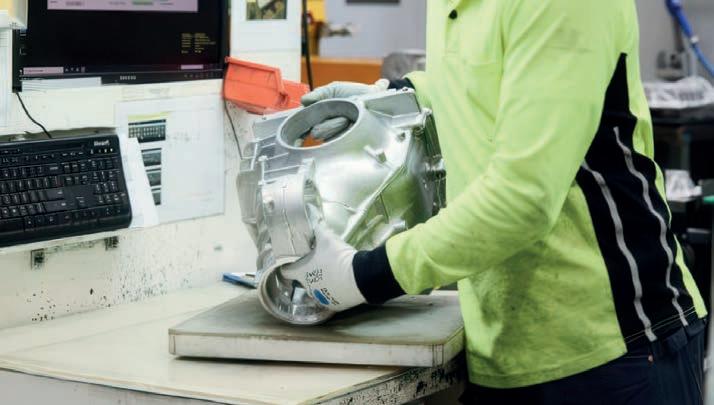
One of the first commercially available electric vehicles has been reinvented and relaunched as Nissan pours 15 years of experience in EV technology into its new Leaf.
The third-generation electric vehicle also benefits from the insights gained through global sales of nearly 700,000 units.
Nissan is aiming to make it a compelling alternative for internal combustion engine buyers with its substantially increased maximum range, enhanced charging speed and a technology suite that makes daily driving easier and enriches owners’ lifestyles.
Models slated for the US for later this year now have a maximum range of 487 km with the 75 kWh battery with
fast charging able to replenish 10-80 per cent of the charge in 35 minutes. The Australian launch date is yet to be announced.
Nissan President and CEO Ivan Espinosa says the Nissan LEAF reflects the company’s commitment to innovation and sustainability.
“The original LEAF helped popularise electric vehicles, and this third generation invites consumers to embrace an EV lifestyle with a range of compelling features. It plays an important role in our Re:Nissan action plan, offering impressive performance, stylish design, and advanced technology.”
“The all-new LEAF embodies Nissan’s Timeless Japanese Futurism design with a distinctive Japanese aesthetic
conveyed in a simple yet powerfully modern way.”
It offers a 0.26 drag coefficient for US and Japanese models, and an even more impressive 0.25 for European variants.
The all-new, 3-in-1 EV powertrain with an integrated motor, inverter and reducer is 10% smaller than its predecessor and features Nissan’s unique motor control, which enhances refinement.
The new motor, paired with a new, high-rigidity motor-mount bracket, supports a 75-per cent reduction in motor vibration compared to the outgoing model. For select regions, newly available Intelligent Distance Control Assist helps intuitively maintain a set distance from the vehicle in front and also optimises regenerative braking.
Mercedes Benz is meticulous about the look of its vehicles and has chosen two leading suppliers to ensure this finish continues into the repair process.
Axalta’s premium brands Spies Hecker and Standox have won the approval for use across the Mercedes-Benz authorised repair network in Australia and the region through to 2028.
Standox was also awarded MercedesBenz Preferred Partner Status in India, Japan and Taiwan.
Mercedes-Benz’s has long-standing relationship with Spies Hecker and Standox in more than 60 countries globally and this has added new areas of growth.
Axalta Refinish Asia-Pacific Vice President Simon Lee says the partnership has spanned 25 years in the region.
“We are honoured to continuously earn the trust and approval of MercedesBenz,” Lee says.
“Our deep global expertise and localised research and development enable us to support Mercedes-Benz in navigating Asian-Pacific diverse markets.”
Spies Hecker and Standox are highperformance coatings that align with Mercedes-Benz’s exacting standards for quality, efficiency, and environmental responsibility.
Axalta supplies a wide range of coatings but also aims to be a strategic partner committed to the business’ success.
Mercedes-Benz has also renewed its partnership across Australia and the Asia Pacific region for the use of BASF’s
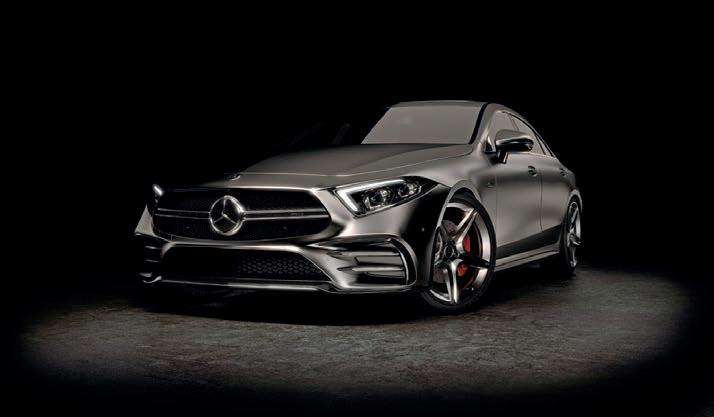
use throughout the Mercedes-Benz authorized repair network in Australia along with a host of Asian countries including China Malaysia, South Korea and Thailand.
The partnership also continues in Japan, where R-M remains a longstanding, trusted brand. In addition, Glasurit has been recognized as a preferred partner in Malaysia and Thailand.
BASF will continue to provide the Mercedes-Benz network with its sustainable solutions including waterborne basecoat portfolio Glasurit 100 Line and the Body Shop BOOST consultancy program powered by Refinity®
BASF Vice President Automotive Refinish Coatings Asia Pacific Susann Kluge says the renewal reinforced BASF’s role as a Global Trusted Partner.
“We are honoured to strengthen our long-term partnership with MercedesBenz, a testament to our strong collective strategic focus in the highly competitive
commitment to providing cutting-edge solutions while advancing sustainability and digital transformation.”
“This renewal underscores BASF’s dedication to innovation and excellence, ensuring exceptional service for Mercedes-Benz customers across the Asia Pacific region.
In addition to the contracted markets, BASF continues to service Mercedes-Benz and their certified shops in Hong Kong SAR, Indonesia, Mongolia, and Singapore.”
“This renewed partnership reflects the strength and trust of our global collaboration with Mercedes-Benz, built on shared values of innovation, sustainability, and excellence,” BASF Global Strategic Account Management for Automotive Refinish Coatings Michael Hill says.
“We are proud to support Mercedes-Benz and deliver the highest standards of quality and efficiency across their repair network worldwide.”
EV specialist Polestar is setting new benchmarks for safety with the official safety tester and helping to turn around perceptions about new age vehicles.
In the latest round of ANCAP tests, the all-electric Polestar 3 scored a very high level of protection offered to child occupants, scoring 94 per cent – the second highest Child Occupant Protection score achieved to date.
Assisting with this high score was a full four out of four points for the presence and effectiveness of its child presence detection system (CPD) which offers direct feedback to the
driver if child occupants are left in an unattended vehicle.
“Polestar delivers a stand-out for child occupant protection – both in its crash impact protection and proactive features like its direct child presence detection system,” ANCAP Chief Executive Officer, Carla Hoorweg says.
The Polestar 3 achieved strong results for Adult Occupant Protection (90 per cent) through its performance in each of the physical crash tests. It also offers a comprehensive range of active safety features including reverse autonomous emergency braking which operates
in low-speed driving environments to reduce the risk of driveway and carpark collisions involving adult and child pedestrians.
The Polestar 3 is equipped with an active bonnet that deploys upon pedestrian impact to provide increased clearance from the engine bay. Testing showed good protection over most of the bonnet and adequate results on the windscreen, though poor protection was observed near the windscreen pillars and along the front edge of the bonnet, and protection of the legs and pelvis was mixed.
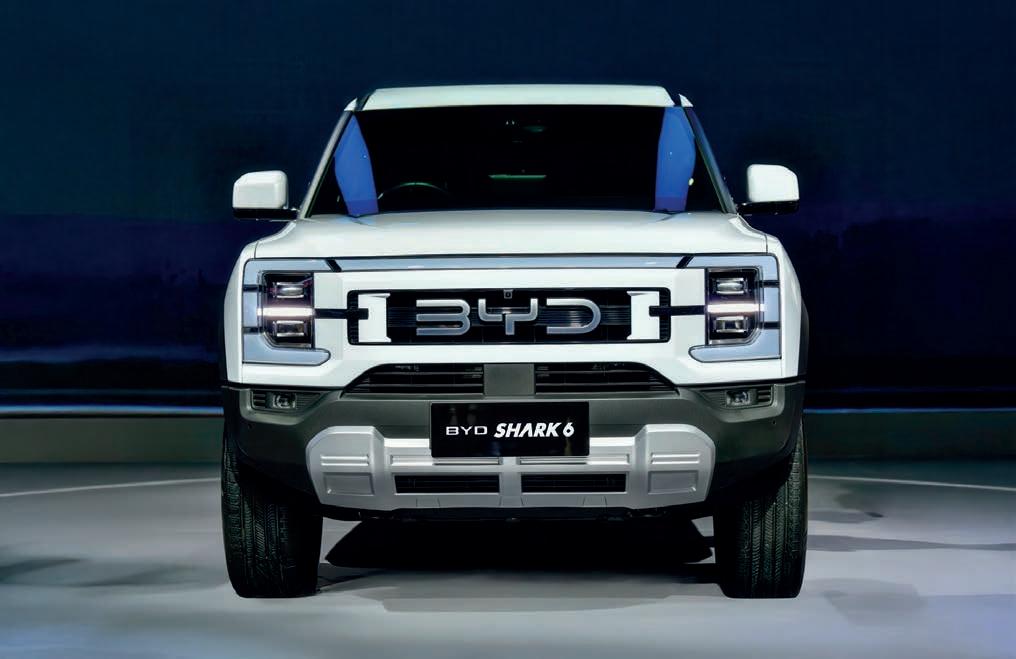
New energy vehicle specialist BYD is leading a surging pack of Chinese makers that now make up a growing share of Australia’s car parc and have consolidated its place as third largest country of origin.
BYD continues to break its own records and by midyear has reached
number five in June for most popular makers, when it achieved 6.7 per cent market share in record time.
BYD has already eclipsed the 20,458 vehicles sold in all of 2024, in the first six verified months of 2025. For the year, it sits just behind another Chinese maker GWM with 3.8 per cent of the total market.
GWM the brand of Great Wall Motors is one of the Chinese brands experiencing a massive surge in sales in Australia.
The company specialises in utes and SUVs and by the middle point of the year was ranked seventh in the overall brands with 4.1 per cent of the new vehicle market in 2025.
In June GWM posted its best-ever monthly result in June since entering the Australian market 16 years ago.
GWM delivered 5,464 vehicles in June 2025, a 30.9 per cent increase over the same month last year.
GWM has had cumulative sales of 25,189 up until June, exceeding all previous half-year benchmarks, with expectations to deliver
more than 50,000 units for 2025.
GWM could boast of sales up 17 per cent to the midyear point against an industry that has declined by 3.7 per cent over the same period. While ICE sales are strong, hybrids and the recently introduced PHEV models remain key pillars for growth, as more Australian buyers embrace sustainable mobility without sacrificing performance.
GWM ANZ Chief Operating Officer John Kett says the results saw record sales performance across all regions in Australia, indicating the brand’s strong appeal in all corners of the country.
“Delivering this level of growth in a competitive and constantly evolving market is a direct reflection
In June, BYD delivered 8,156 vehicles — a 368 per cent increase from the 1,743 vehicles delivered in June last year and an 70 per cent increase on its previous monthly record of 4,811 vehicles, set in March this year.
Since it its launch in October 2024, the BYD SHARK 6 also surpassed 10,000 in total sales and in June was the fourth most popular vehicle.
June also marked the final month of EVDirect’s role as BYD’s local distributor, after playing a significant role in launching BYD passenger vehicles and expediting BYD’s growth in the Australian market, rapidly building the brand and laying a strong foundation.
“With each month, you can see just how popular BYD vehicles are becoming in Australia because you can see them on our roads,” says BYD Australia COO Stephen Collins.
“As we continue the transition to a fully-factory backed operation, we commend the foundation laid by our distribution partners as we strive to ensure this strong growth continues.”
“We set out to bring affordable, worldclass EVs to Australians and grow the BYD brand as fast as possible,” EVDirect CEO Luke Todd says.
“What we’ve achieved in just a few short years is remarkable, and now, as we hand over to BYD directly, we’re confident the momentum will only accelerate from here.”
of the dedication shown by our dealer network, partners, and of course our GWM staff. 2025 was always set to be more competitive than 2024, with new brands entering and established players refusing to yield. GWM won’t be dialling back in the second half — we’re maintaining EOFY pricing to reinforce our commitment to being a price accessible brand. From July 2025, we’ll also accelerate the rollout of our next-generation technology, led by innovations in HEV, Hi4, and Hi4T PHEV systems across key models like the Cannon Alpha, Haval H6, and Tank 500.”
The Cannon ute, the Cannon Alpha PHEV, Haval H6GT PHEV, and the Tank 300 are among its strong performers.
Hyundai is playing its part in overcoming perceptions of EV range anxiety with some of its vehicles showing the longrange journey is possible, with road trips completed in remote areas.
Hyundai IONIQ 5 with a 504-kilometer range owned by Patrick Nadeau travelled 19,743 kms from Hyundai’s Canada’s headquarters in Markham, Ontario, to Tuktoyaktuk, Northwest Territories and reached the Arctic Ocean.
The charity raising road trip indicated the feasibility of long-distance EV travel across remote landscapes and showcased the IONIQ 5’s reliability.
per session at a total cost of $1,403.13.
The trip was part of Hyundai Hope on Wheels program and generated funds for paediatric cancer patients.
The Hyundai reportedly also carried 200kgs of gear, including filming equipment and a spare tyre. The IONIQ 5 completed the journey without issues, demonstrating its durability and practicality.
The IONIQ 5 ranked as the top brand for EV consideration in Canada per the latest J.D. Power report. The IONIQ 5, a multi-award-winning vehicle, has earned accolades like World Car of the Year and
1,090-kilometer journey from Stuttgart to Rome with two 15-minute charging stops.
The journey highlighted the vans capabilities under real-world conditions as it crossed the Alps and navigated tight Italian streets.
This test aimed to highlight MercedesBenz’s commitment to delivering reliable, high-performance electric vehicles for families and adventurers.
Previous tests included a trip to Norway’s North Cape and cold-weather trials in Sweden during winter.
The company says the real-world evaluations, combined with digital
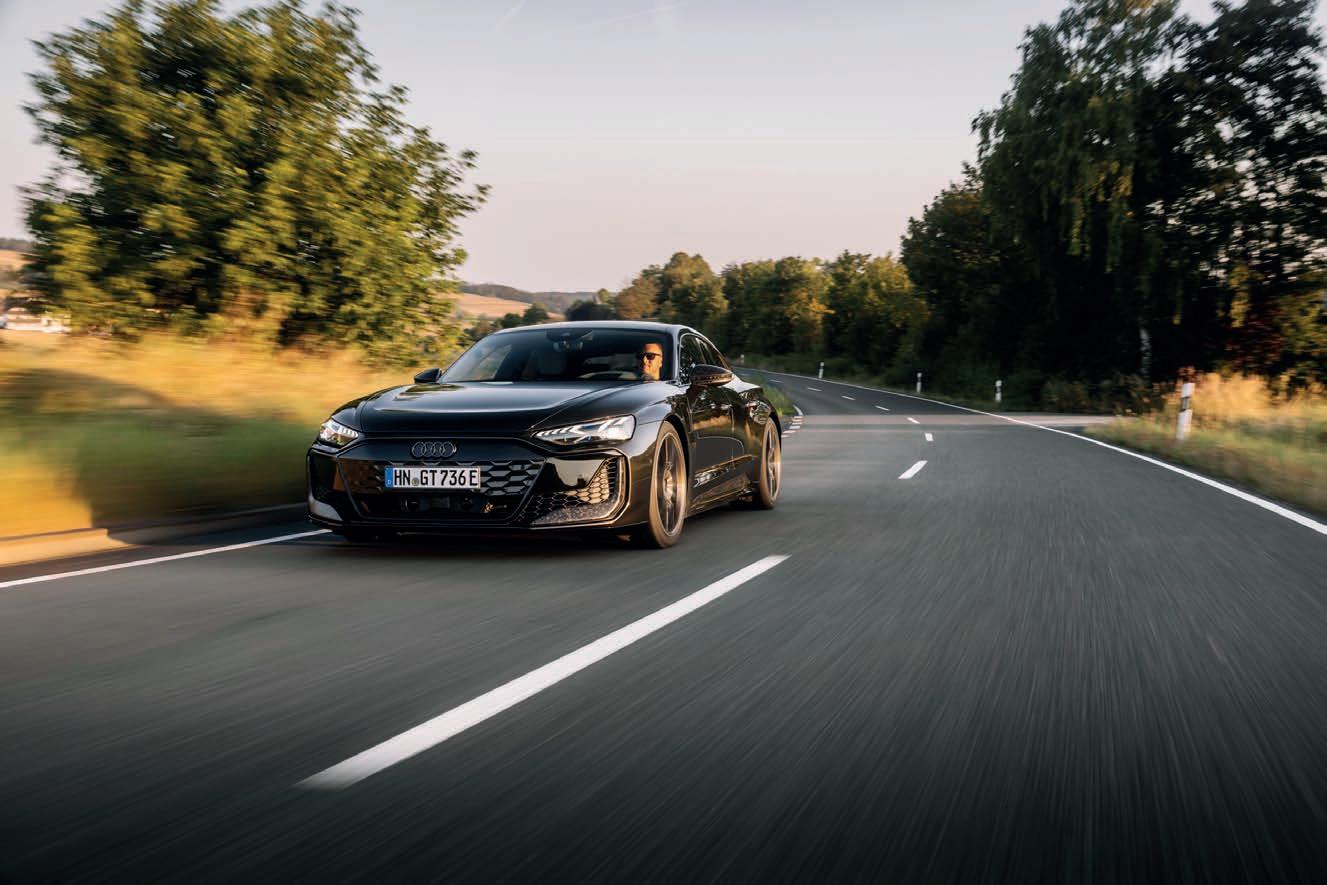
boost mode.
The range has three models – the Audi S e-tron GT, RS e-tron GT and RS e-tron GT performance. The entry-level S e-tron GT has 435kW or 500kW on boos. It boasts 740Nm of torque and hits 100km/h from standstill in just 3.4 seconds. The new RS e-tron GT delivers 500kW and
charging from 10 to 80 percent in just 18 minutes at a high-power charging outlet.
“Our new all-electric GT models epitomise the Audi philosophy and are perfect examples of Vorsprung durch Technik,” says Audi Australia Director, Jeff Mannering.
“Audi has never been a brand to rest
400kW and the coasting recuperation increased to 0.6m/s2 and 1.3 m/s2 (previously 0.3 and 0.6). The weight of the high-voltage battery has been reduced while simultaneously increasing its energy density despite its higher energy content of 105 kWh gross, weighs 9kg less.
with Cliff Chambers
WE ALL had them, the former neighbour or mum’s old school friend who might not have been an actual relative but still qualified for the courtesy title of ‘Aunt’.
When coming for afternoon tea, these ladies inevitably dressed well and would often wear a hat. They always brought a ‘plate’ of something sweet plus, if the kids were lucky, some small chocolate bars or packets of jelly babies.
Aunty’s car would invariably be tidy as well, usually not too new but showroom shiny. Almost always it was a four-cylinder, although one glamorous honorary Aunt loved her huge 1950s
Jaguar sedan. Usually the cars were chosen for being frugal on fuel and easy to park. By the 1970s, automatics were gaining favour but earlier models were invariably manual.
Older four cylinder cars rarely get much coverage via Classic vehicle chat rooms or on specialist websites, but maybe that should change. Many people might aspire to own a muscle car, but in a world where carbon-based fuels are going to become scarce and more expensive, the less of it you need to enjoy your ‘hobby’ car the better. Also, these are the cars more likely
remain in use once the ‘guzzlers’ become liabilities.
All of the ‘Aunty’ cars that made it into our Final Five have sold in big numbers on the global stage. Mechanical parts remain available and in some cases, replacement panels are still being produced. Any of our chosen Five, even the Minor and Beetle, will maintain 100km/h in the left lane of the freeway and won’t hold anyone up through the bendy bits providing the driver knows what they are doing. Best of all, you can still buy excellent examples of all five for $25,000 or less.
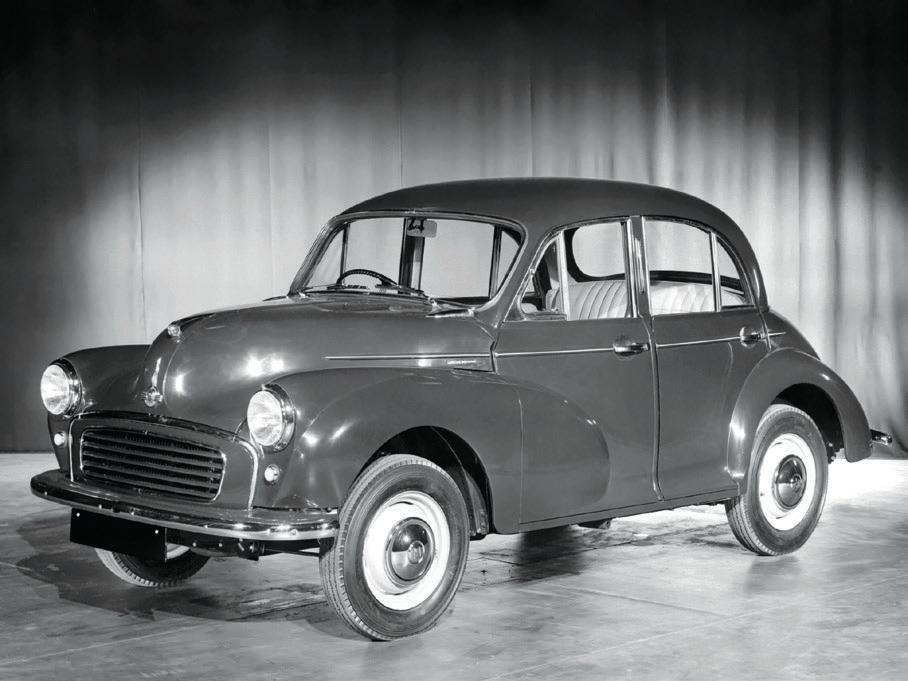
DESIGNER ALEC Issigonis intended his ‘Mosquito’ small car to have front-wheel drive and a flat-four engine, but more conservative forces within the Nuffield Group decreed it would have an upright engine and rear-wheel drive. That didn’t stop Morris and subsequently BMC selling over 1.6 million of them and making the Minor Britain’s best-selling car.
Early Australian versions had side-valve engines and didn’t perform well at all, but adoption from 1957 of BMC’s A Series engine pushed top speed to 115km/h, with 0-97km/h in a bearable 26 seconds. Many Minors served as family transport, with a back seat that would fit a trio of under 12s easily and three teens at a squeeze. Owners found the Minor comfortable and convenient and even loved the long spindly gear lever. It attached to a manual gearbox that was prone to whining but the gears snicked in easily with barely a dip of the clutch.
Issigonis ‘jelly mould’ shape didn’t really stand the test of time and by 1963 when Australia’s Minors were replaced by the very modern Morris 1100 it was looking vintage. They aren’t expensive either, with $12,000 buying a very usable 1000 sedan or locally bodied utility.
These may retain their original engines but have been repowered with Datsun A12 engines (which owe their origins to the BMC A Series) Toyota or Mazda motors.
DOG BONE’ Escorts, as these compact Fords are known due to the shape of their grilles, will be harder than most in this selection to find, but worth the search.
Britain saw its first Escorts in late 1968 and every other small car was in immediate trouble. The boxy little sedan had plenty of room for its size and a big boot. Australia saw them with 1.1- or 1.3-litre engines, and also for a short time as the troubled 1.6-litre Twin- Cam. Surviving cars will likely be 1.3-litre Super or XL models which sold locally from 1970-75. Some were automatic but the fourspeed manual was more fun and also better on fuel.
Early Escort sedans had two doors, but after 1971 four-door versions became available. Searching the market today reveals very few Mark 1 Escorts. Nor does Britain, where fewer than 800 Mark 1s from a total 228,000 produced between 1968 and 1974 are known to exist. Australia with around 65,000 built in the space of five years and a climate where rust is less rampant than in the UK should see proportionally more survivors, but that probably still means fewer than 250 sedan and vans from which to choose. Well preserved 1.3s can make $25,000.

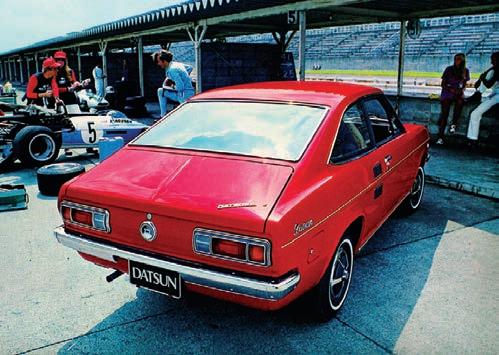
DATSUN BEGAN building its three-step range – four counting the sports cars – during the 1960s, and by 1970 had the six-cylinder 2300 sedan, four-cylinder 1600 and the compact 1200.
Aunties would almost always choose the sedan, although there was a stylish 1200 coupe for just a little more money. Those who needed a small load carrier could choose from a 1200 station wagon and also a utility which would stay in production until 1985.
The 1200s were basic inside but comfortable enough for cars of their kind. Automatic transmission was optional and while most had drum brakes, the coupe came with discs standard at the front.
The 1200 when new went blow for blow with the Corolla and Mazda’s 1300 and plenty of Datsuns were sold. From a total of around 30,000 there should be numerous survivors, but most survivors are 1200 utes which often have been heavily modified.
Sedans and wagons are less common and generally cheaper than the commercial version. Sedans and wagons in good condition cost less than $20,000 but a better long-term prospect because of scarcity might be the 1200 coupe. These in common with excellent, original utilities can cost $30,000.
HARD TO BELIEVE but the first Corolla I experienced would now be almost ready to celebrate its 60th birthday. It was a 1967 model and driven from new by a friend of the family who could not wait for it to replace her troublesome Hillman Imp.
Australia’s earliest Corollas came from the K10 series, with 1.1-litre motors and four-speed manual gearbox. From 1970 there was a 51kW, 1.2-litre SE version that offered an appalling two-speed Toyoglide transmission.
These Corollas could also be specified with air-conditioning, making the SE one of very few small cars to offer this feature. Auto Corollas with the a/c operat ing were also likely to be the slowest accelerating cars in the under-1300cc class.
Get an SL with manual gearbox though and the 51kW Corolla offered decent performance with excellent economy. Early Corollas survive in decent number and appear regularly in the used market. At $15- 20,000 in good condition, these Corollas offer plenty of value and easy maintenance Spend an extra $10,000 and you might snare an early Sprinter coupe. These were available in our market from 1968 until late 1970 and sold in small numbers, becoming desirable in the eyes of Toyota enthusiasts. Very good genuine Sprinters make $30,000.
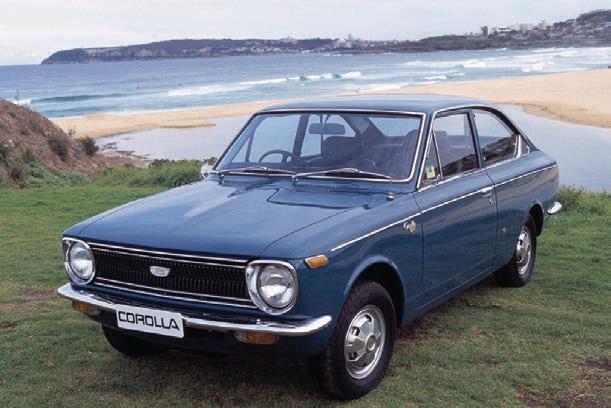
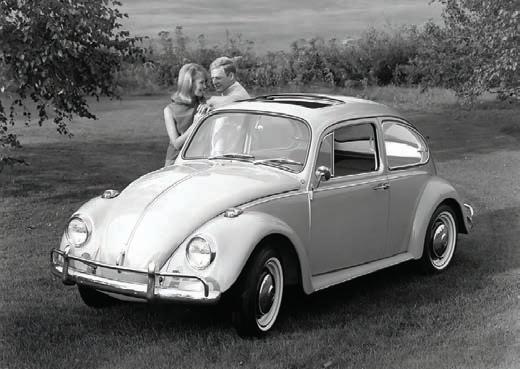
VOLKSWAGENS ARRIVING here in the early 1950s were given mean, racist names by people who didn’t like their German origins. Then, when driven by people with names like Perkins and Ferguson, they started winning trials and Australians started warming to the tough little bug(gers). Early Australian Beetles had 1147cc engines and 27 hardworking kilowatts.
During the 1960s, local cars gained a couple of extra kWs plus more robust bumpers, proper indicators replacing flip-out trafficators and a better heater/demister. Still 6V though, so if you used the lights and wipers simultaneously then hit the indicator the radio stopped working.
The Bug to get if you intend driving it frequently or long distances will be a 1968-76 restyle, with bigger headlights, tail-lights and windows These had 12V electrics and 1.5- or 1.6-litre engines and you can even get them as an auto. Later versions even let you refuel without opening the boot.
If your reason for contemplating a Beetle involves making money, then the older you can go and most authentic car you can find will deliver the best chance of future profit.
Anyone who bought their early Beetle two to five years ago will need to hold on for a while in order to recover the outlay, but if you’re new to the market then $20,000 should secure a good 1958-67 car.
with Trevor Schwenke
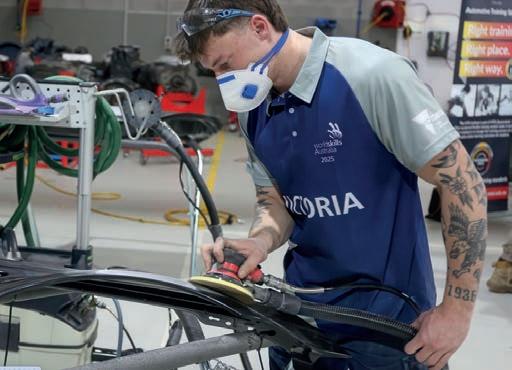
If you’ve spent any time recently inside a workshop, classroom, salon, kitchen or tech lab, you’ll know this: Australia’s future is in capable hands.
As CEO of WorldSkills Australia, I’ve had the privilege of seeing firsthand what’s possible when young people are empowered through skills—real, practical, high-quality skills that don’t just build careers, but build industries, communities and innovation.
Recently, we brought together the country’s most talented young trades and technology professionals for the 2025 WorldSkills Australia National Championships & Skills Show in Brisbane. It was a celebration of excellence, yes—but more importantly, it was a reminder of what’s possible when the right people, training and support come together.
Beyond the competition floor
Events like these go far beyond medals and rankings. They create moments that shift perceptions. We saw school students trying their hand at trades they’d never considered. Parents asking questions they hadn’t thought to ask. Educators reconnecting with the ‘why’ behind their teaching.
At its heart, WorldSkills is about changing the way Australia sees vocational education. And we’re seeing progress. More and more, we’re
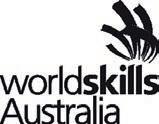
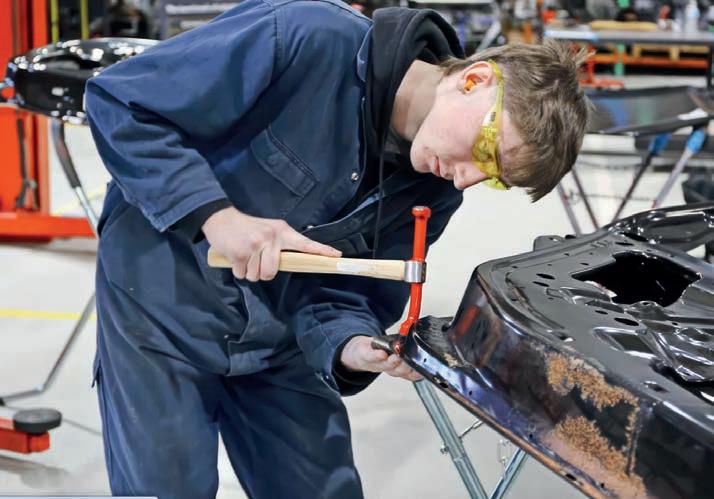
Now, we shift our focus to the next chapter: preparing a new generation of Skillaroos to take on the world.
These outstanding individuals, selected from among the highest performers at our Nationals, will undertake intensive training with some of the country’s best industry experts. Their technical ability is remarkable—but just as impressive is their drive, resilience, and commitment to continuous improvement.
In 2026, they’ll travel to Shanghai for the 48th WorldSkills Competition, where they’ll represent Australia on a global stage. It’s a life-changing opportunity— for them, and for all of us who believe in the power of skills.
To get there, we need more than talent. We need partners.
We’re calling on industry leaders, training providers, and organisations who believe in a future driven by skilled professionals. By partnering with WorldSkills Australia, you’re not only supporting a team—you’re helping
shape the future of Australia’s workforce. You’re investing in innovation, resilience,
And in return, you become part of a global movement that recognises the power of skills to change lives.
If you’re ready to be part of that movement, we’d love to hear from you.
Together, we can ensure that skills remain at the centre of our national conversation—not just during competition season, but every day.

Trevor Schwenke CEO, WorldSkills
Australia



THERE’S A BETTER WAY TO GET QUALIFIED AND TRAIN YOUR STAFF AND APPRENTICES.
Flexible, on-site automotive training that works around the needs of your business.
One-on-one on-site
At your workplace, getting real work done.
No block training
Training that works around your schedule.
Year-round intake
Flexibility to get started anytime.
Know where your apprentice is up to.
Speak with us today:
Call 1300 MTA NSW (1300 682 679) Visit mtatraining.com.au
We offer comprehensive apprenticeship training in NSW, ensuring your team receives top-tier education in:
• Paint and Panel
• Light & Heavy Vehicle Mechanical
• Automotive Electrical
• Motorcycle Mechanical
• Sales and Administration
• Electric and Hybrid Vehicles
• Automotive Air-Conditioning
• Steering and Suspension Technology
• Automotive Tyre Servicing Technology
• Automotive Underbody Technology

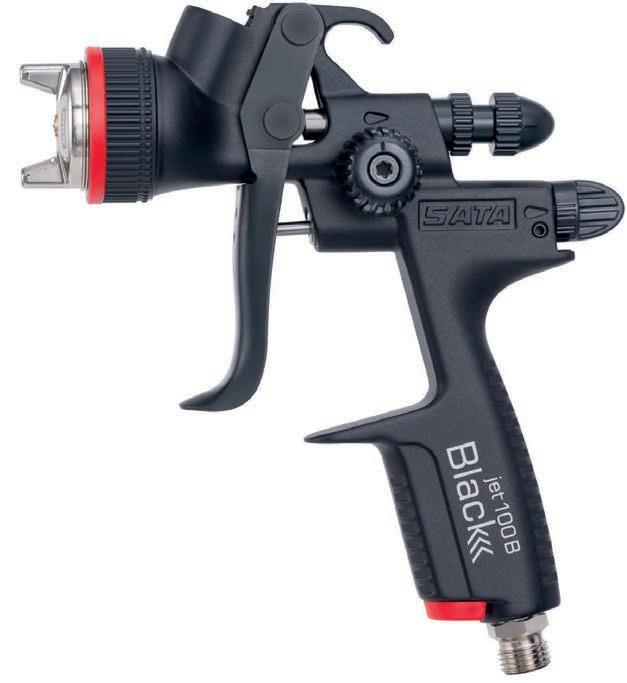
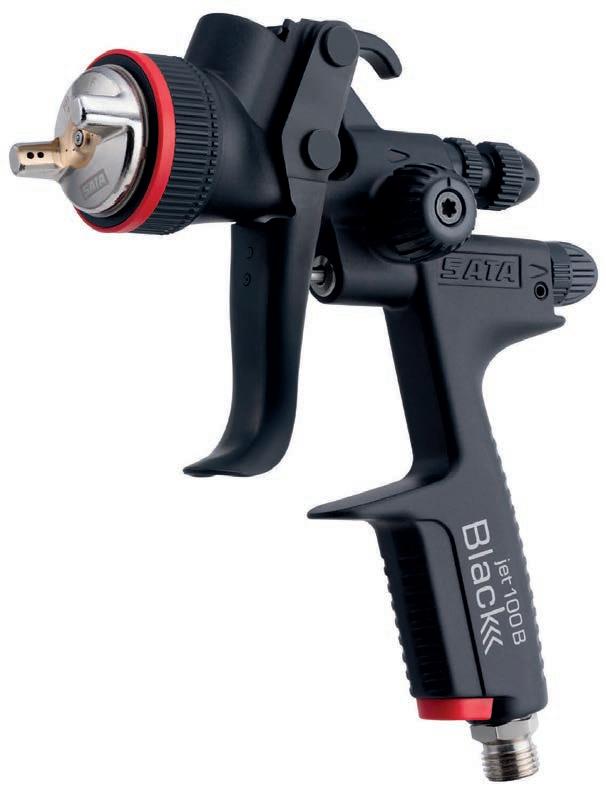
Win a jet X!
The opening act that really delivers - the 'Filler Brothers'. Our stars for applying primer and filler - the limited edition SATAjet 100B Black. Finished in the new SATA premium black, it's offered in RP 1.4, 1.6 and 2.0. Available from participating SATA distributors but only while stocks last.
Contact
Order a SATAjet 100 B Black for your chance to win one of 20 jet X DIGITAL ready spray guns! Don’t miss your chance!
www.sata.com/100b-black

